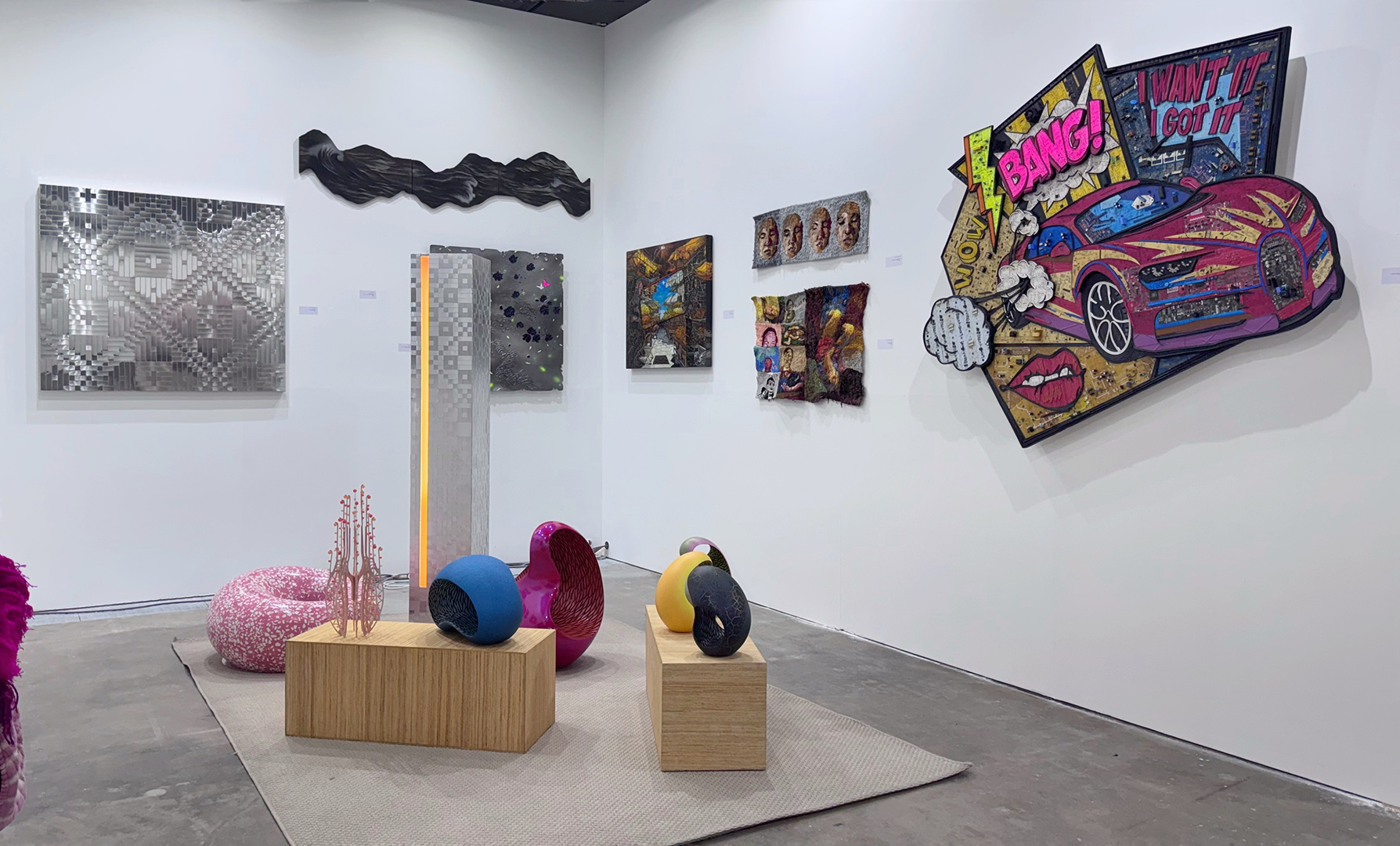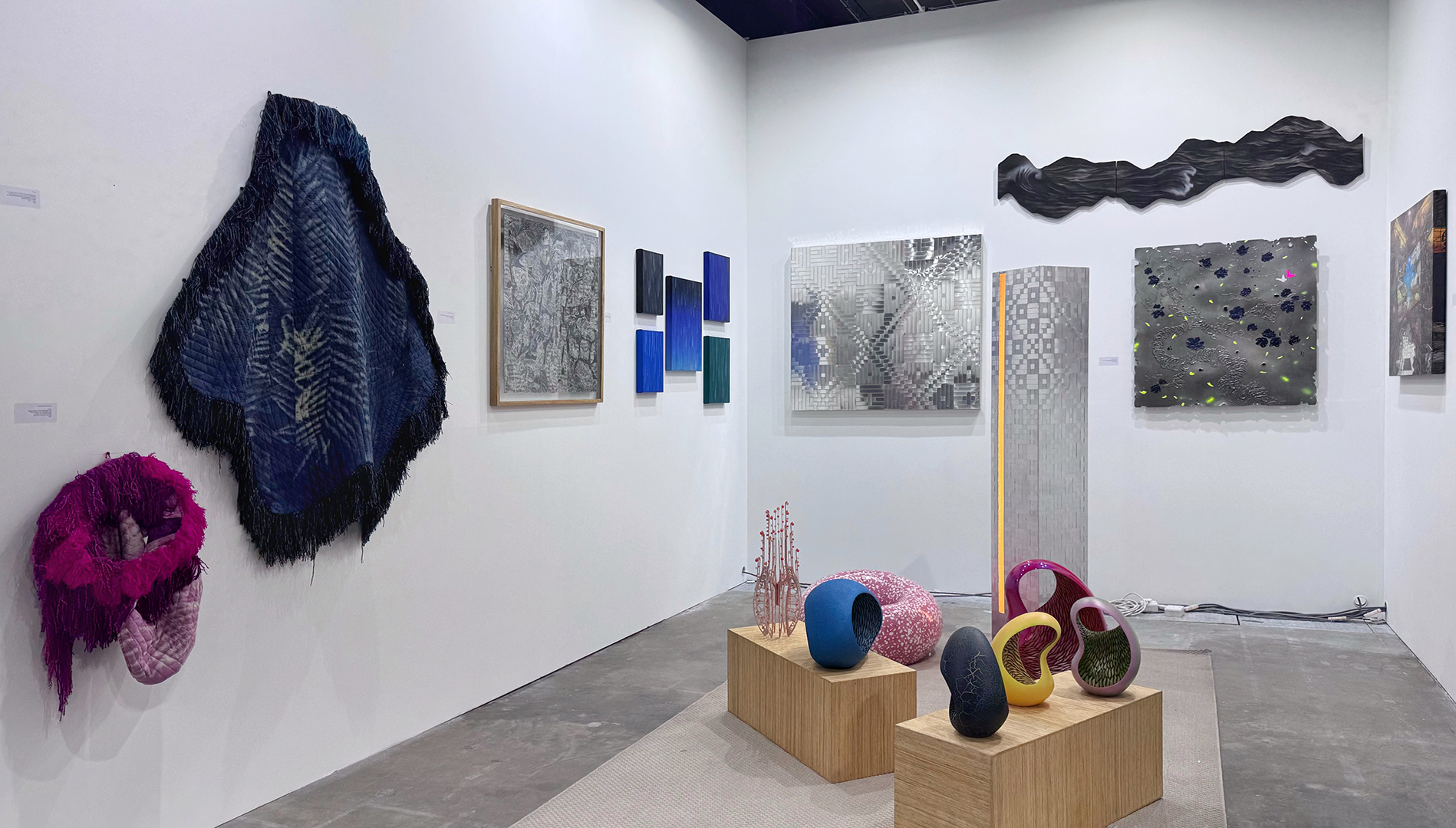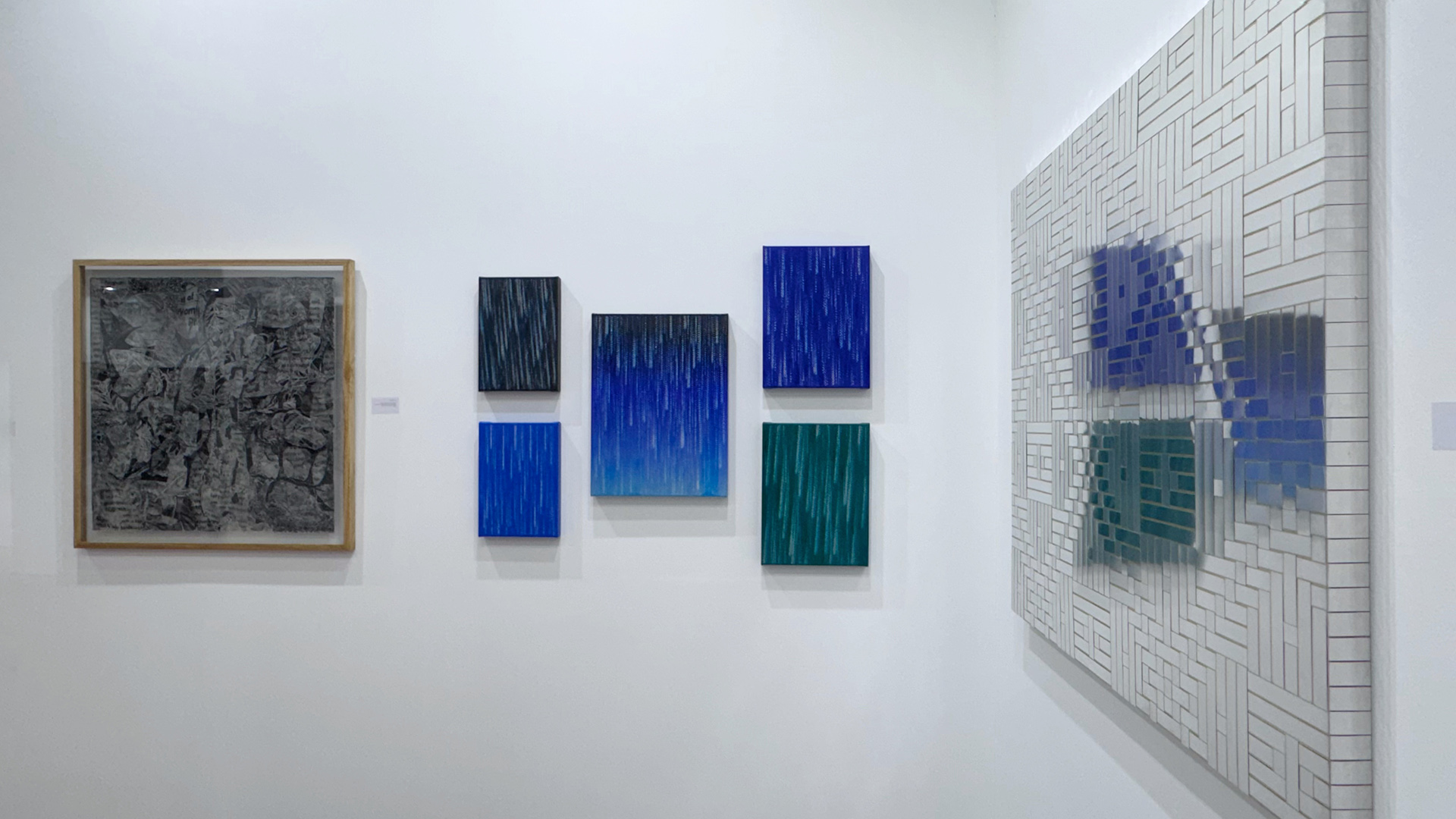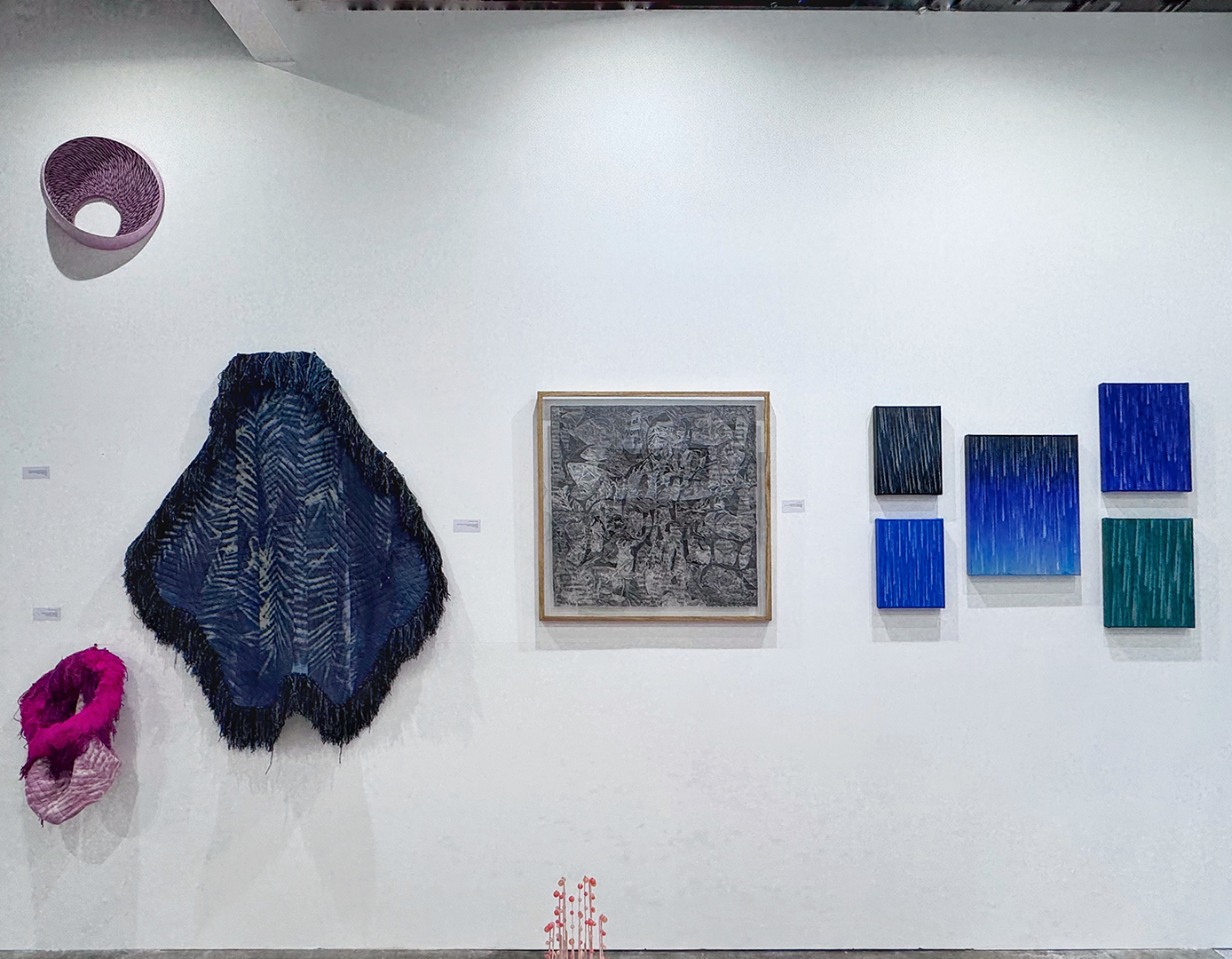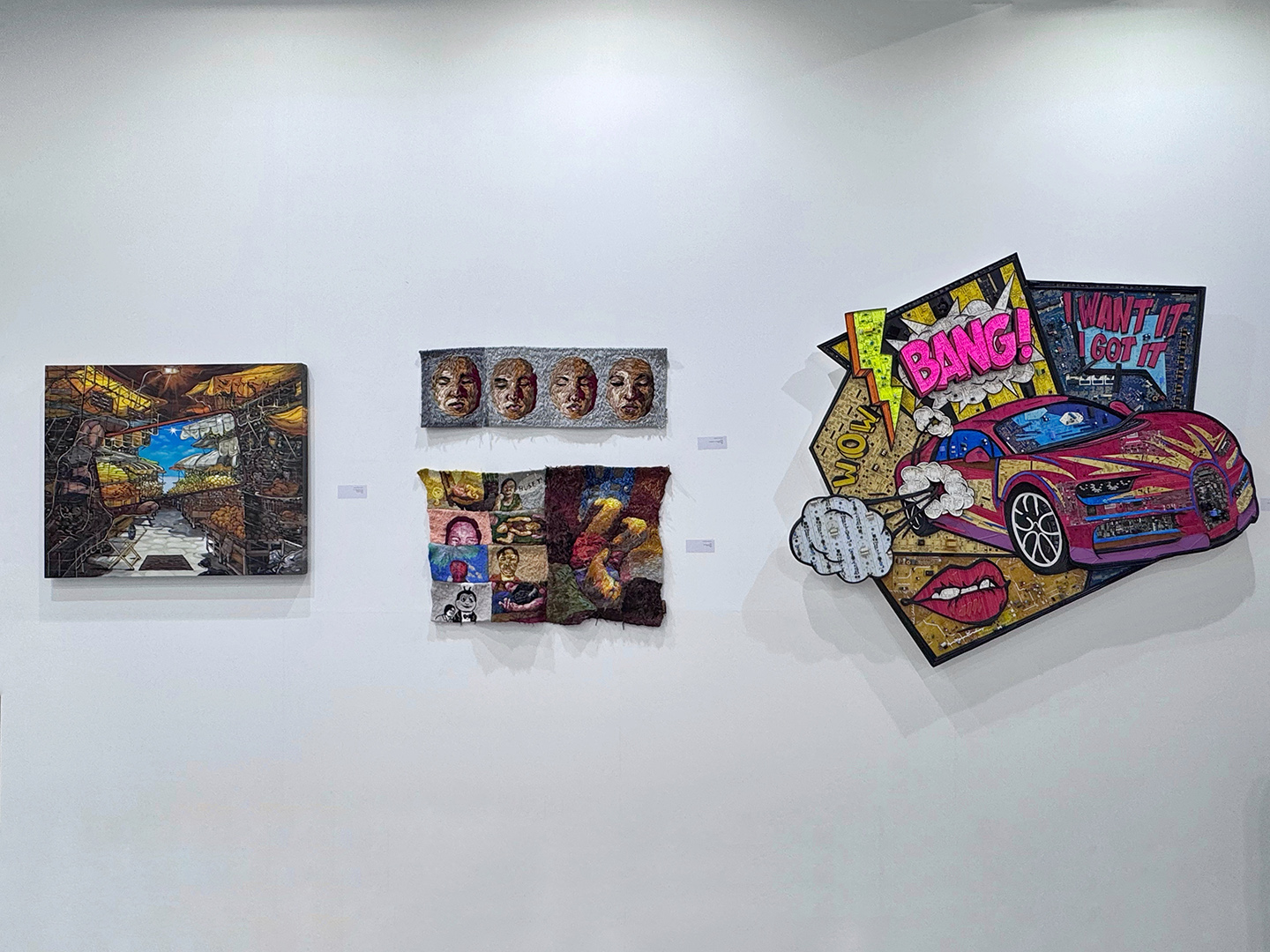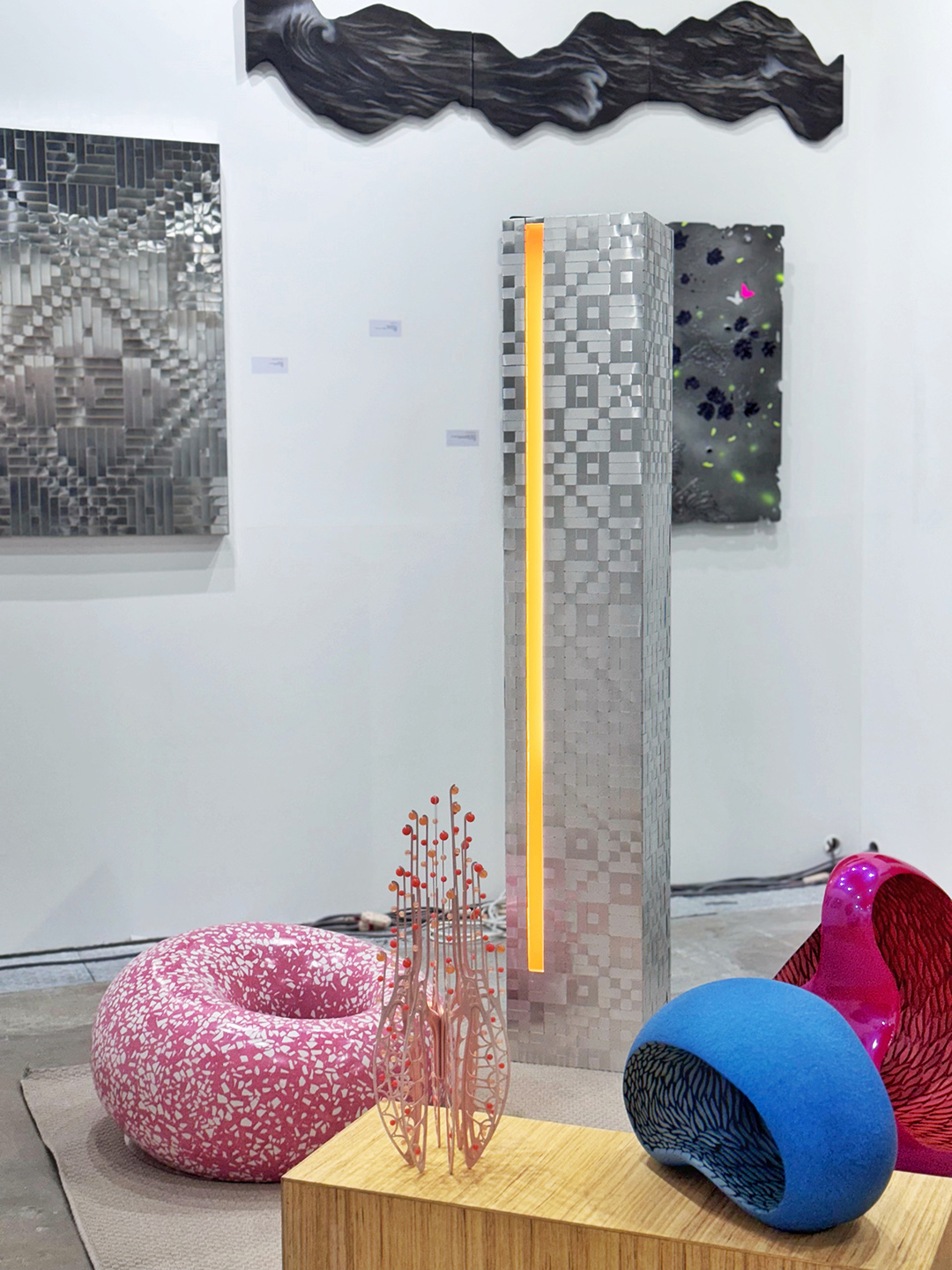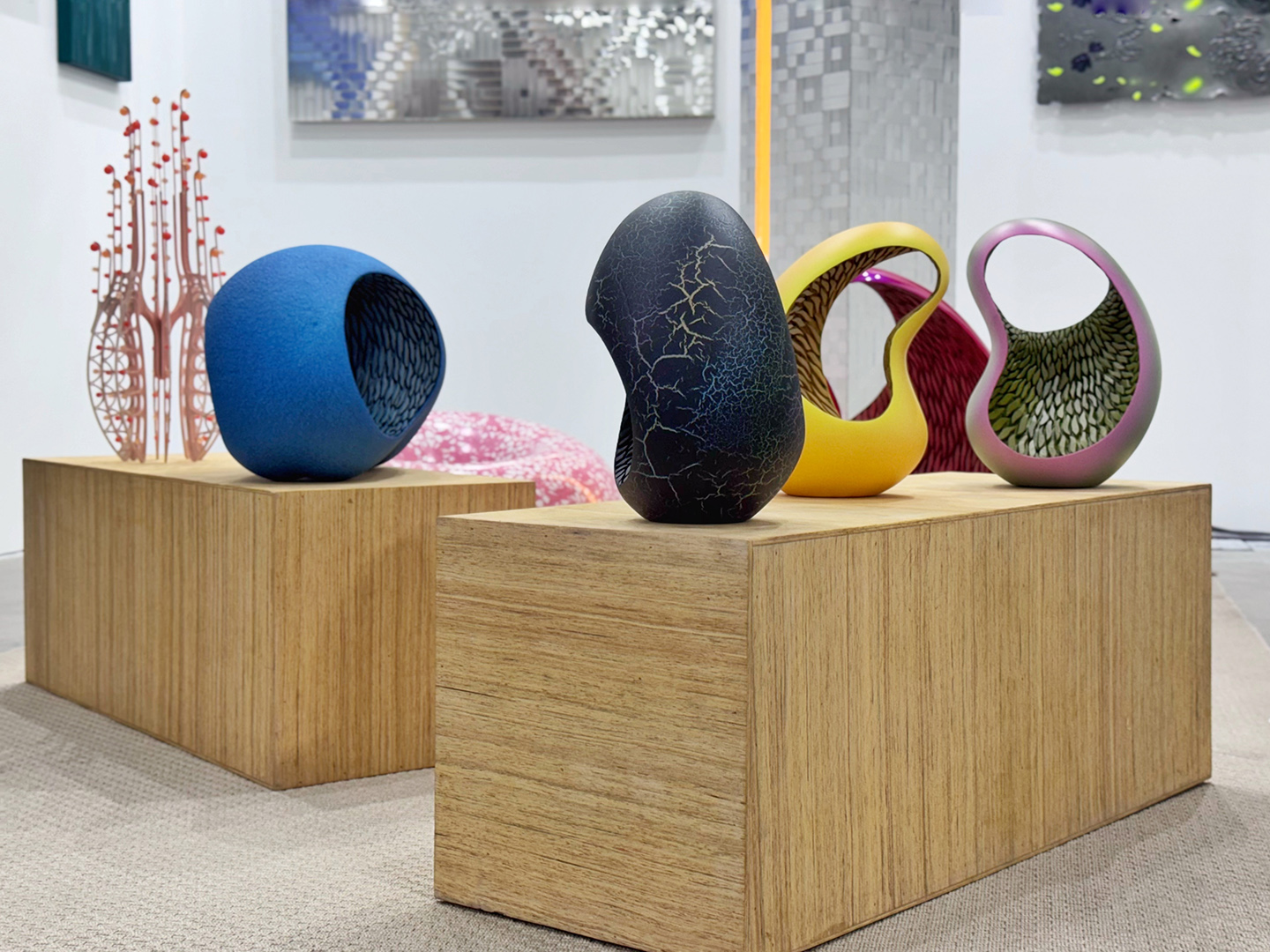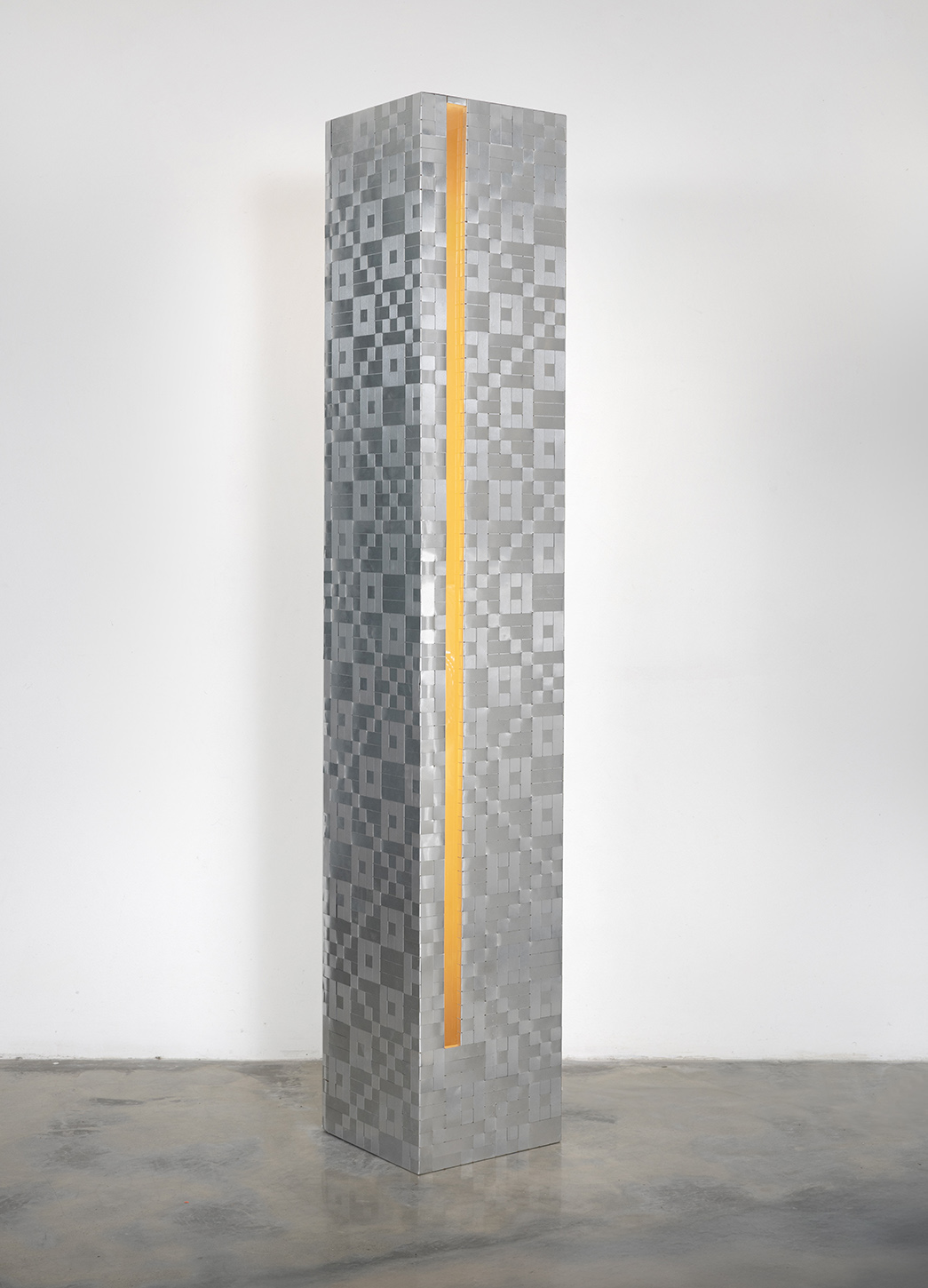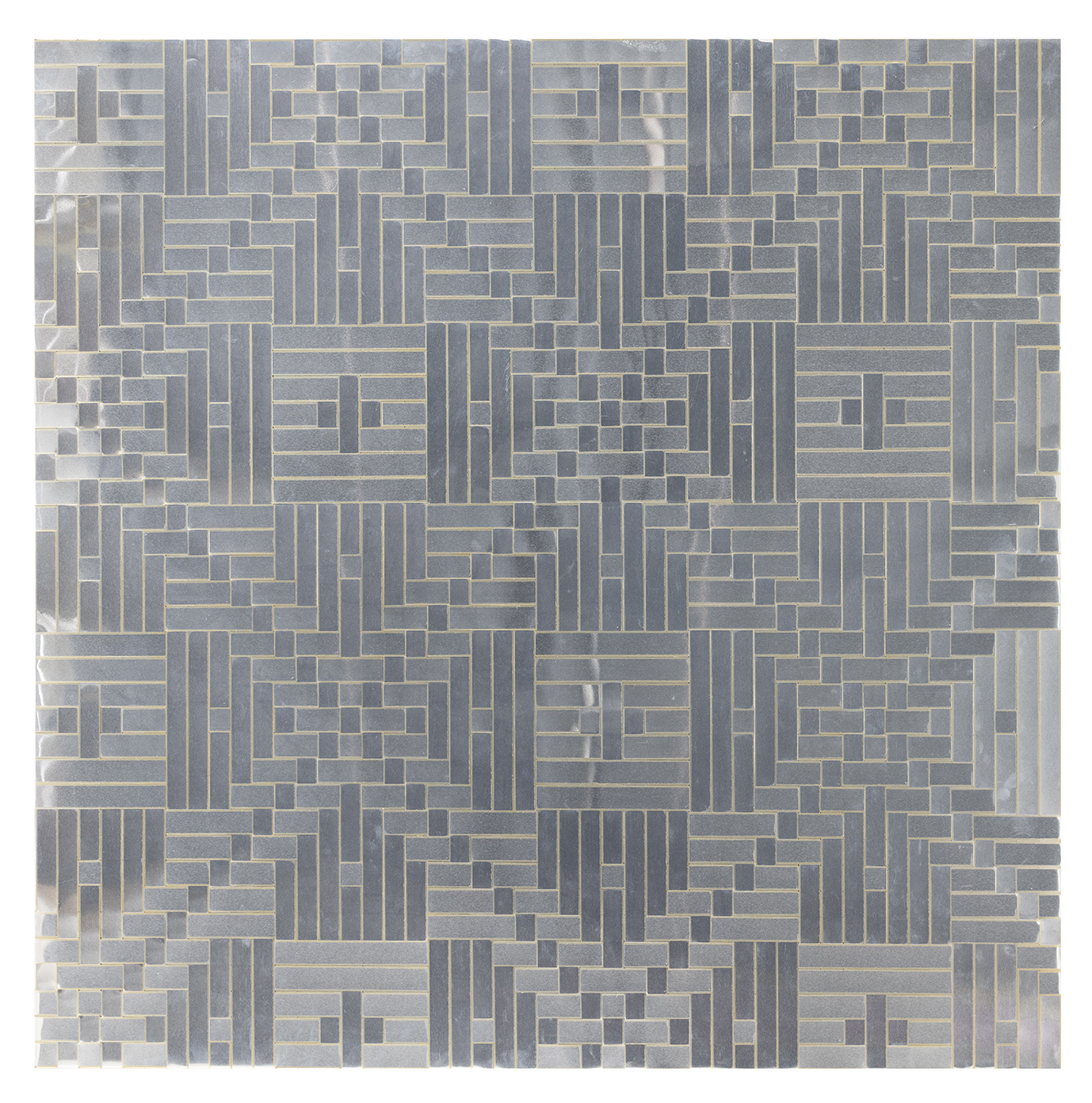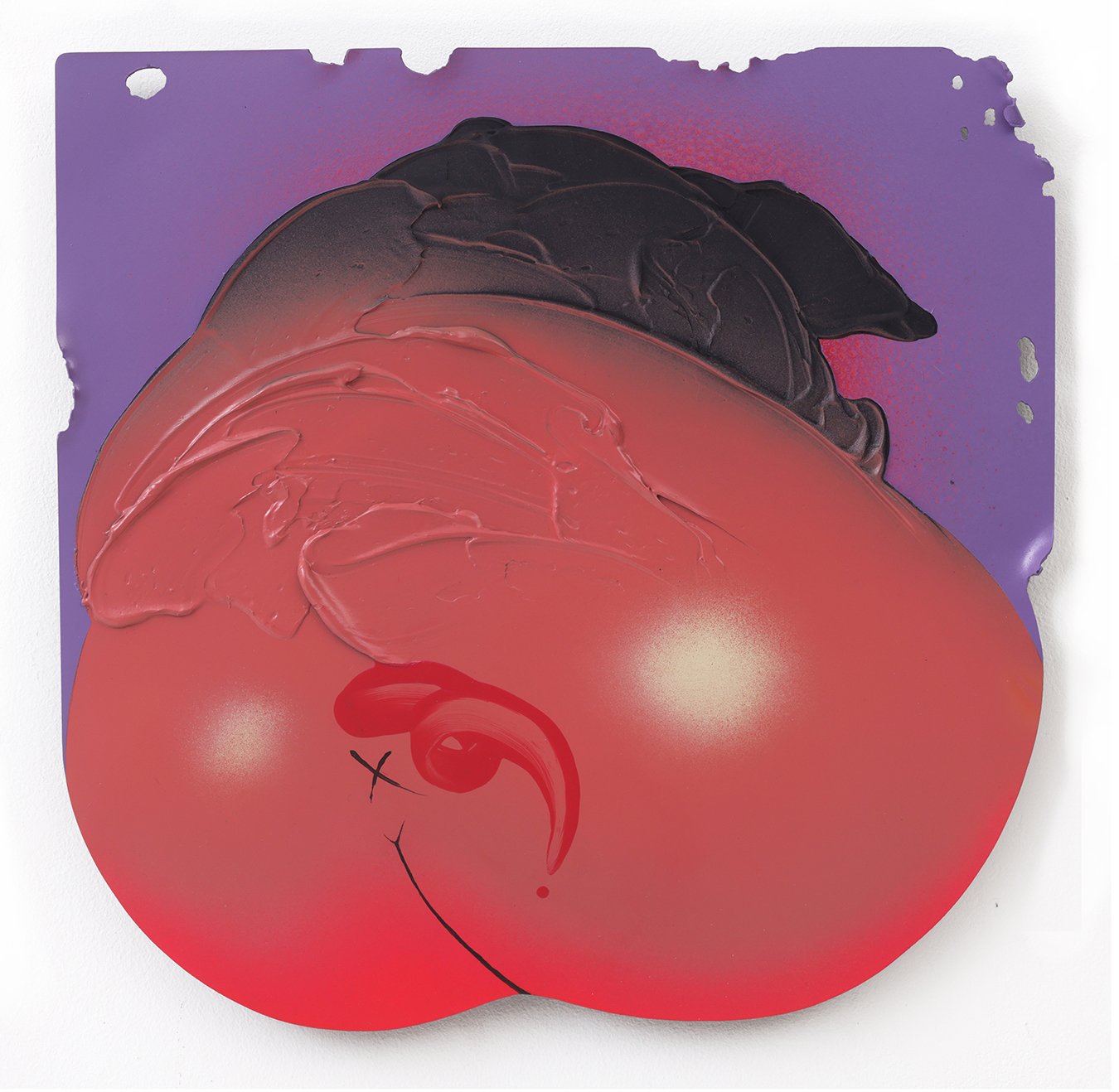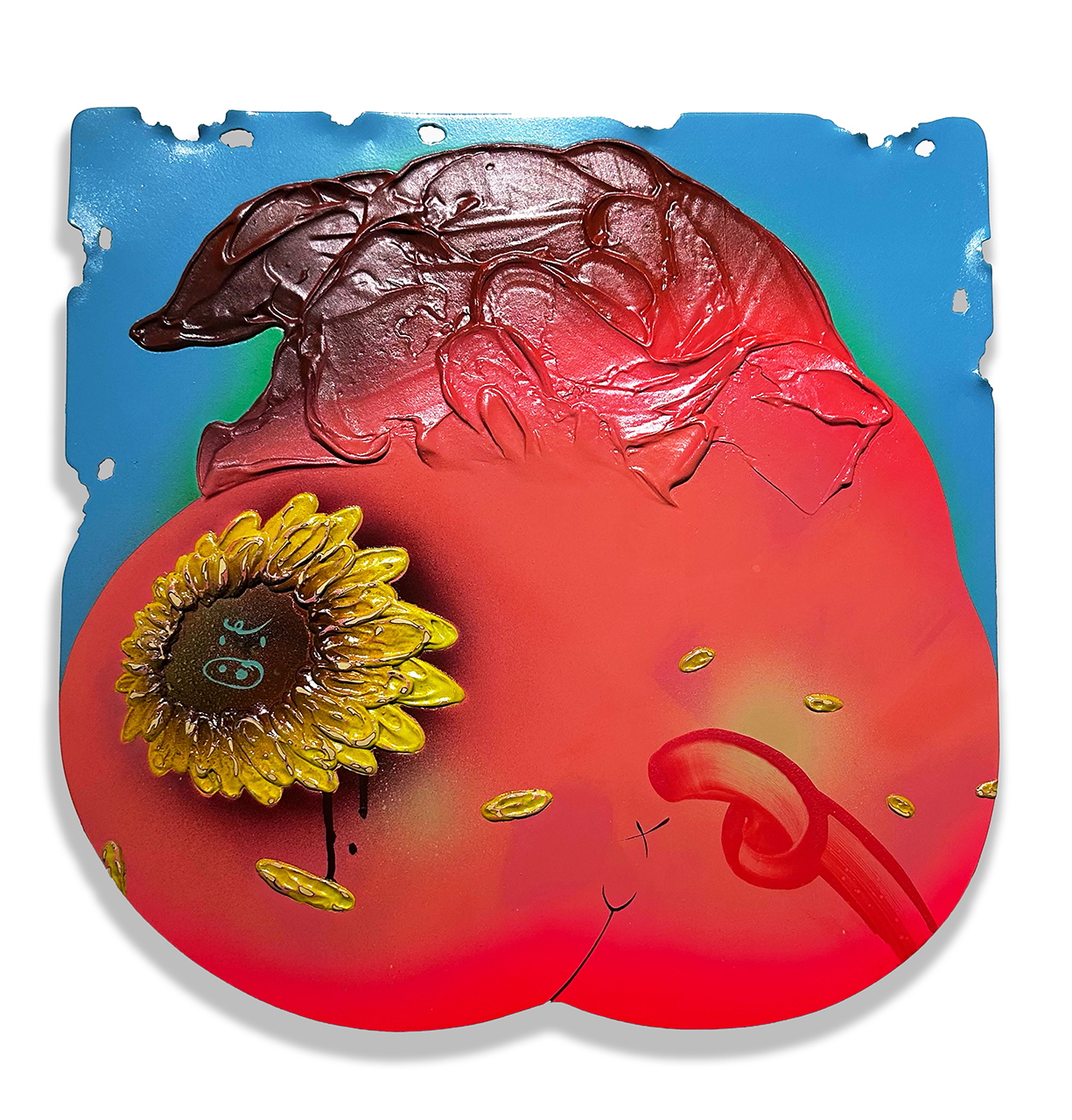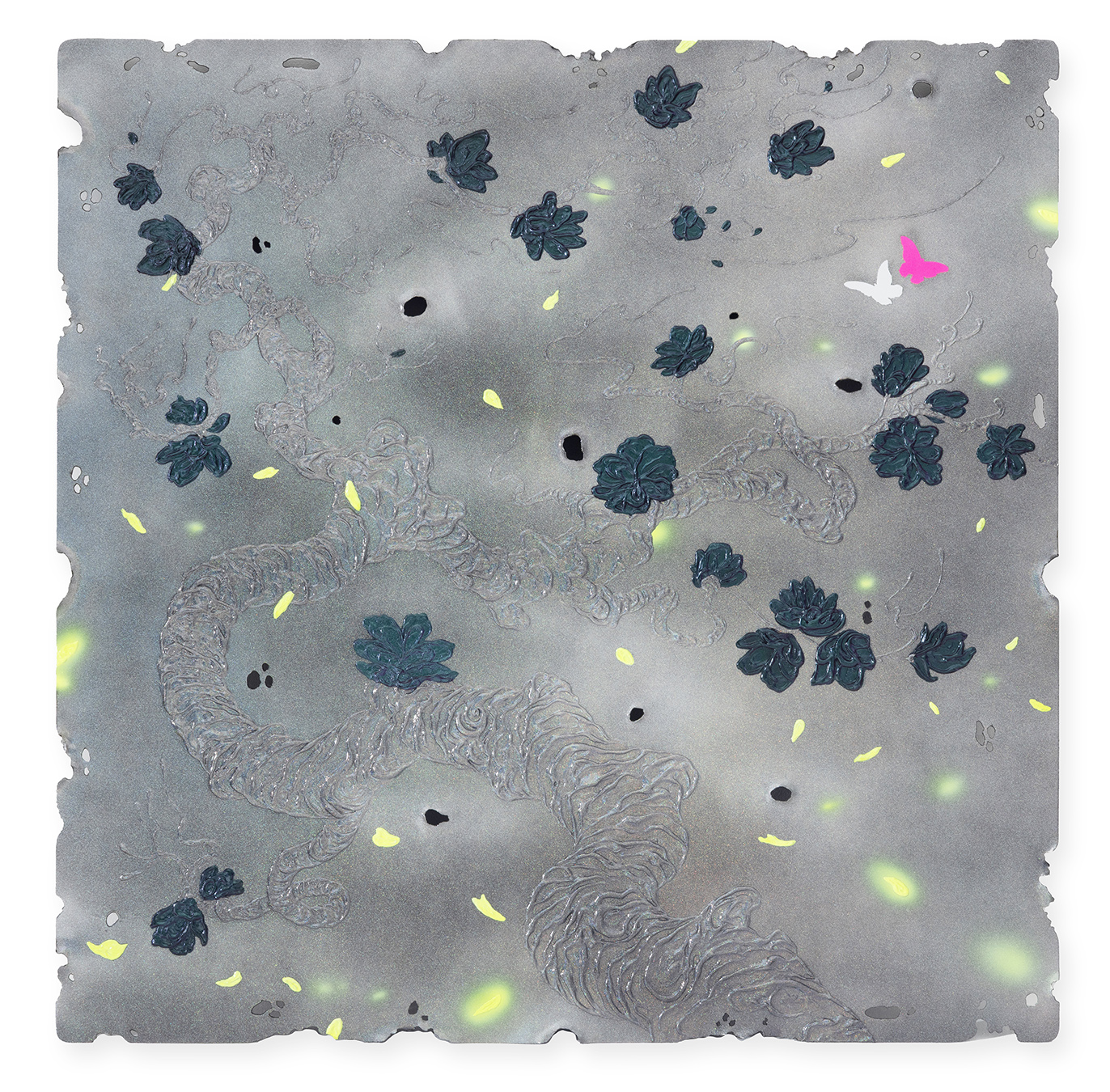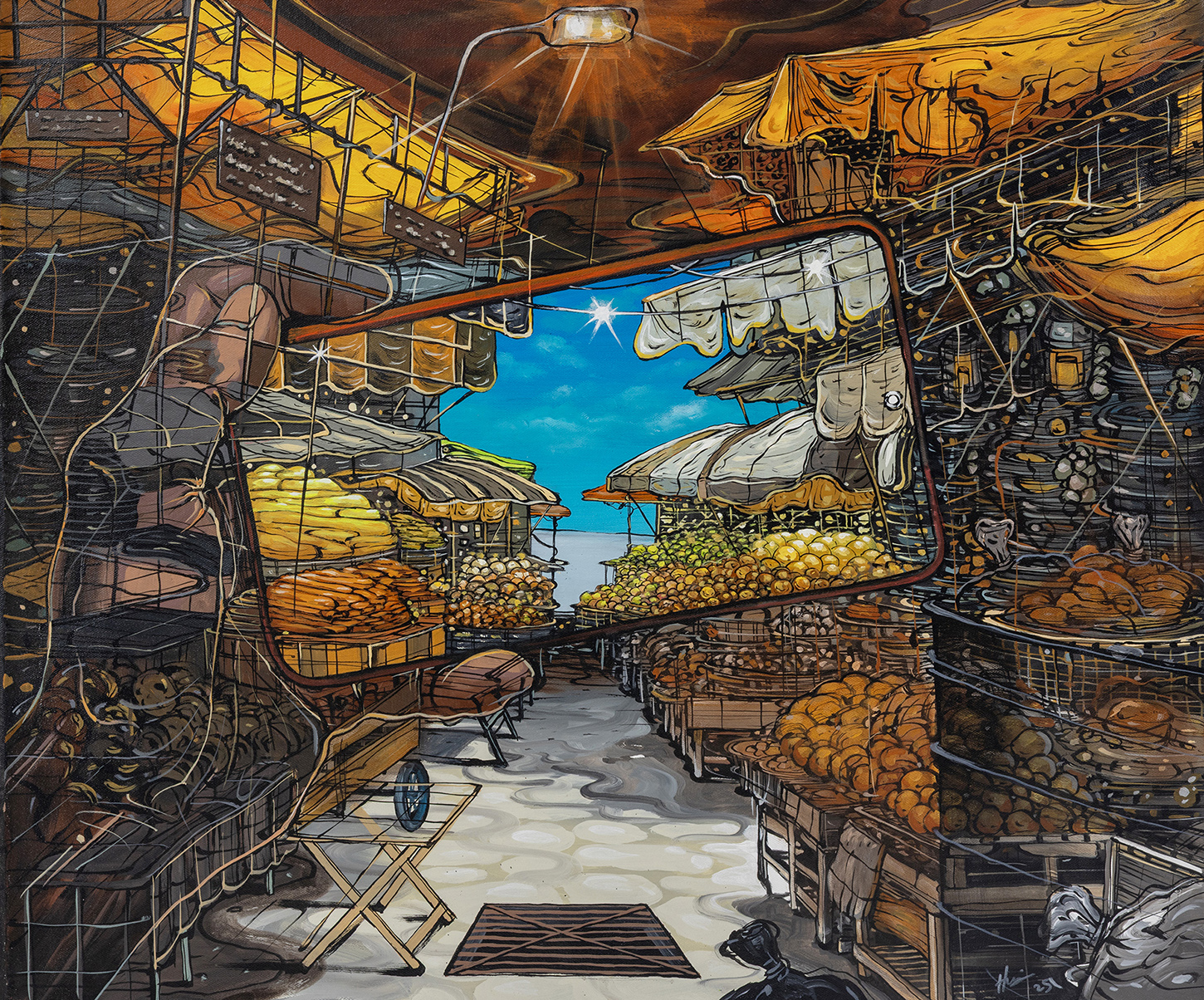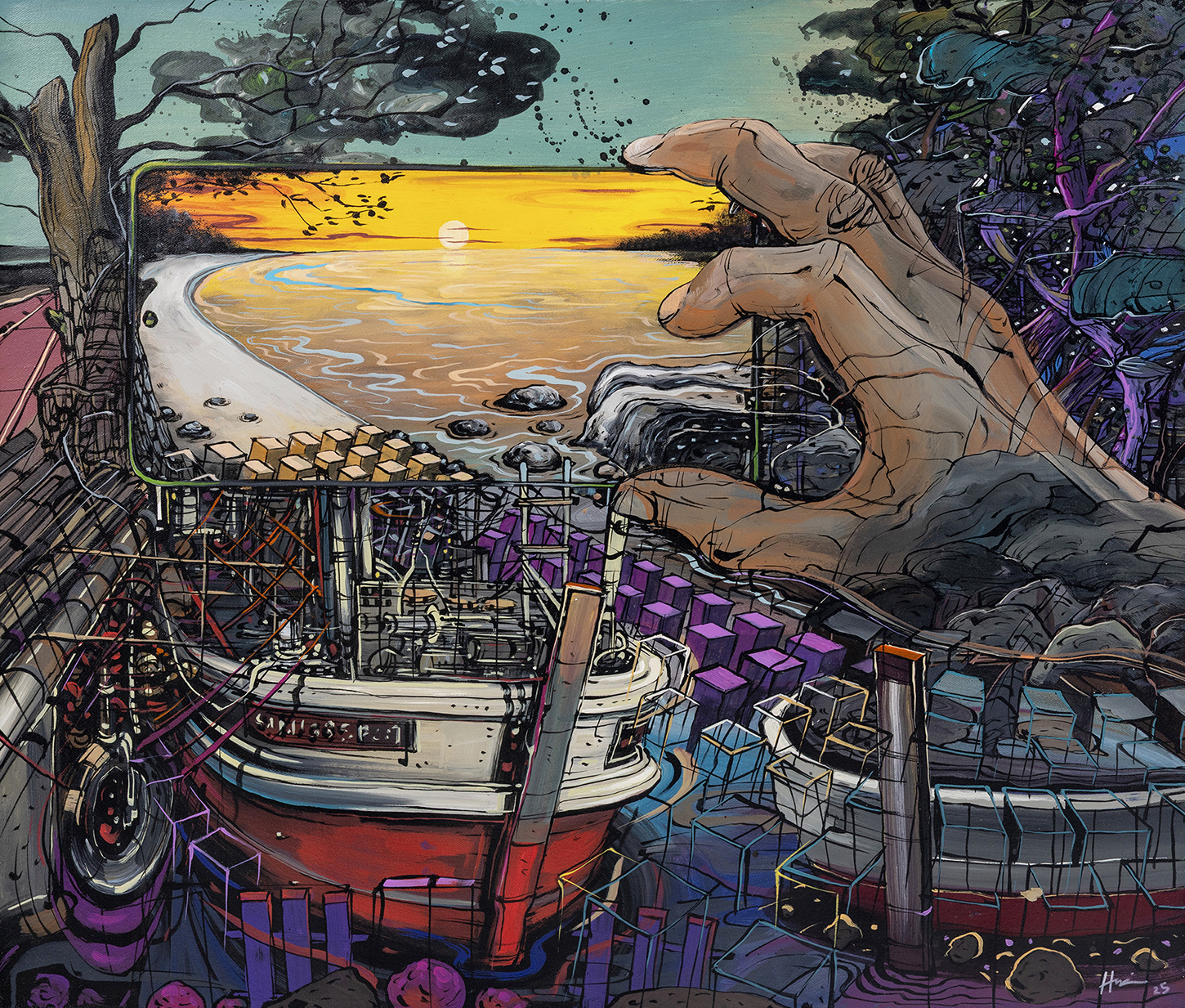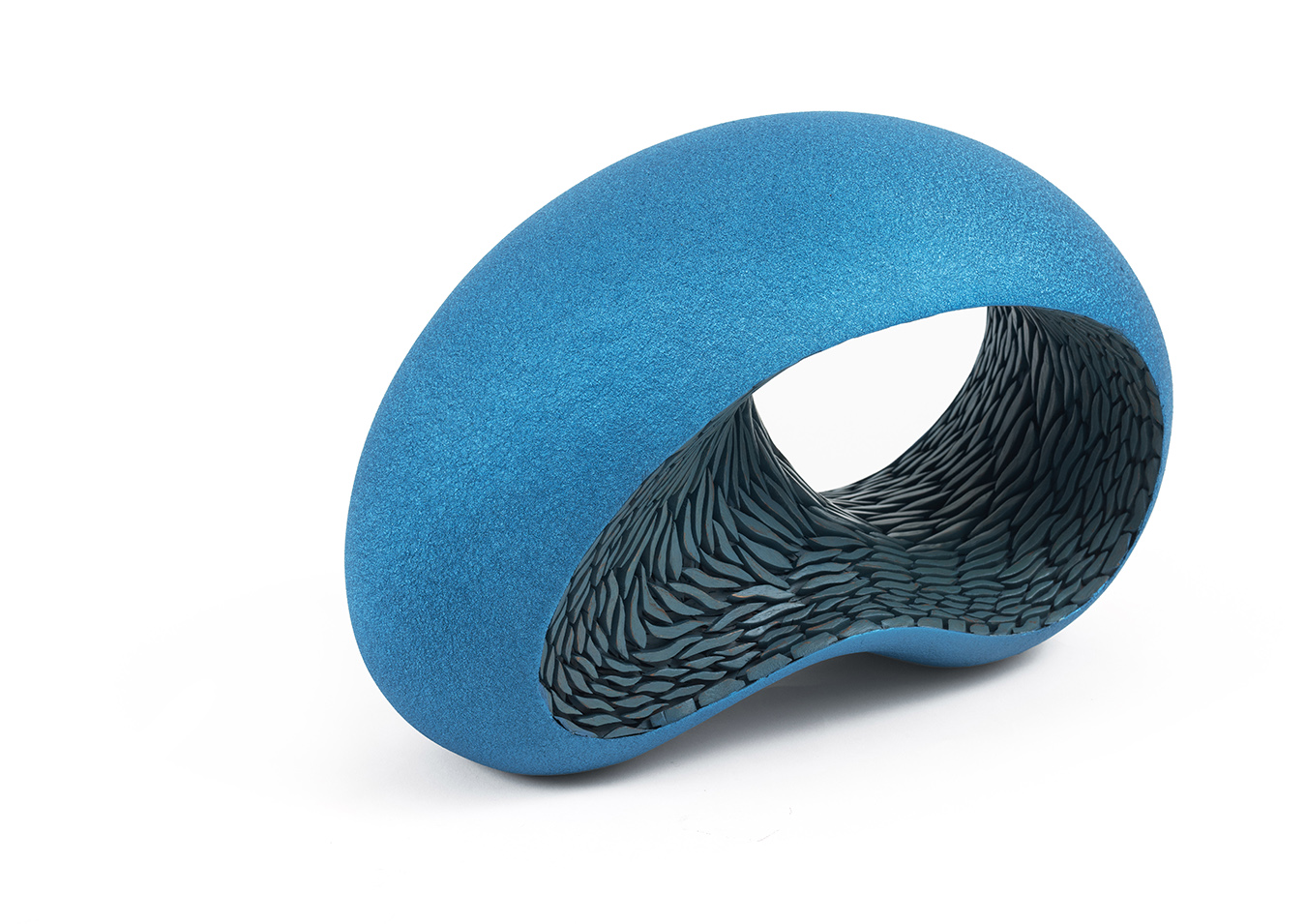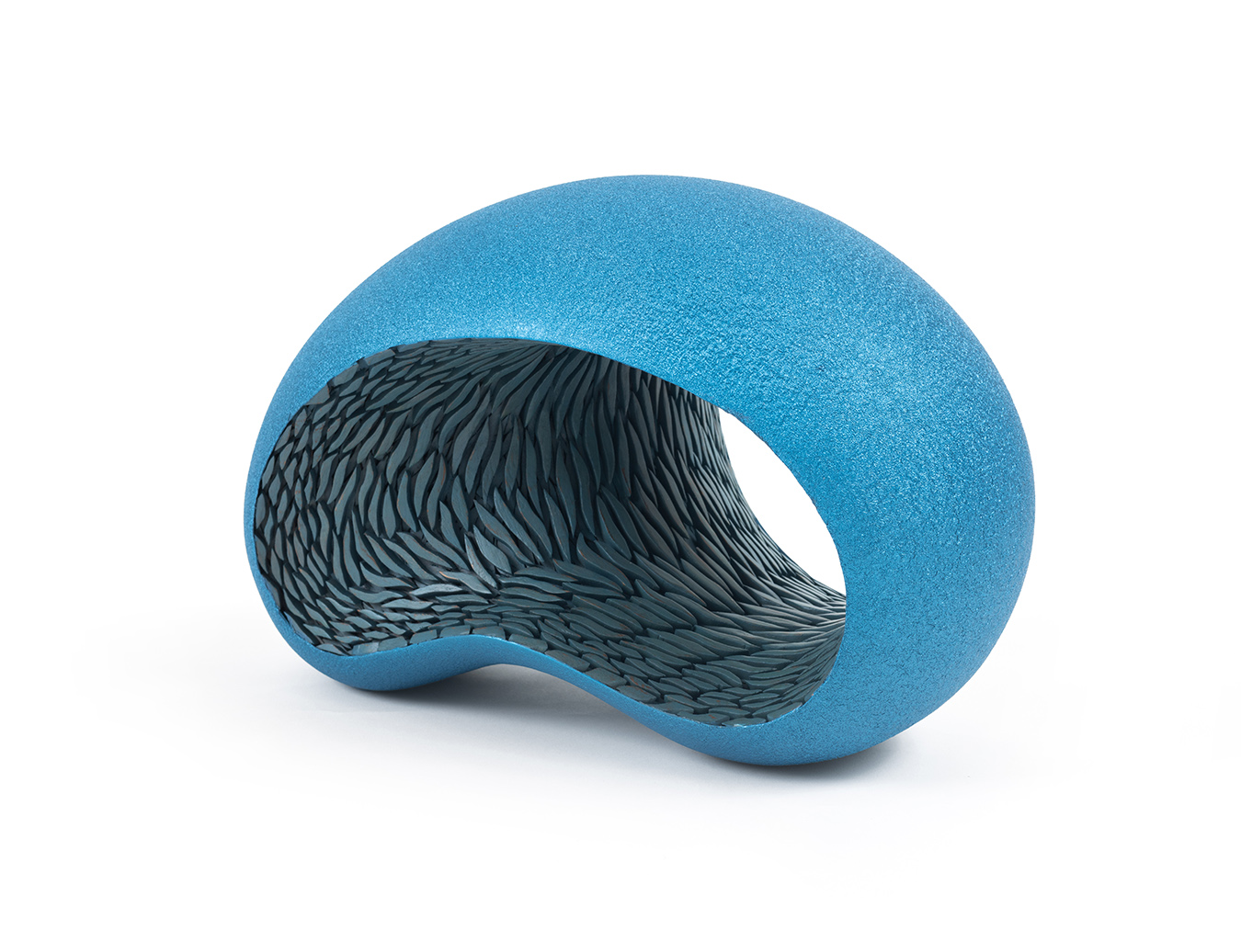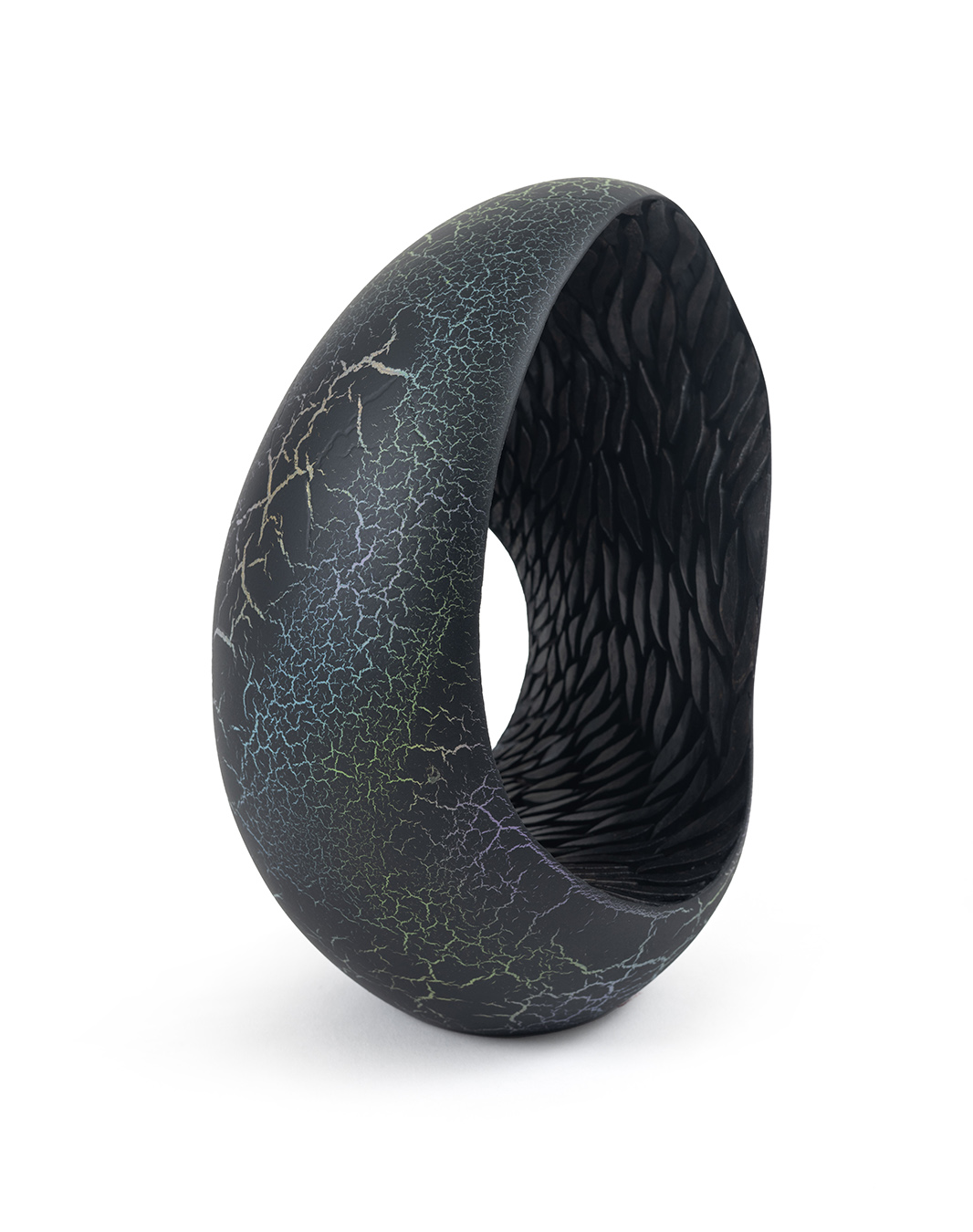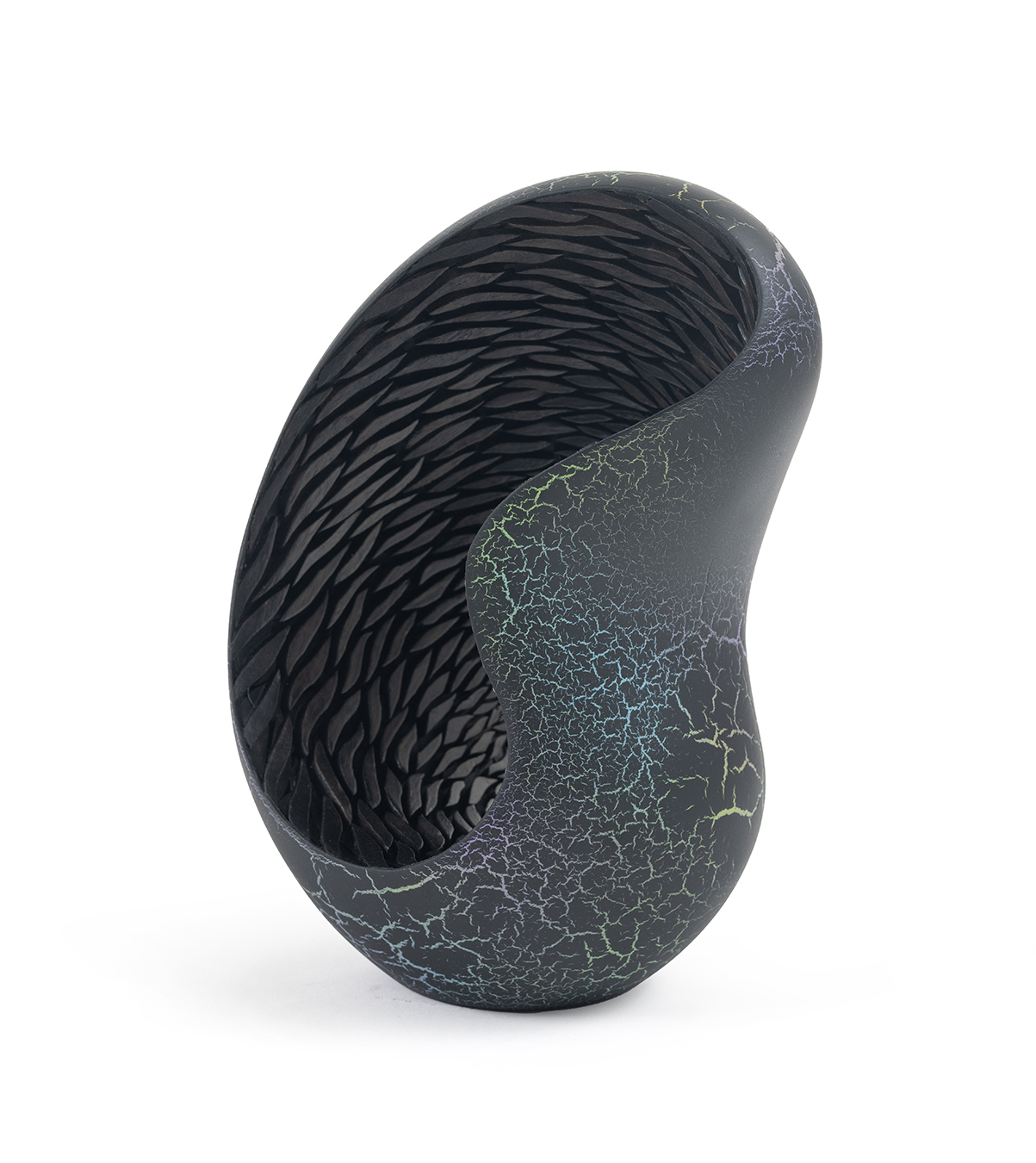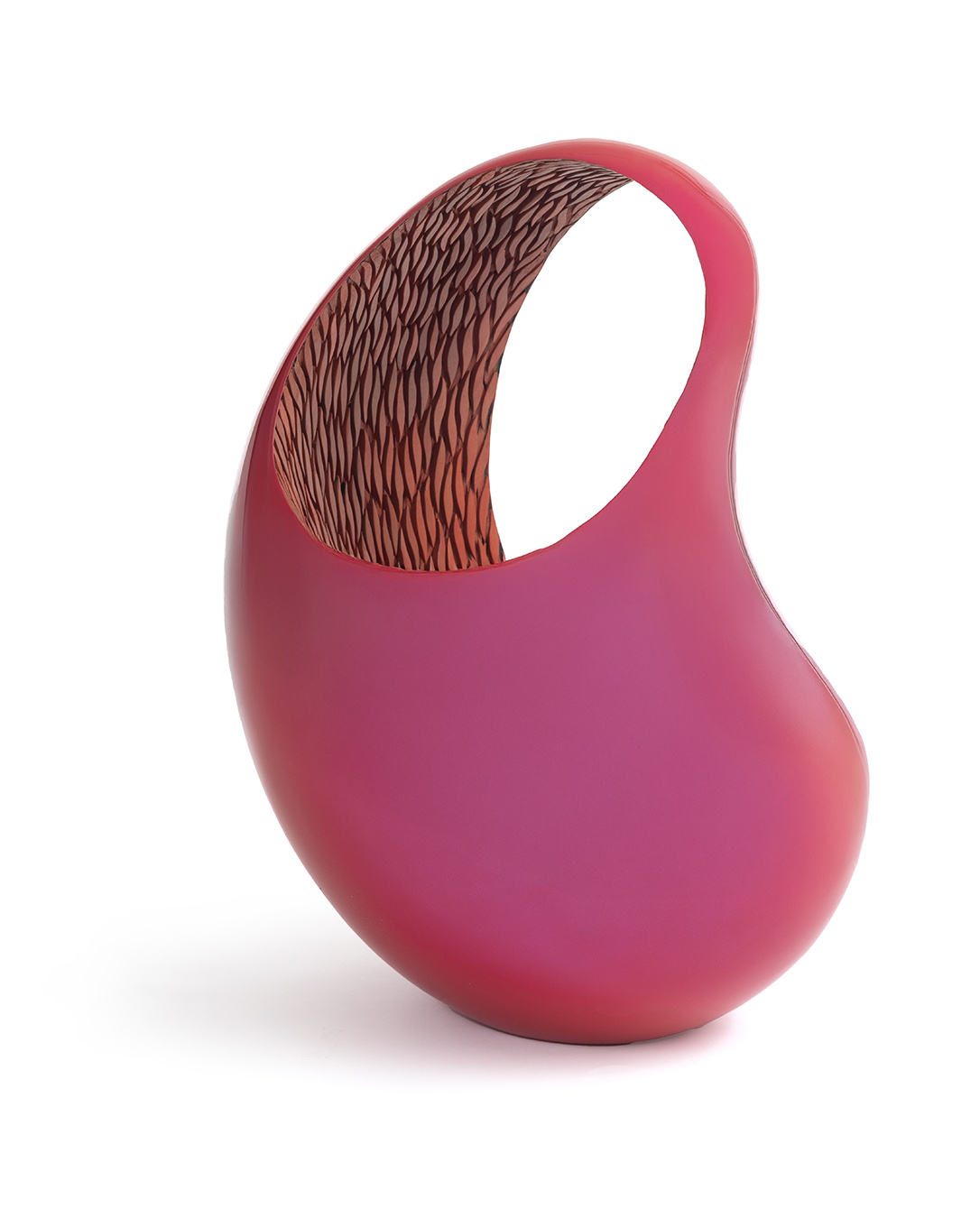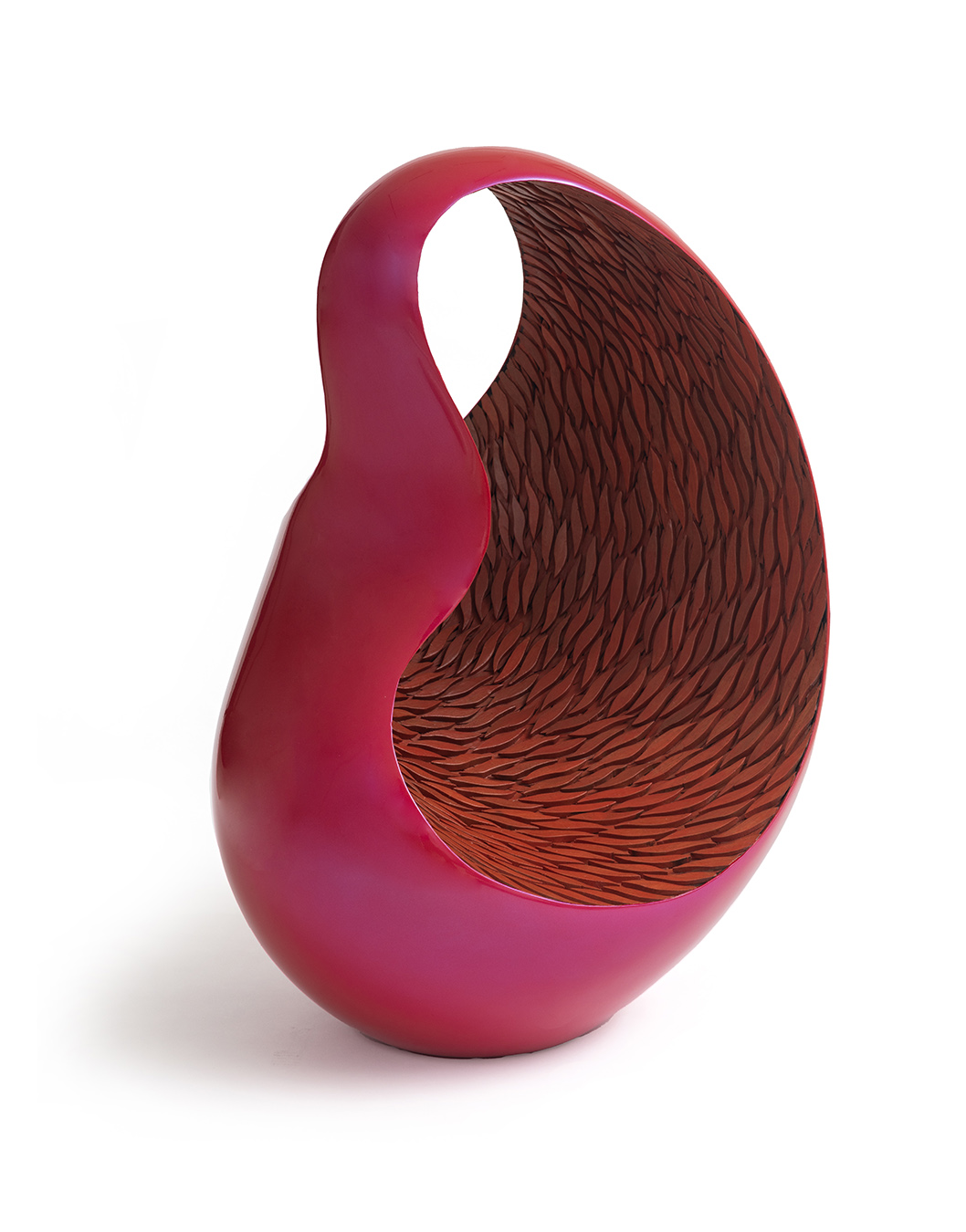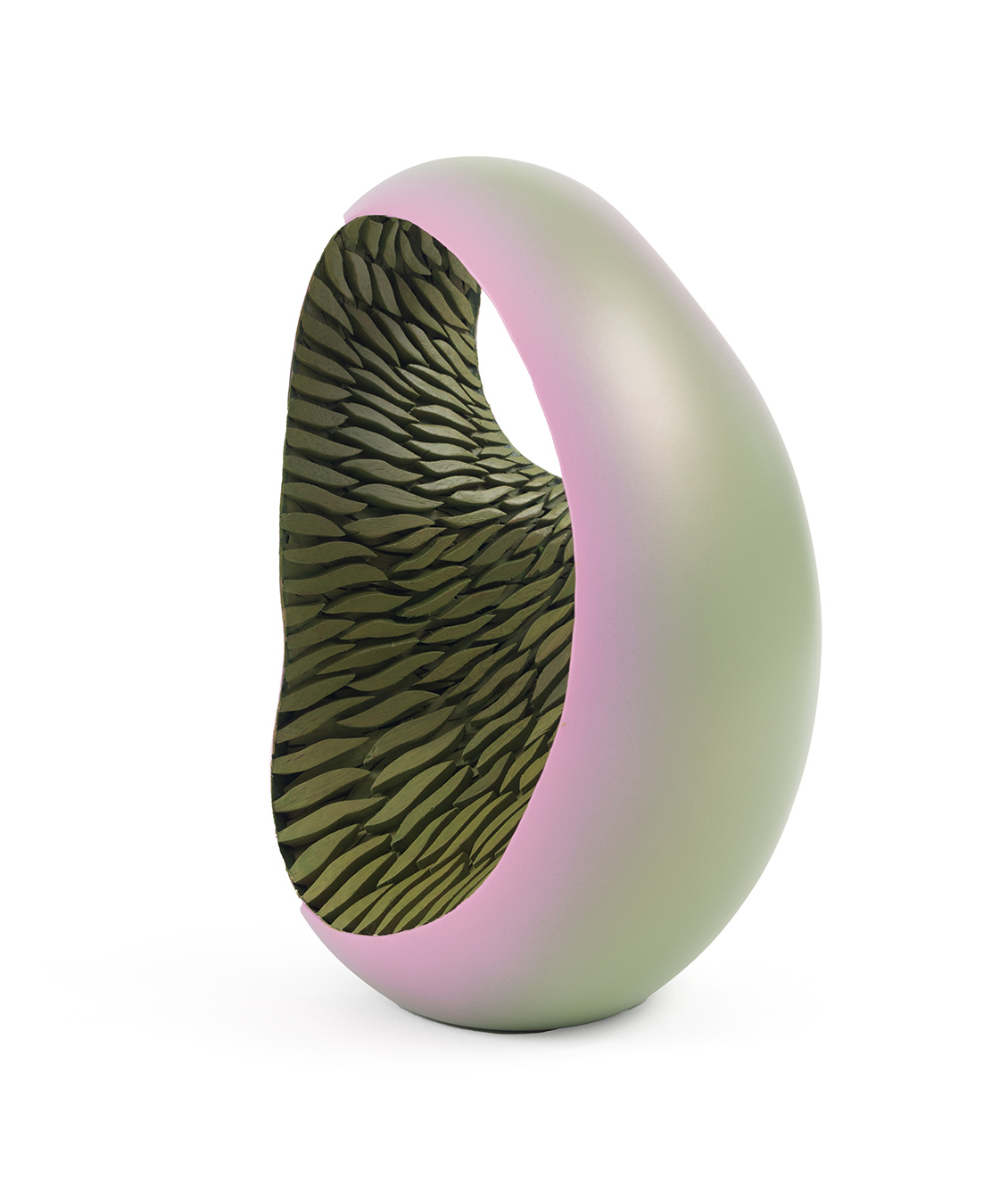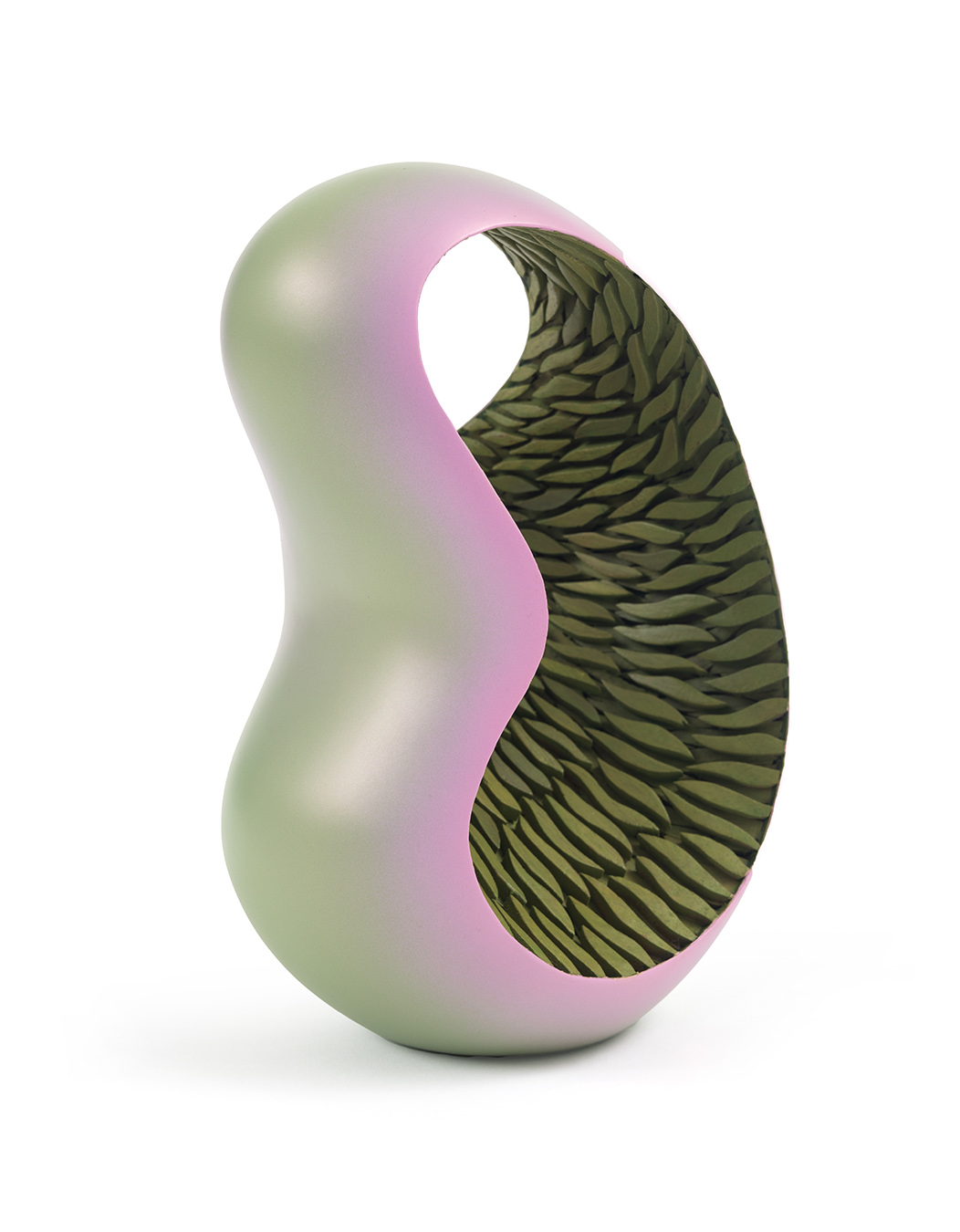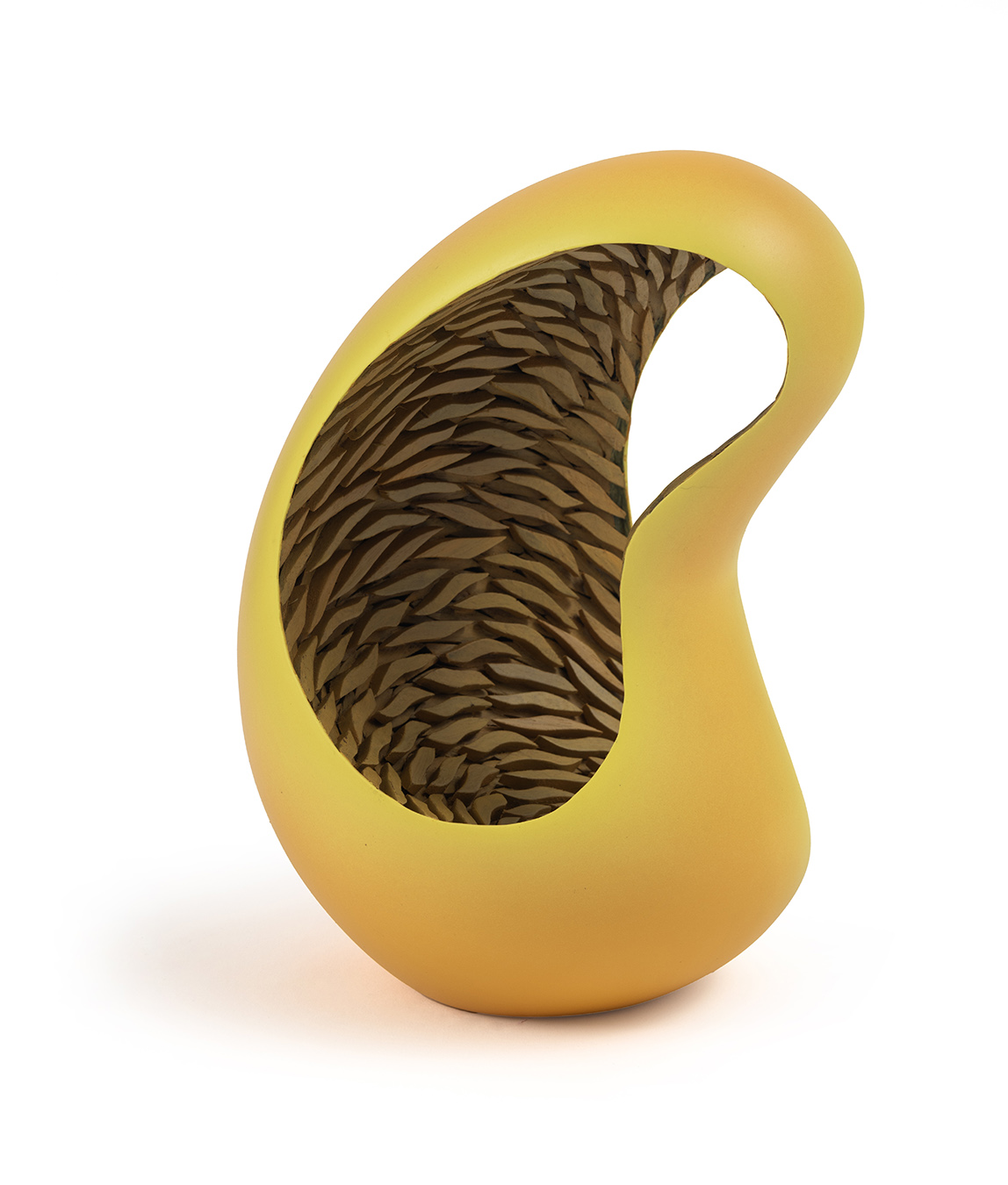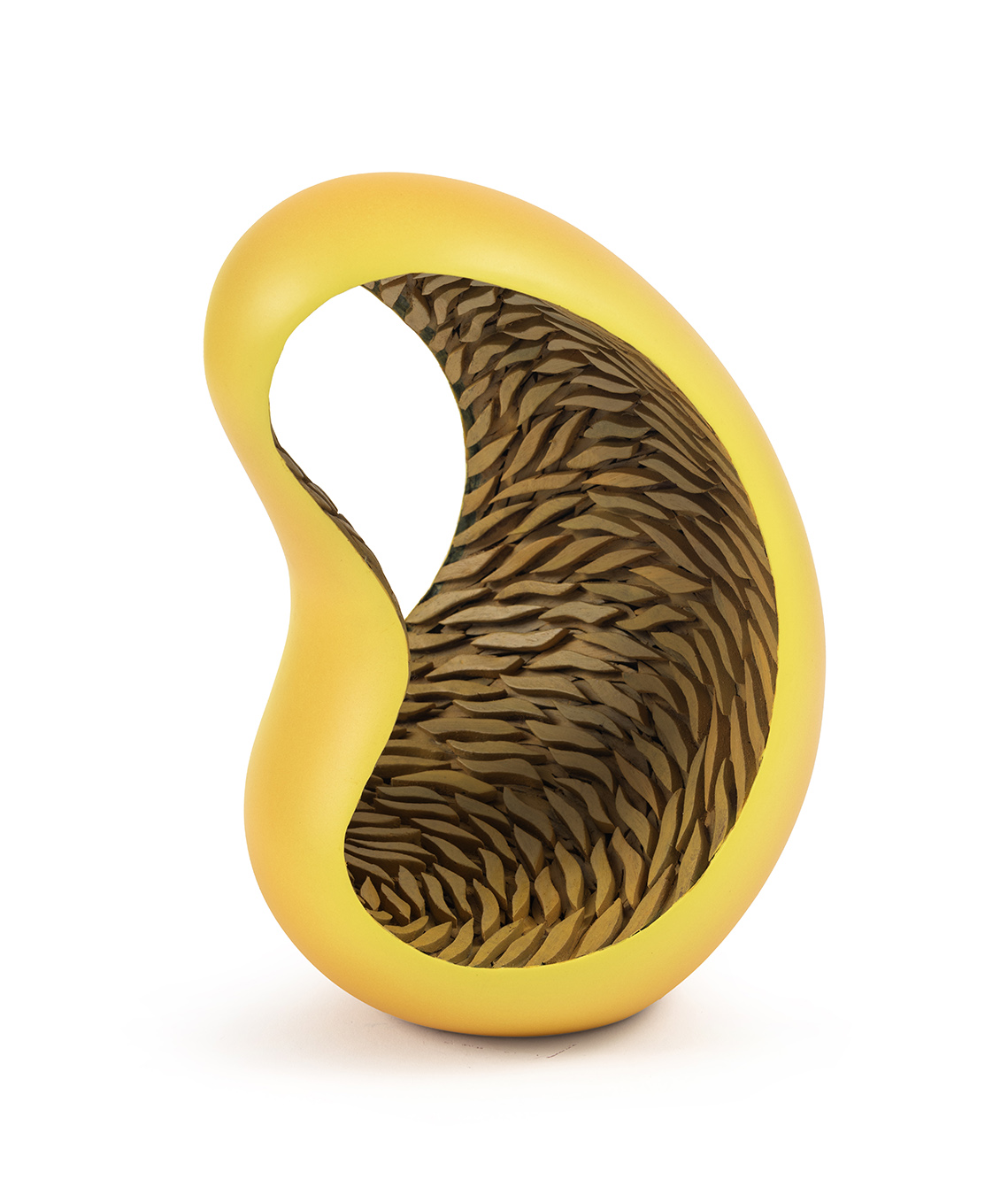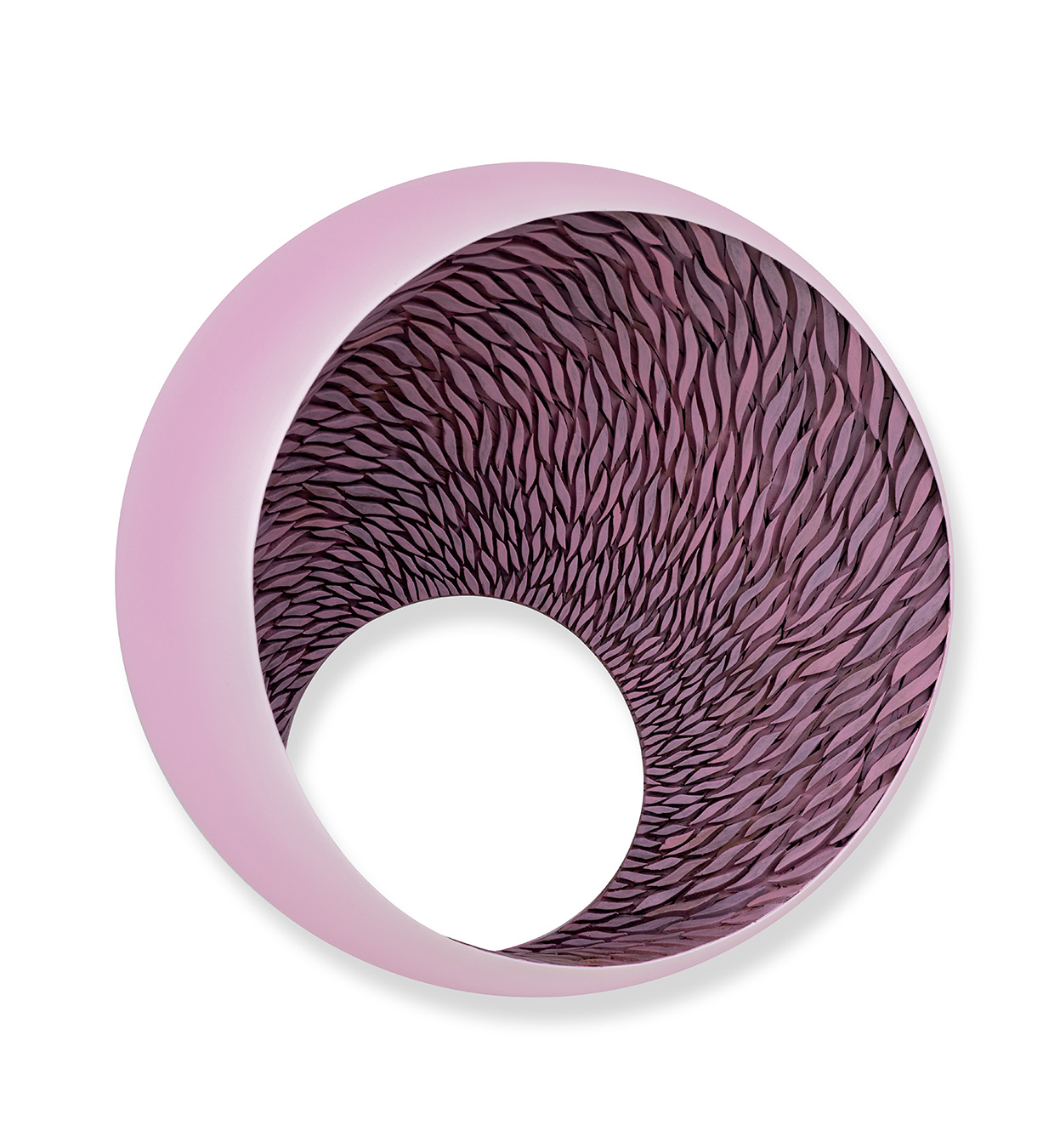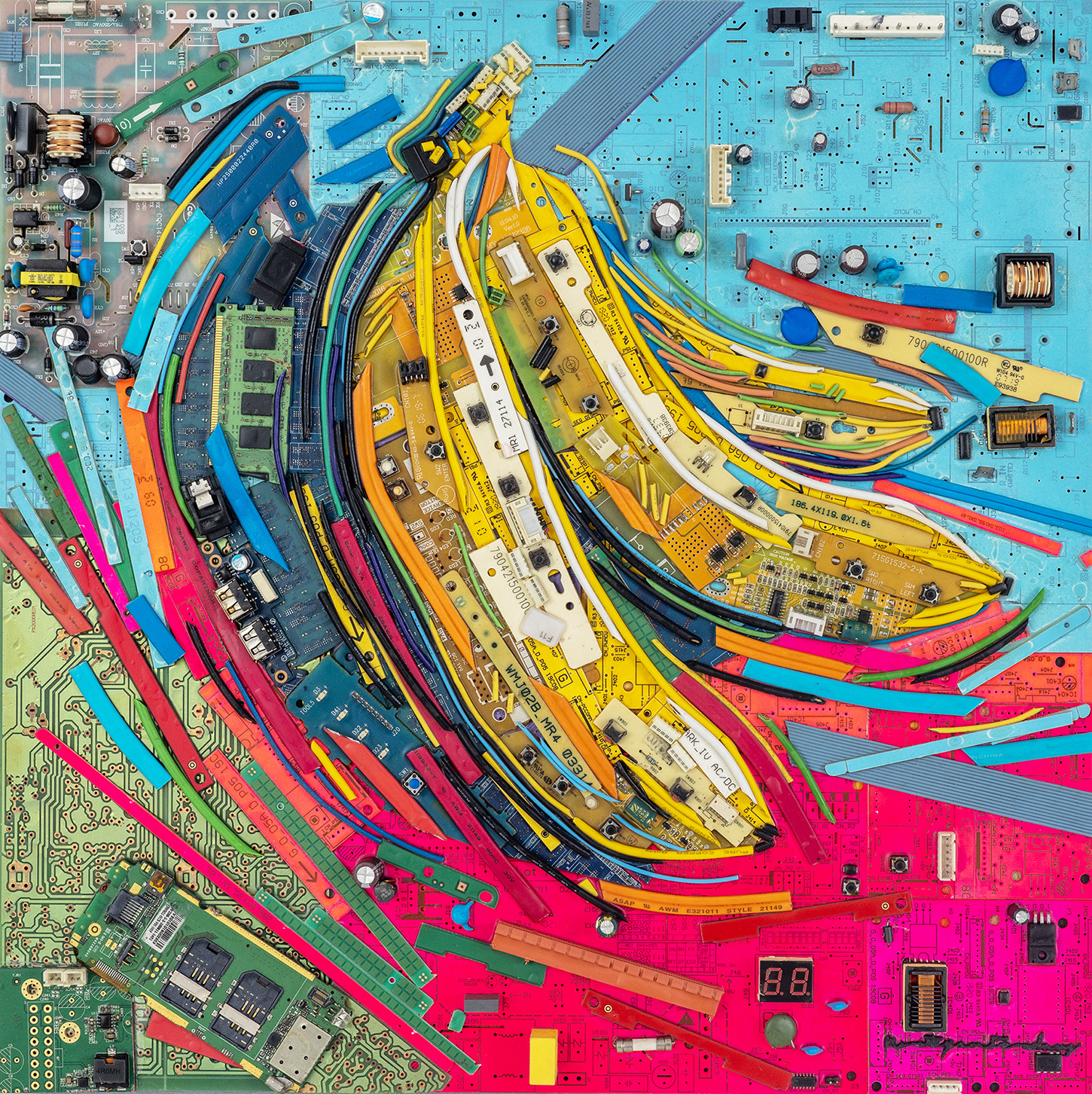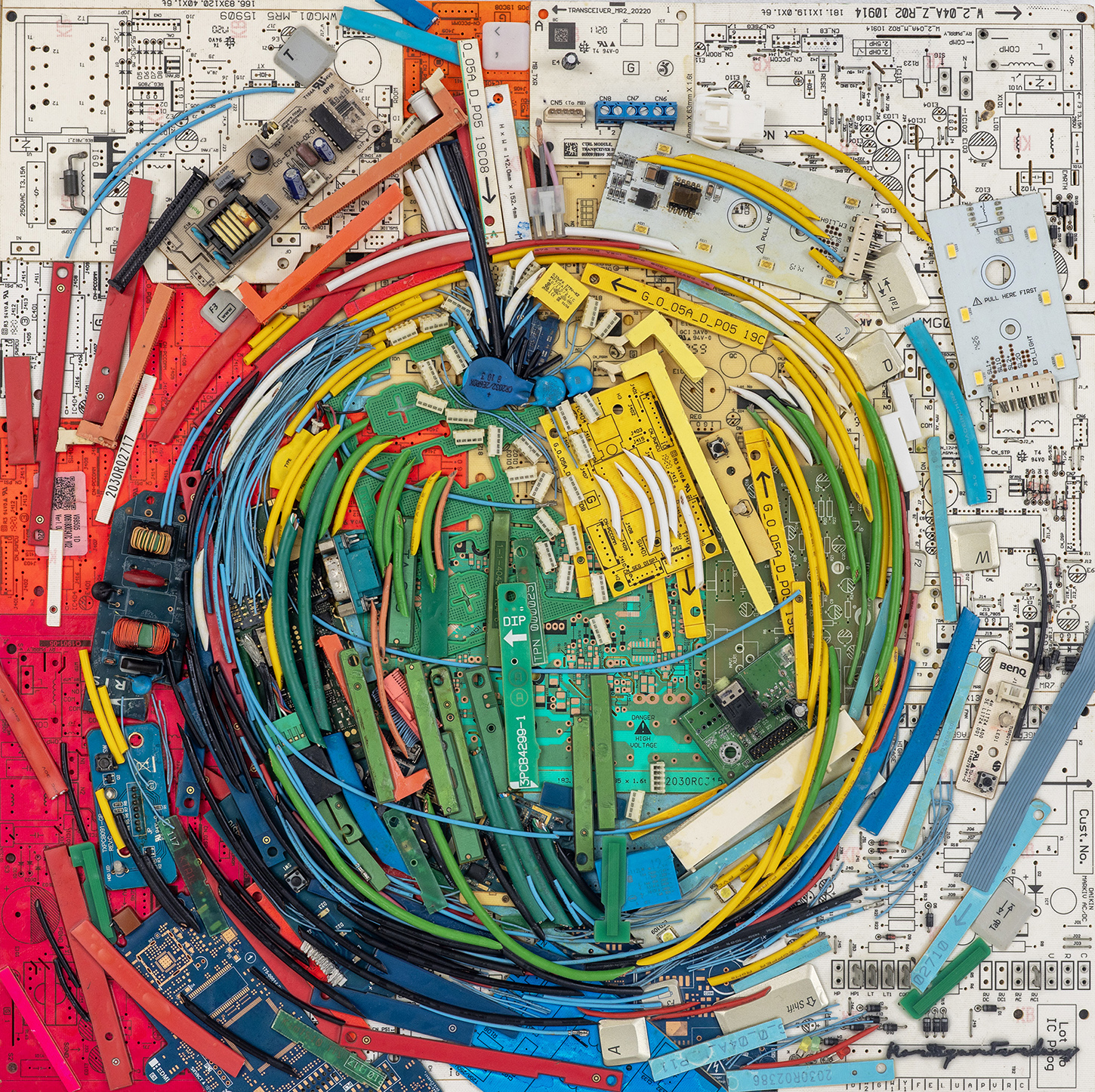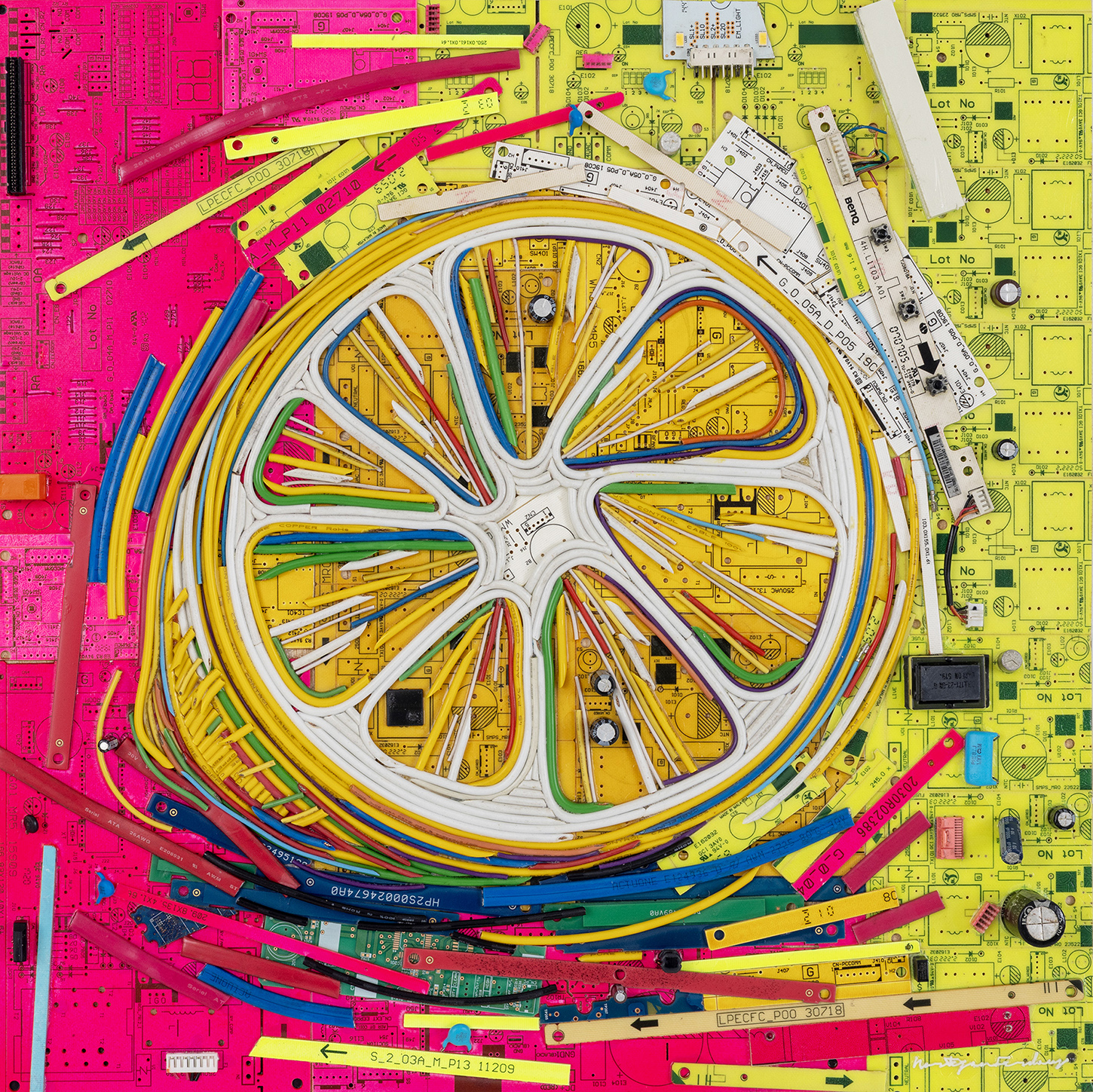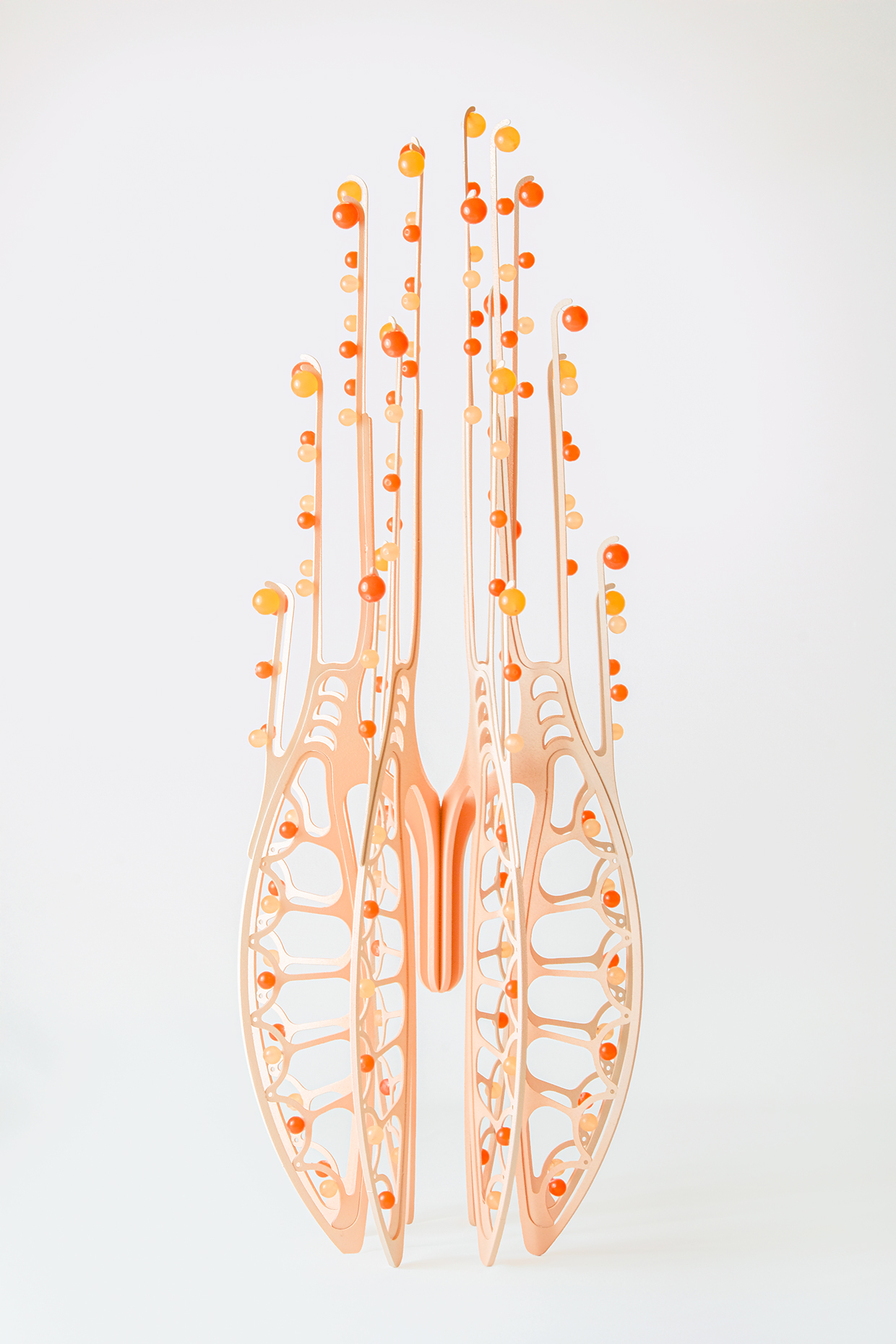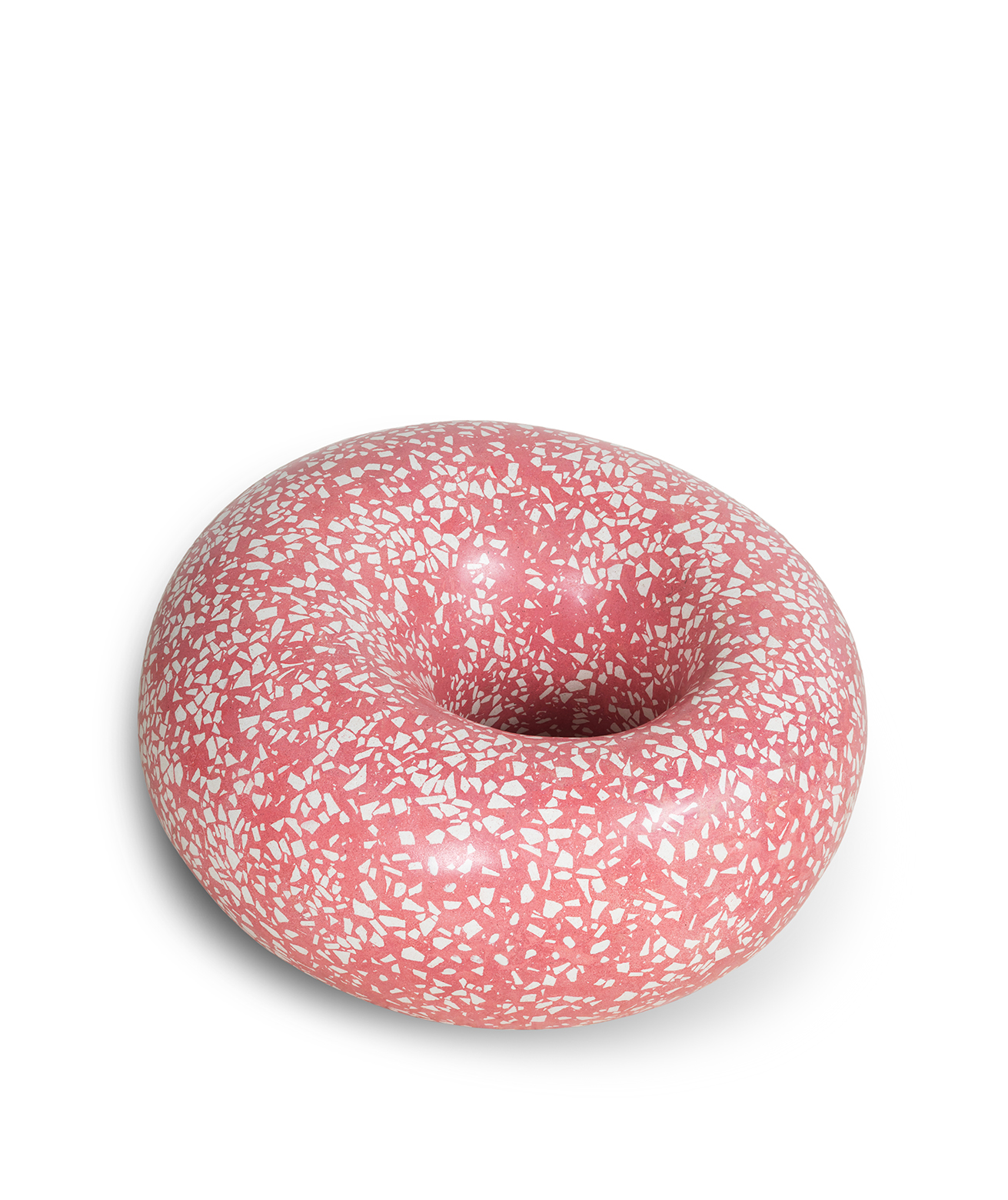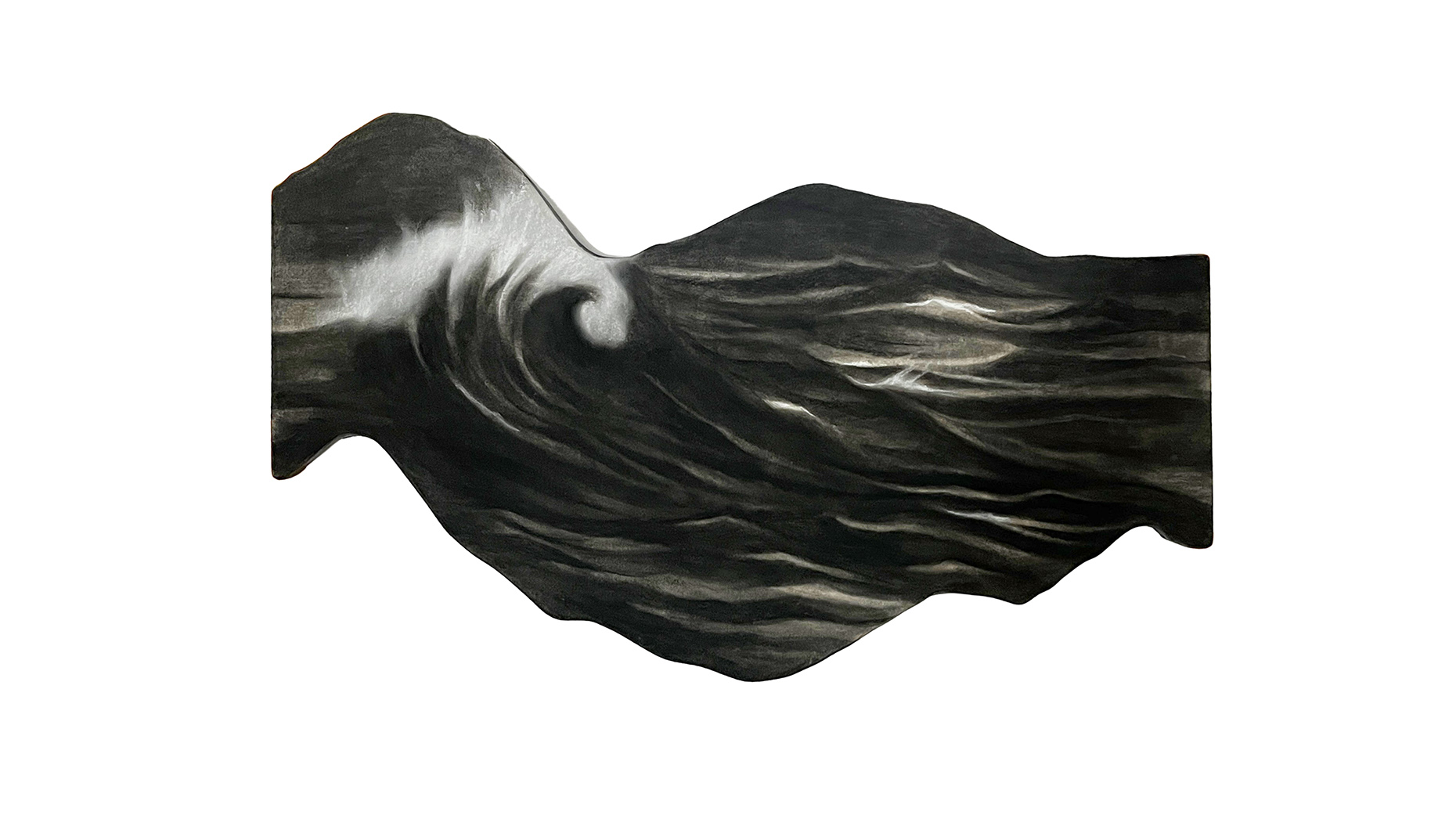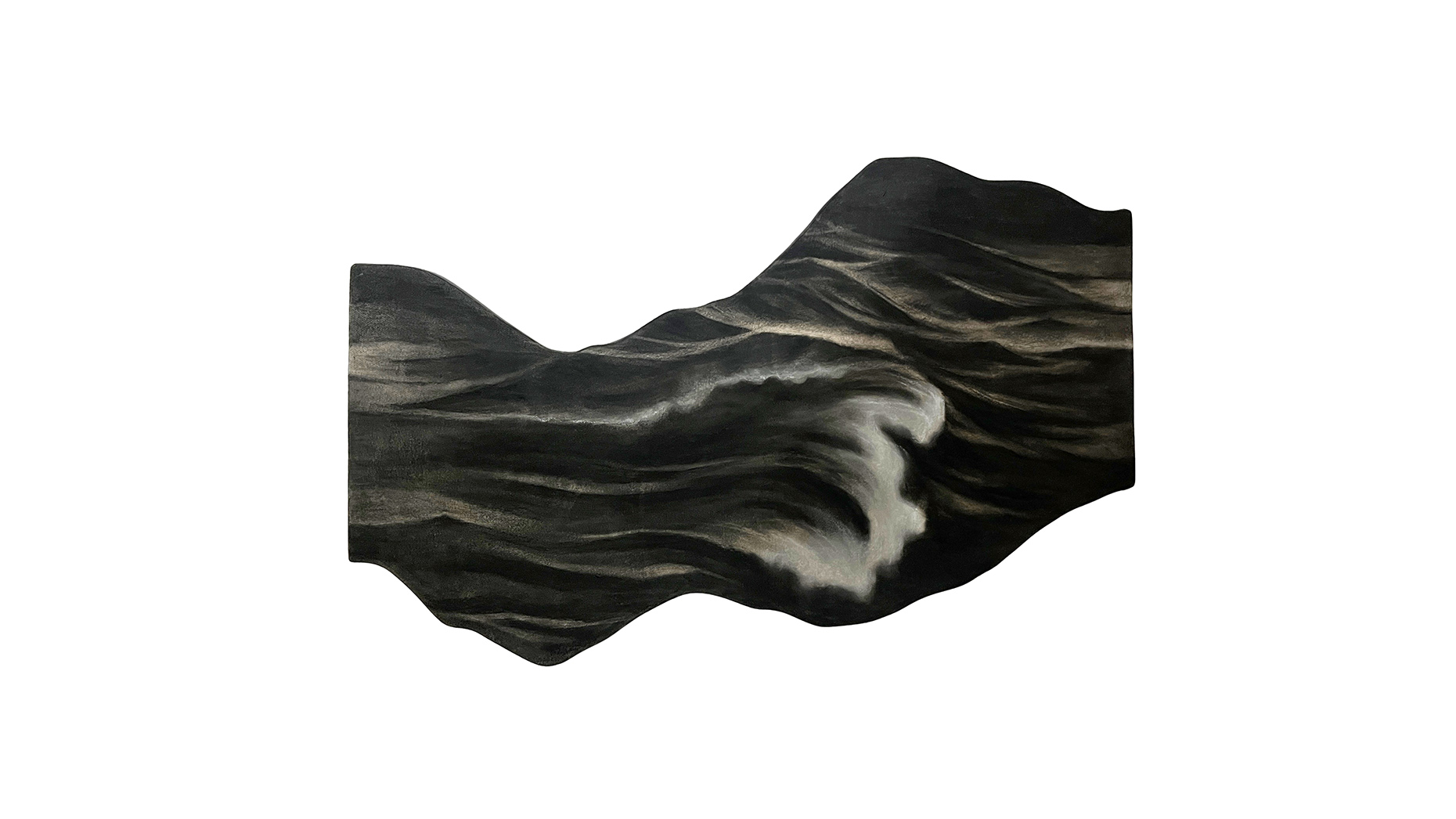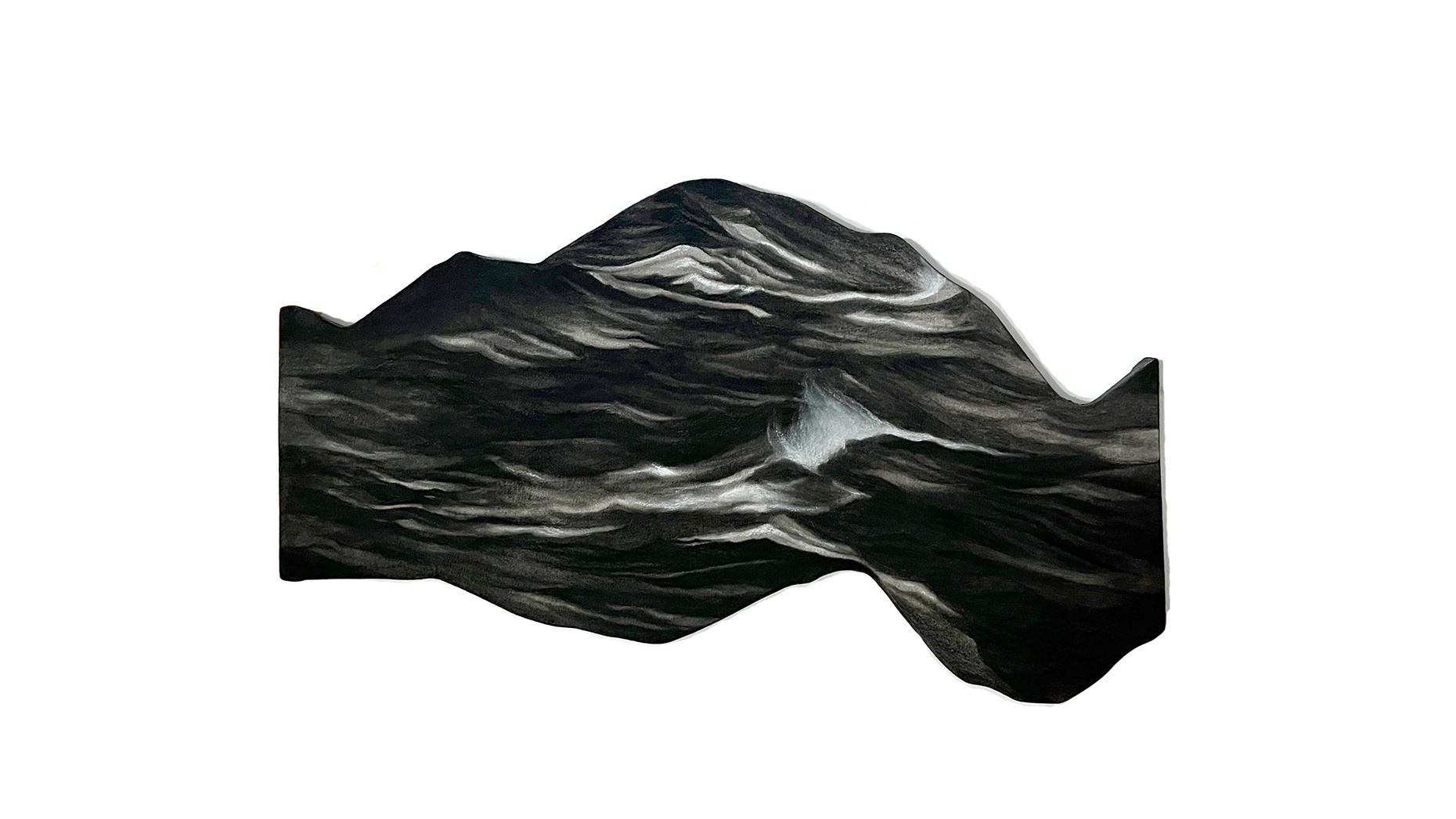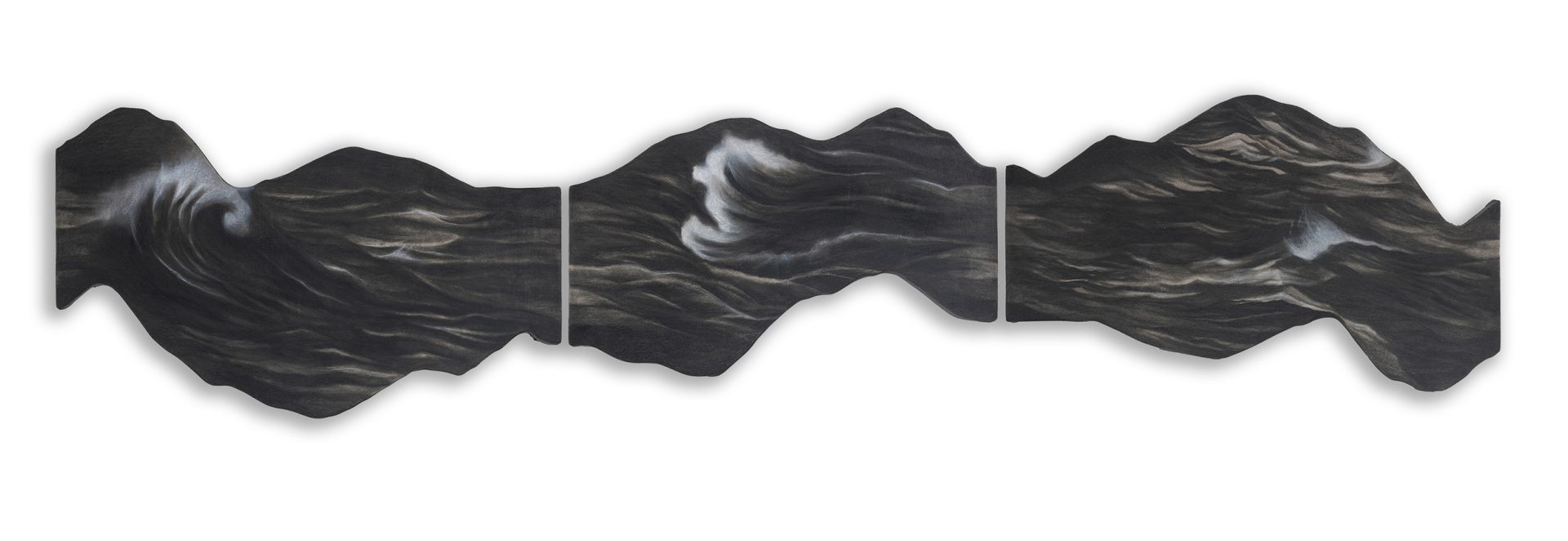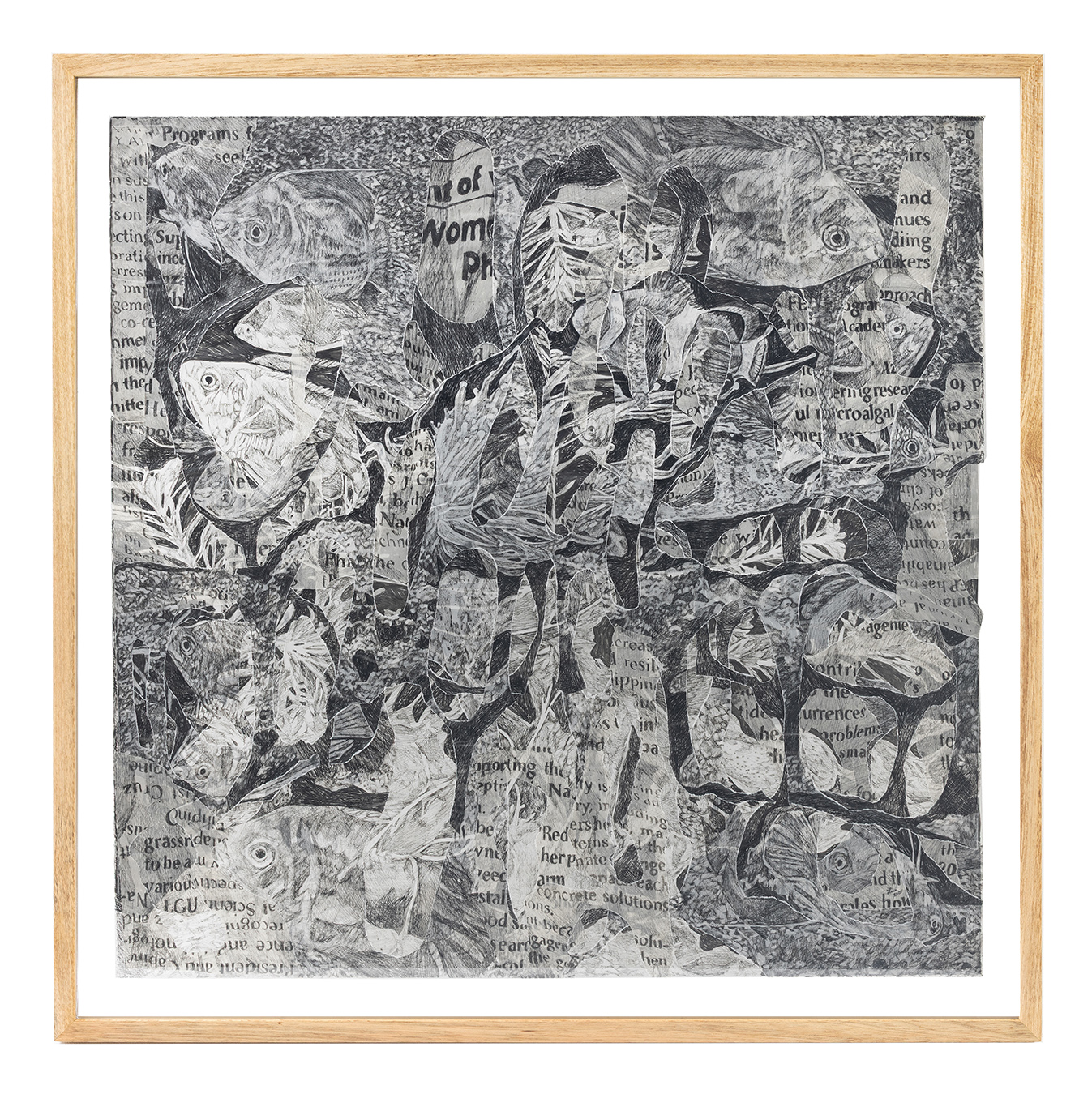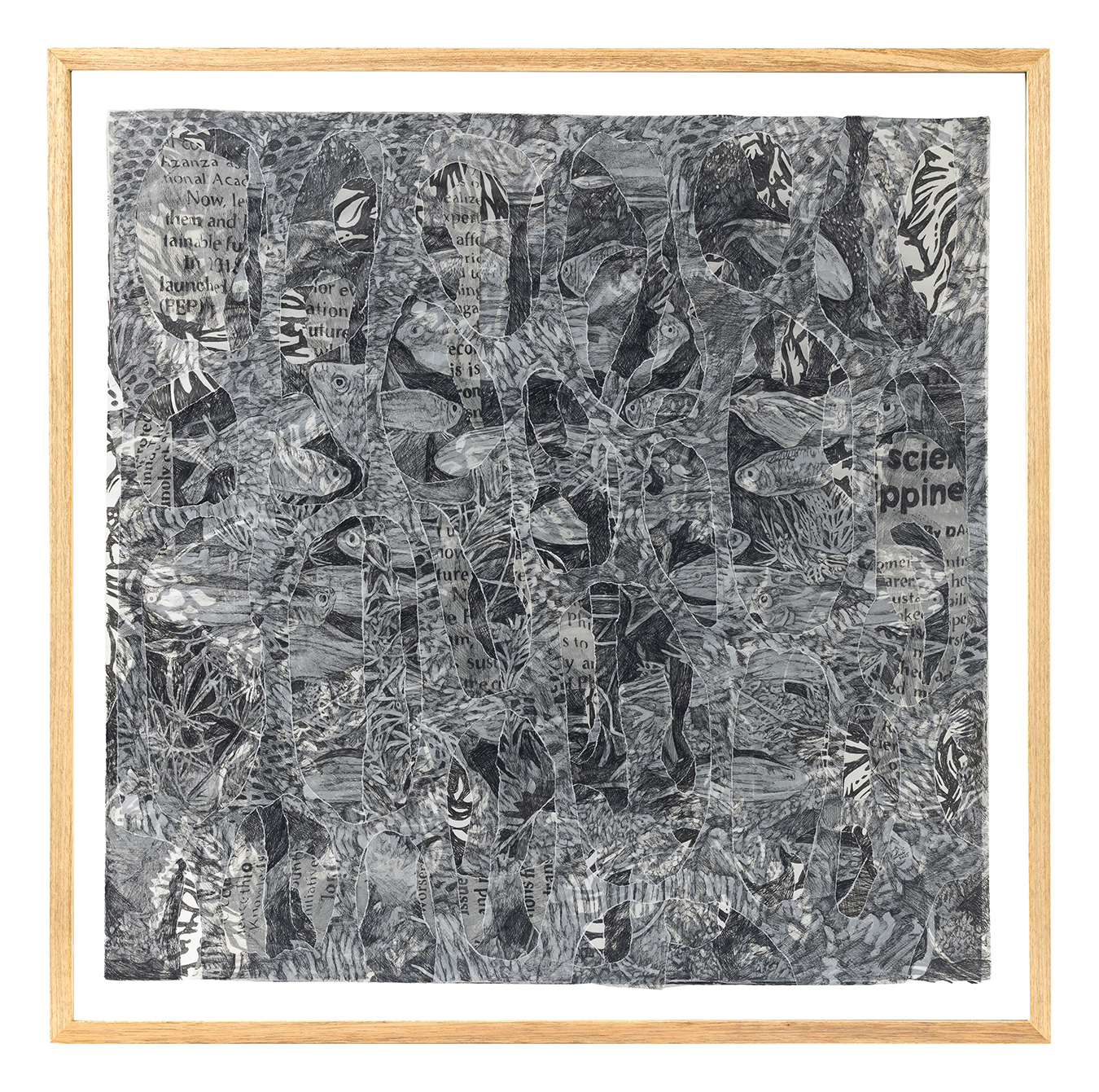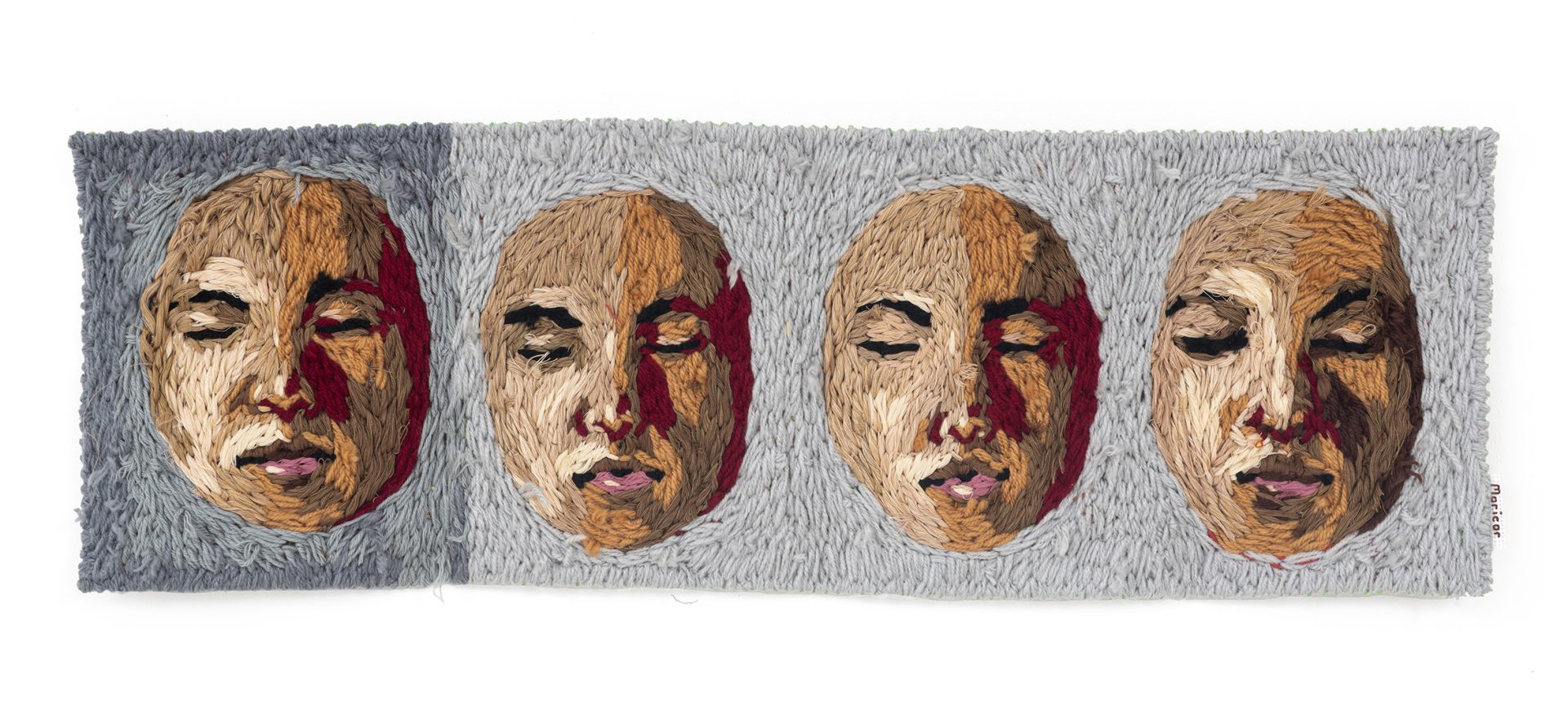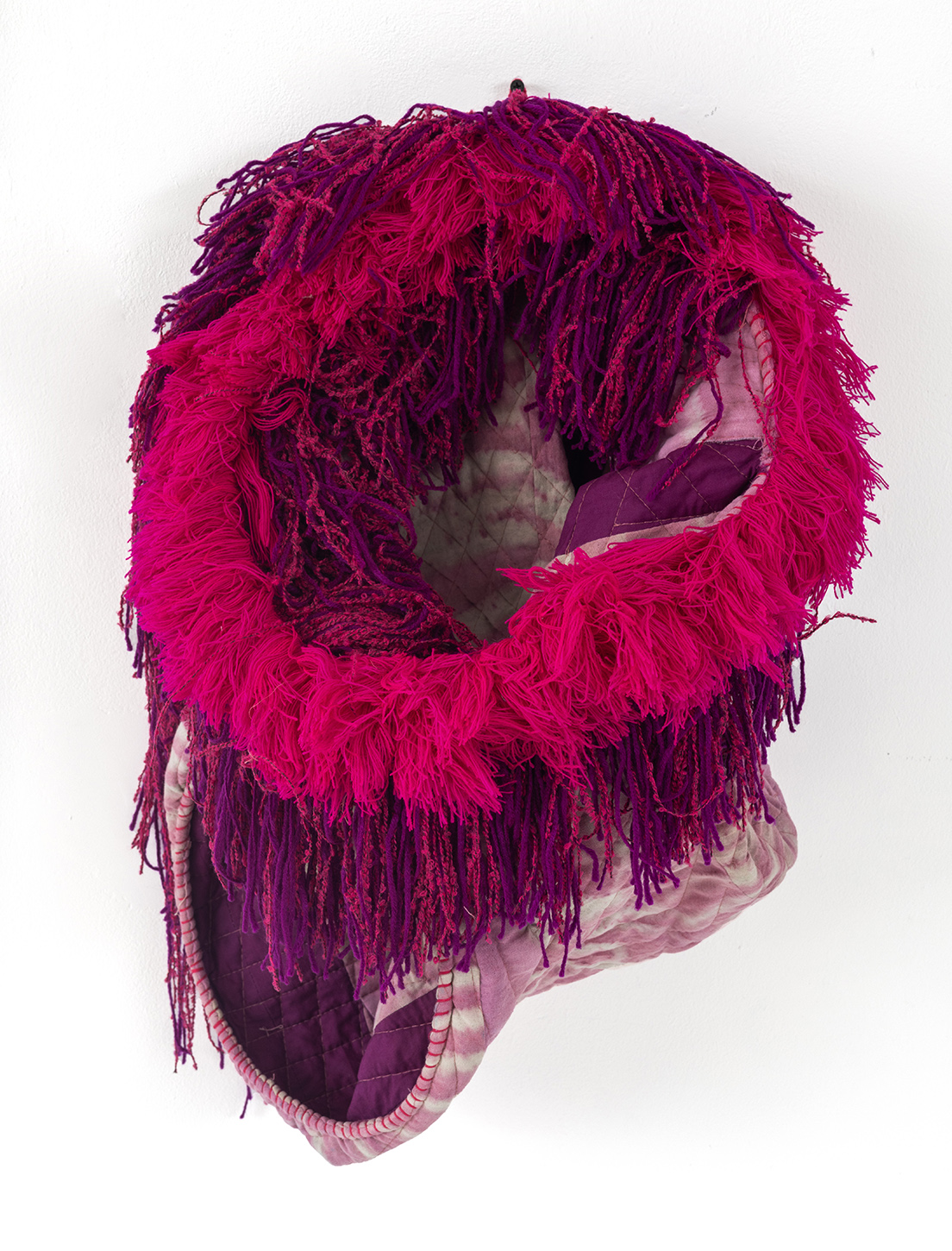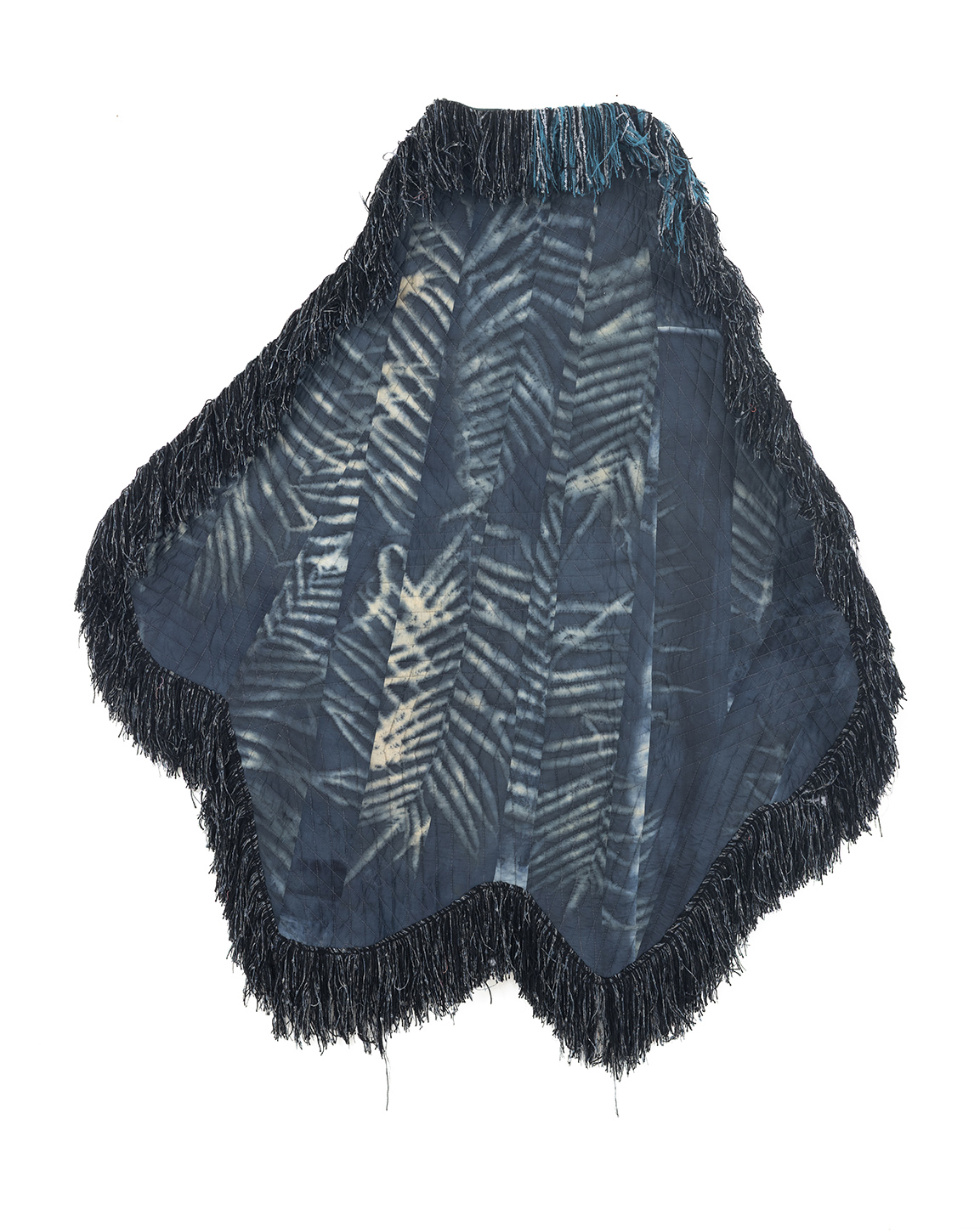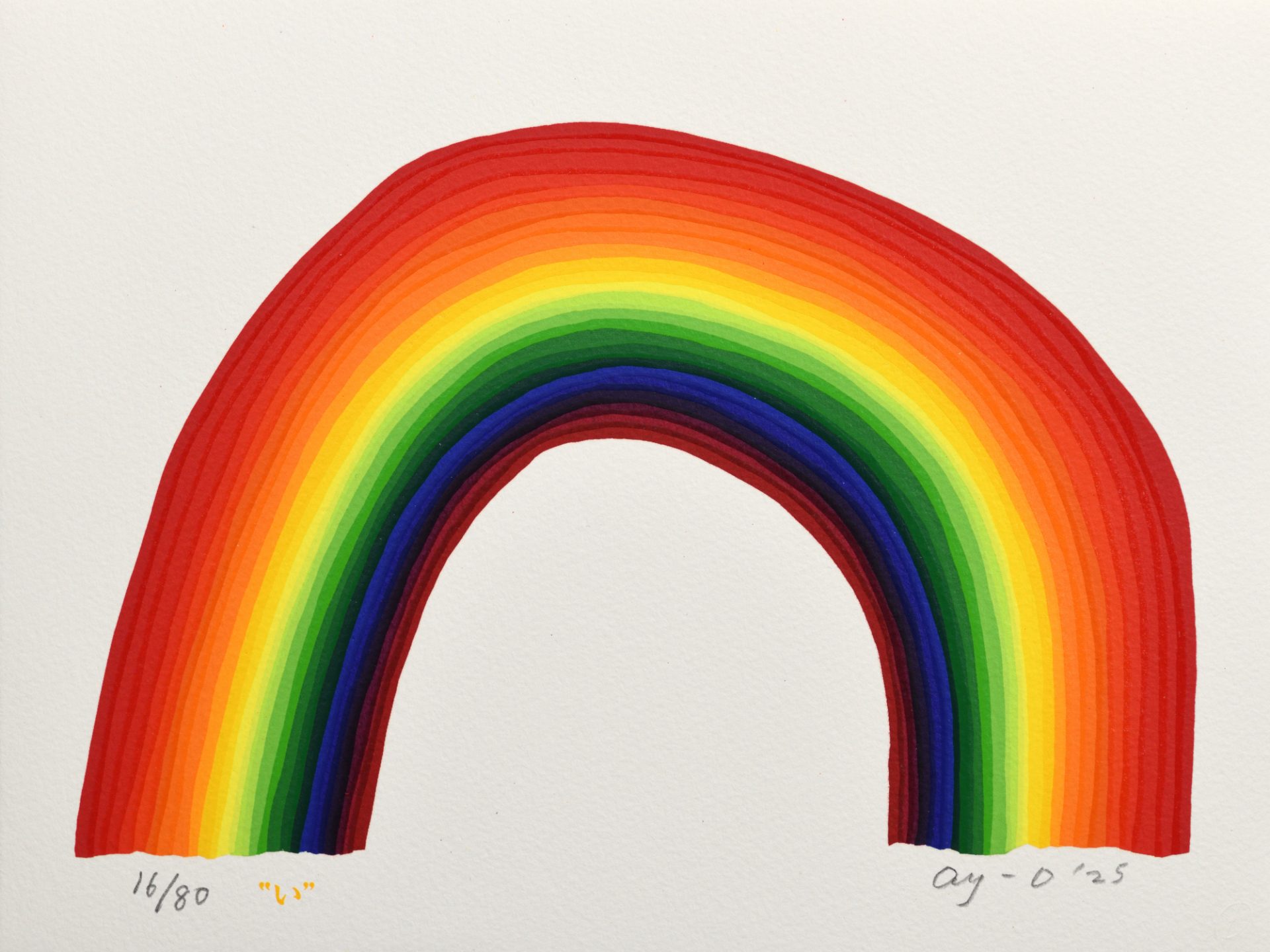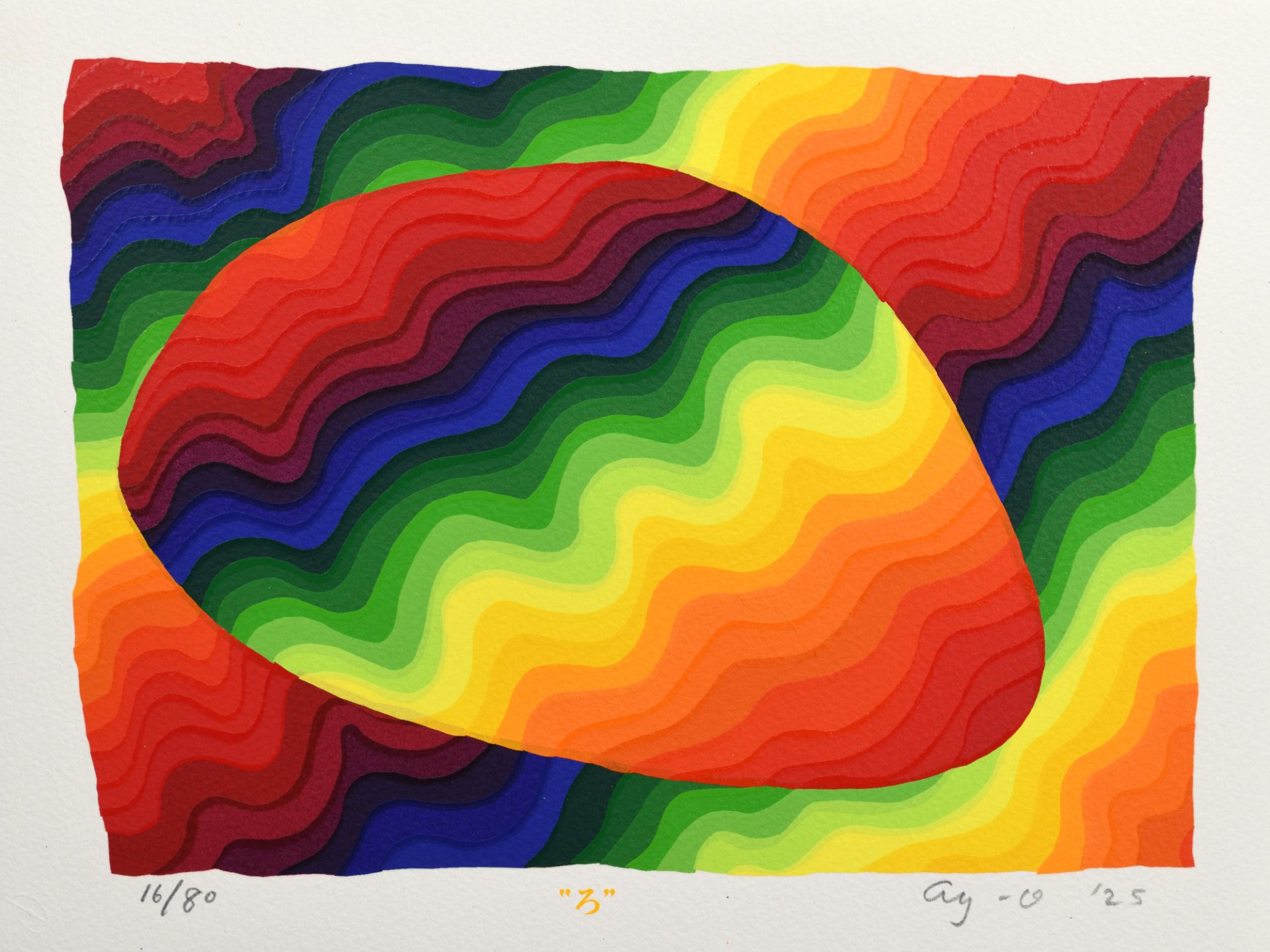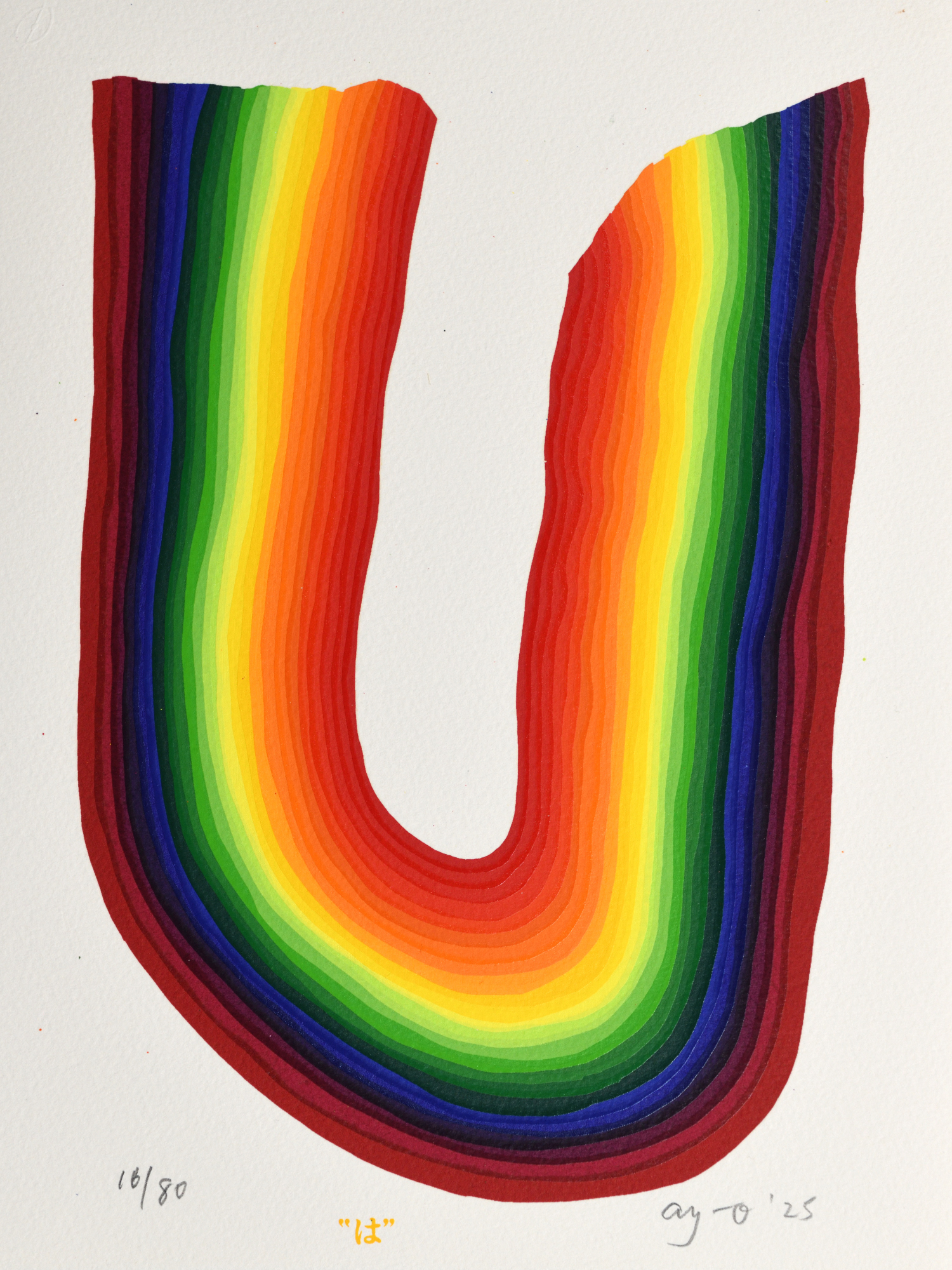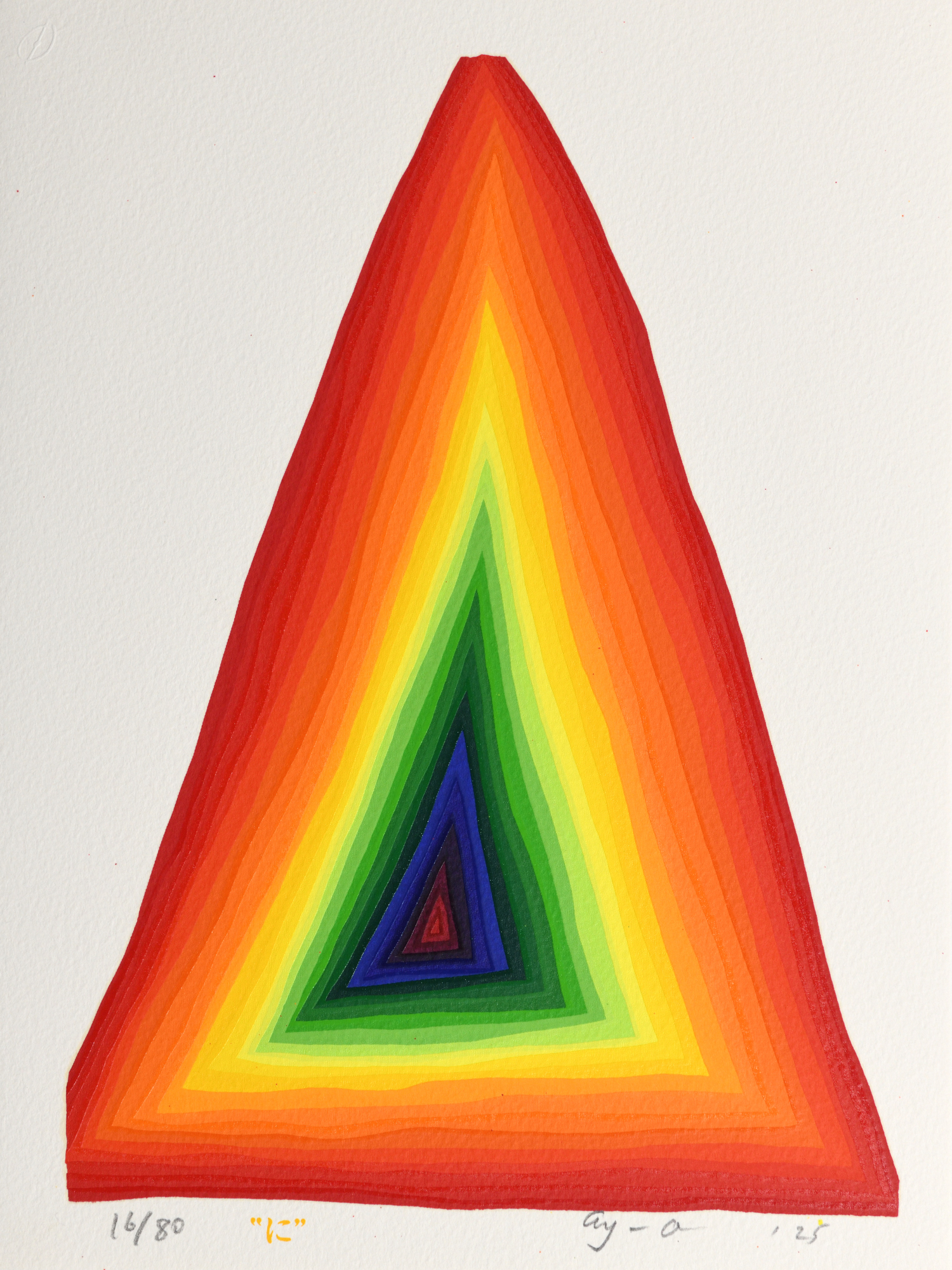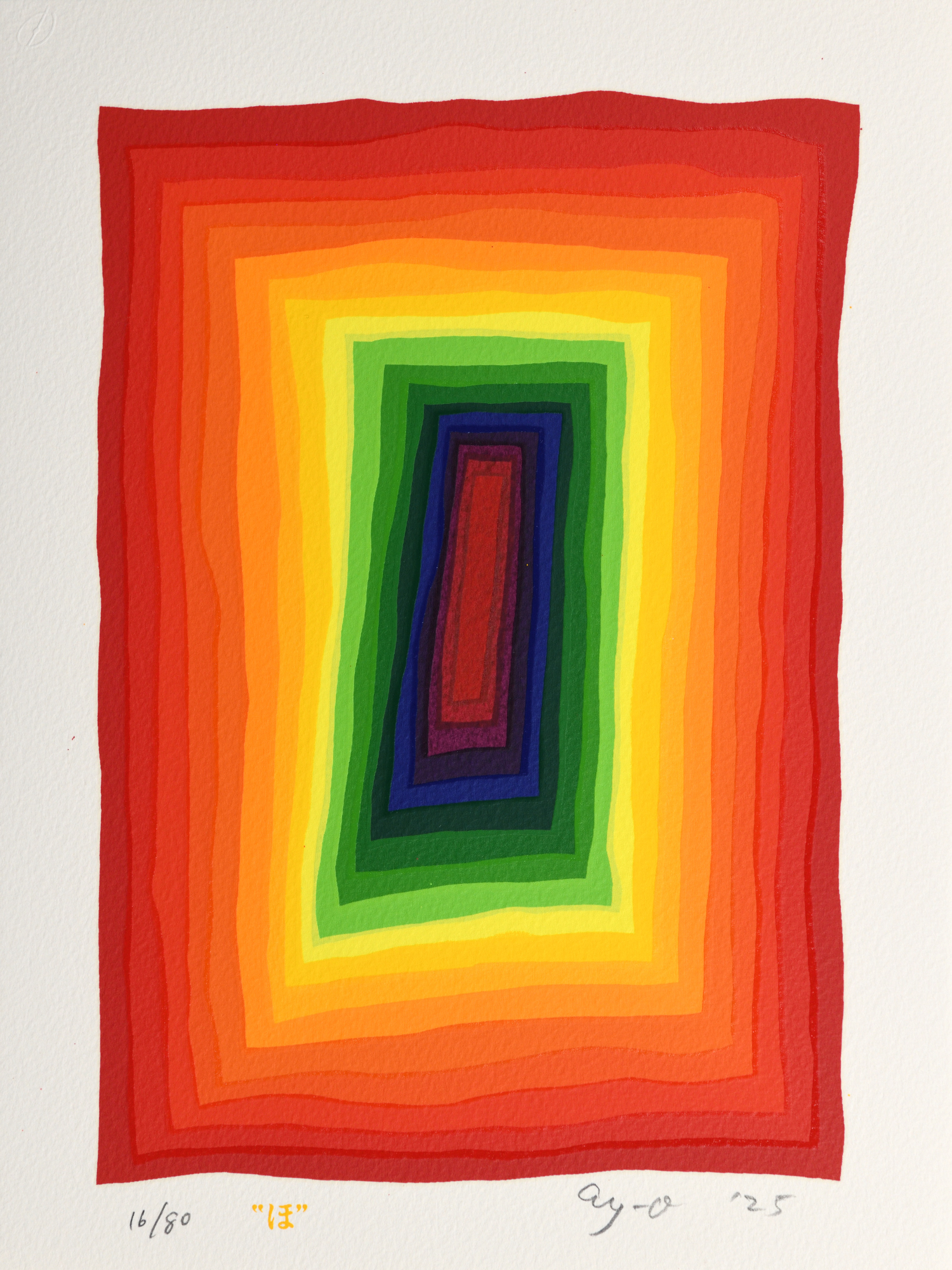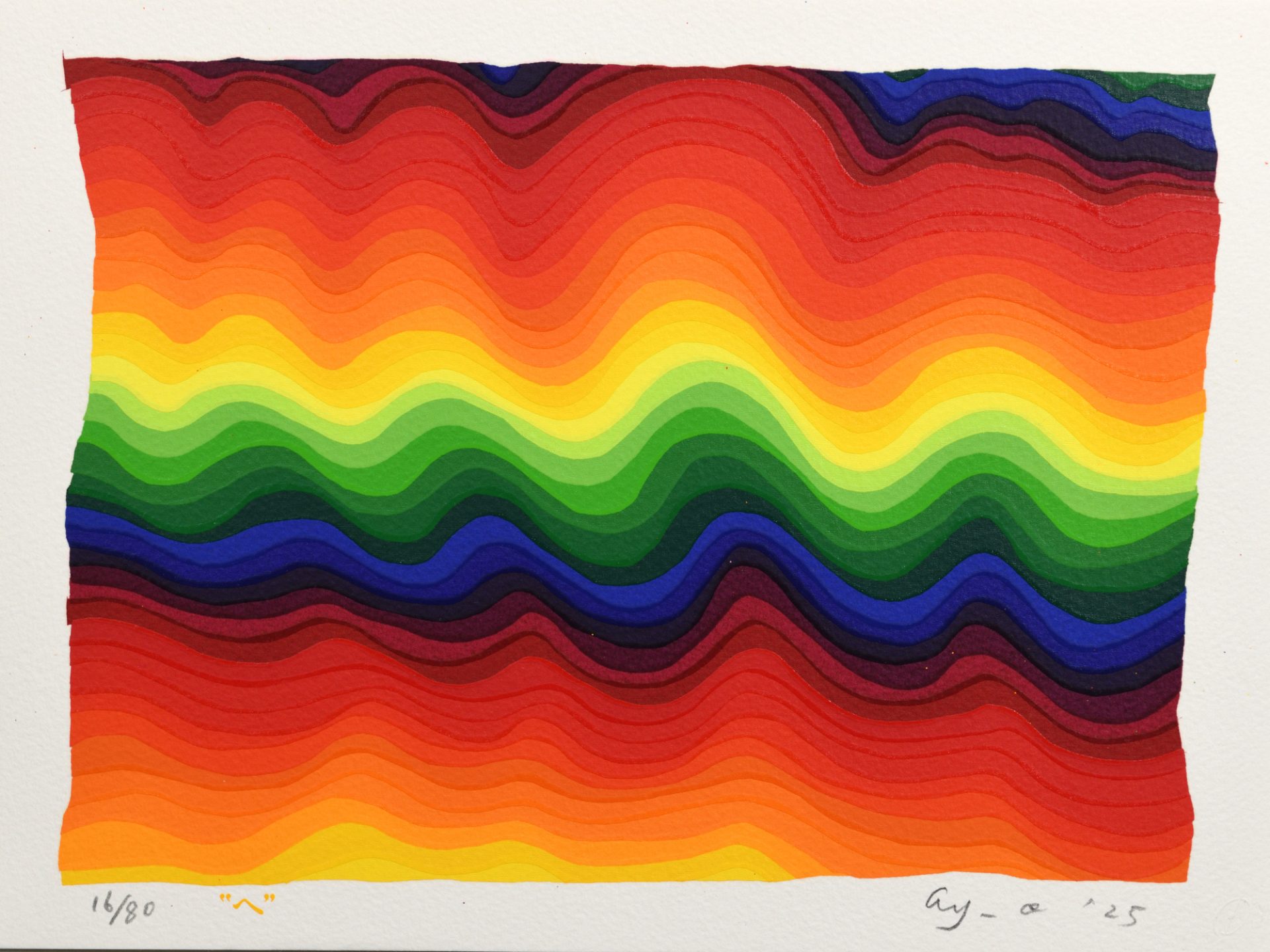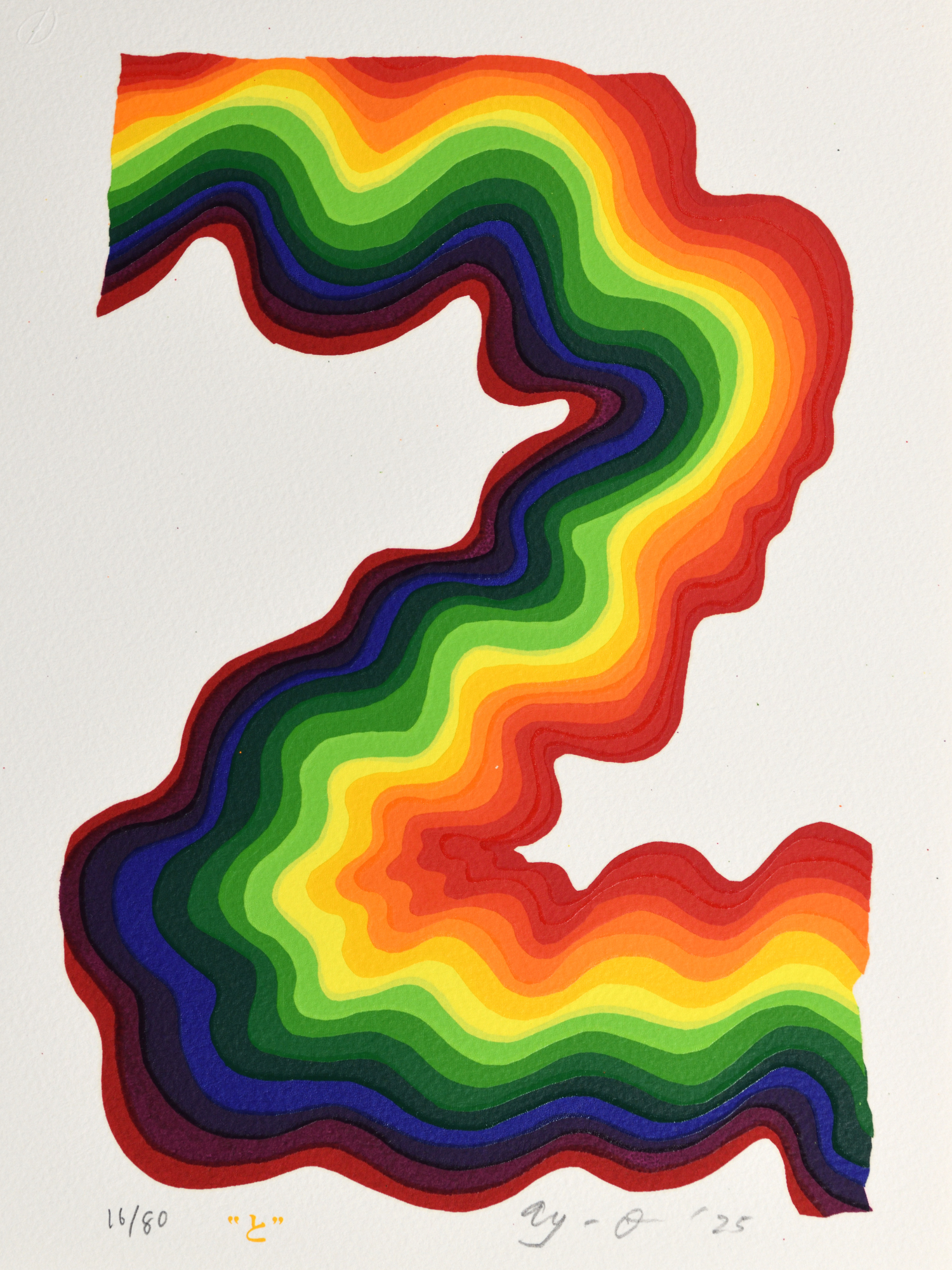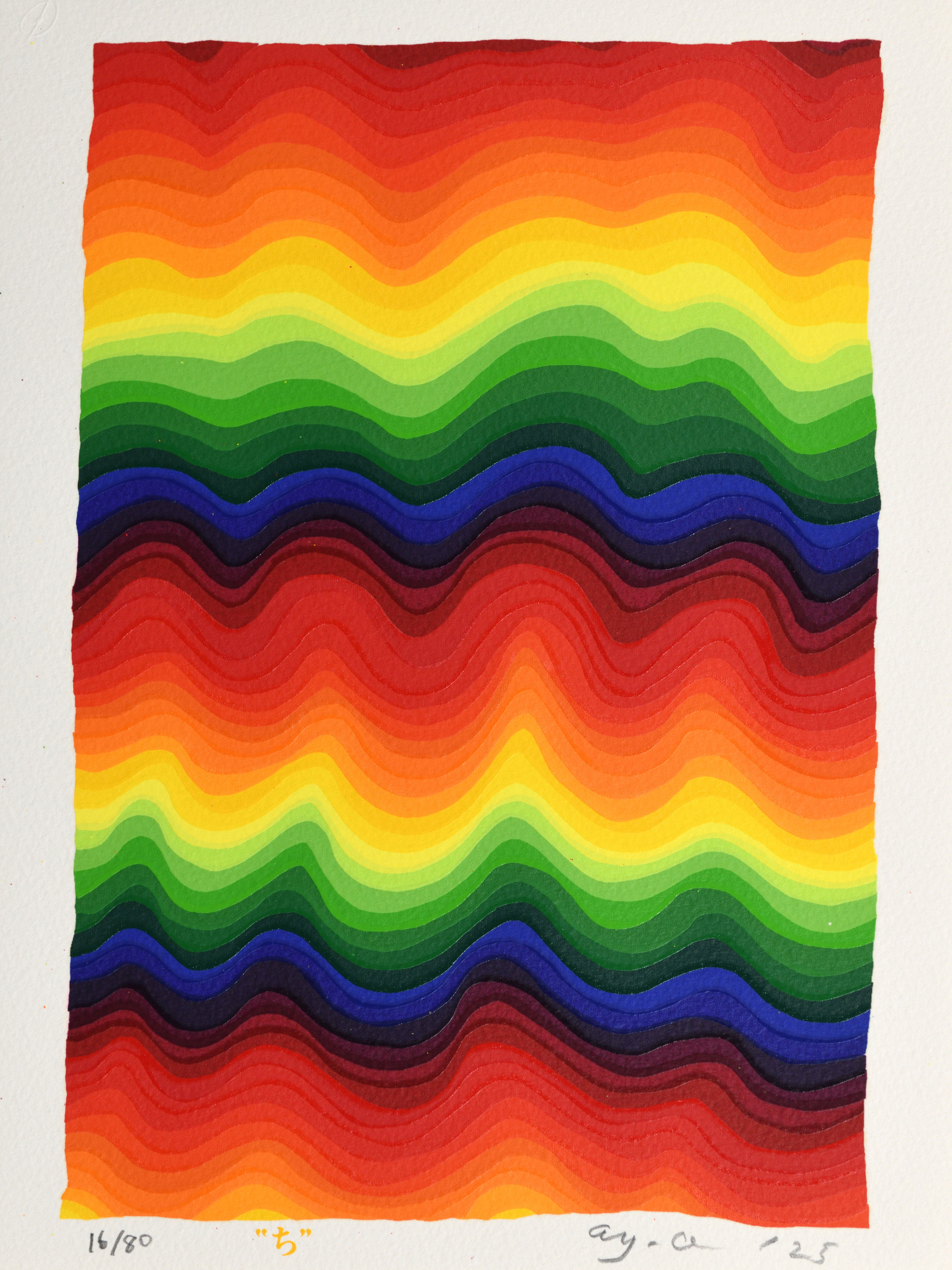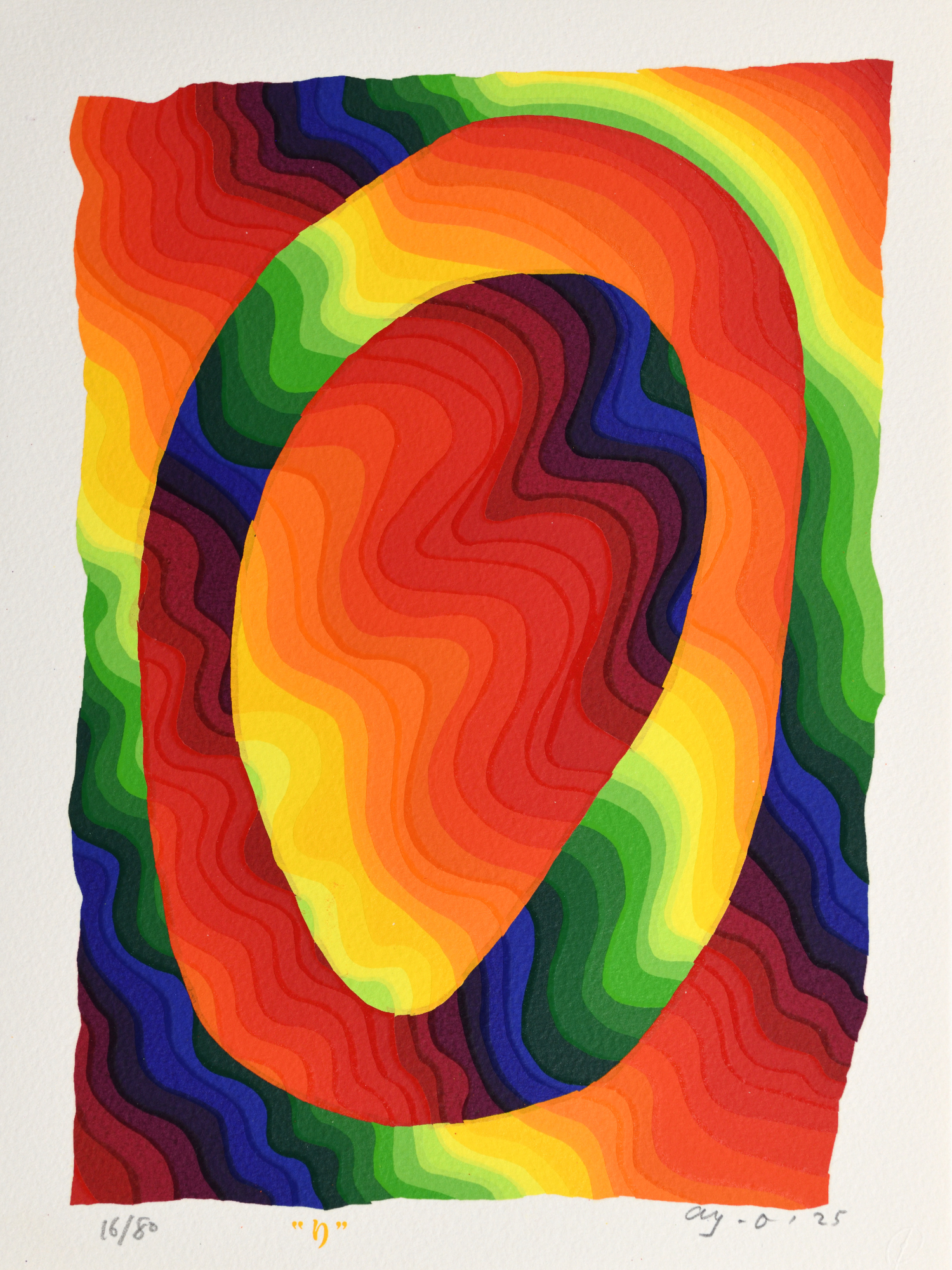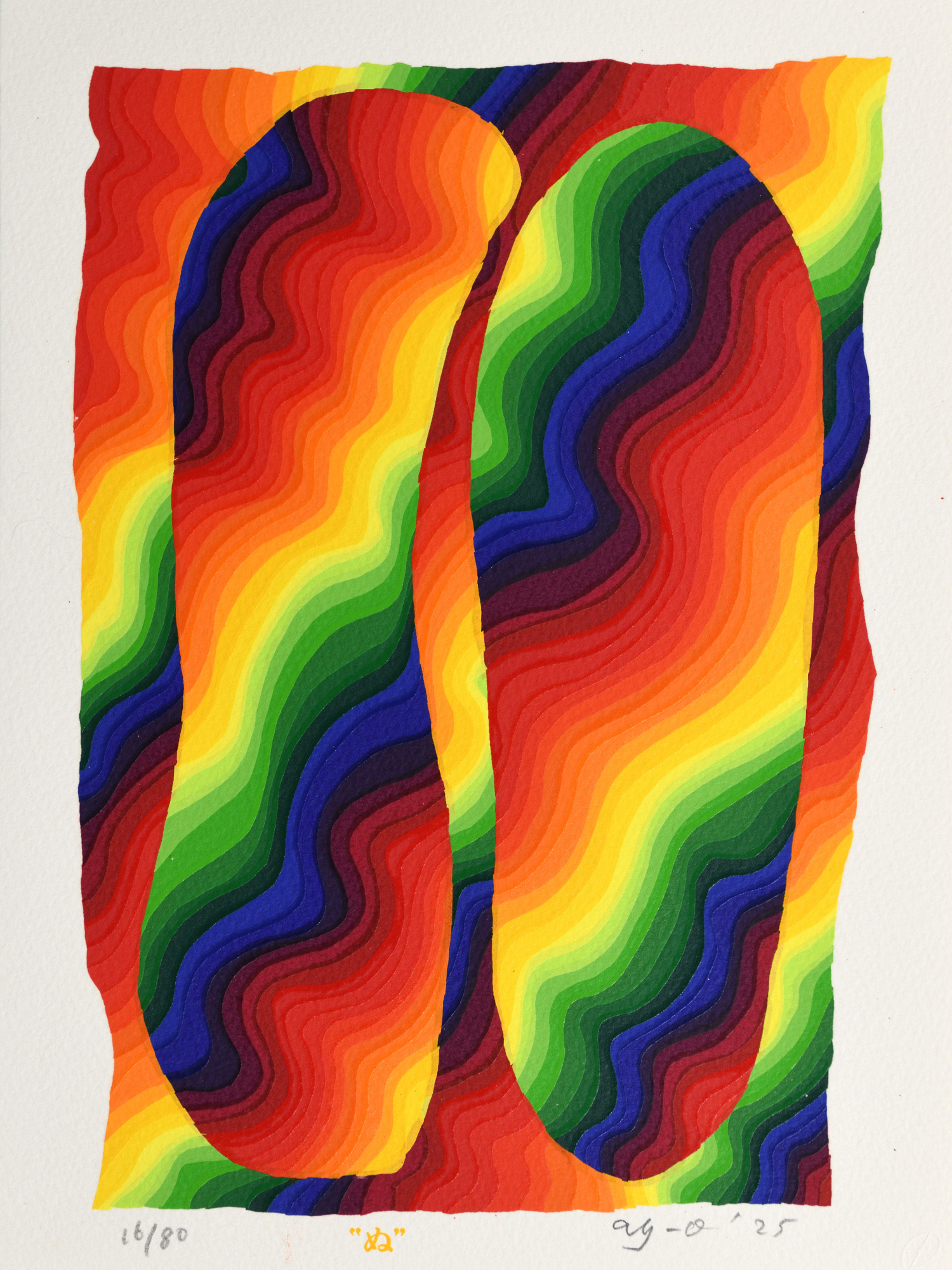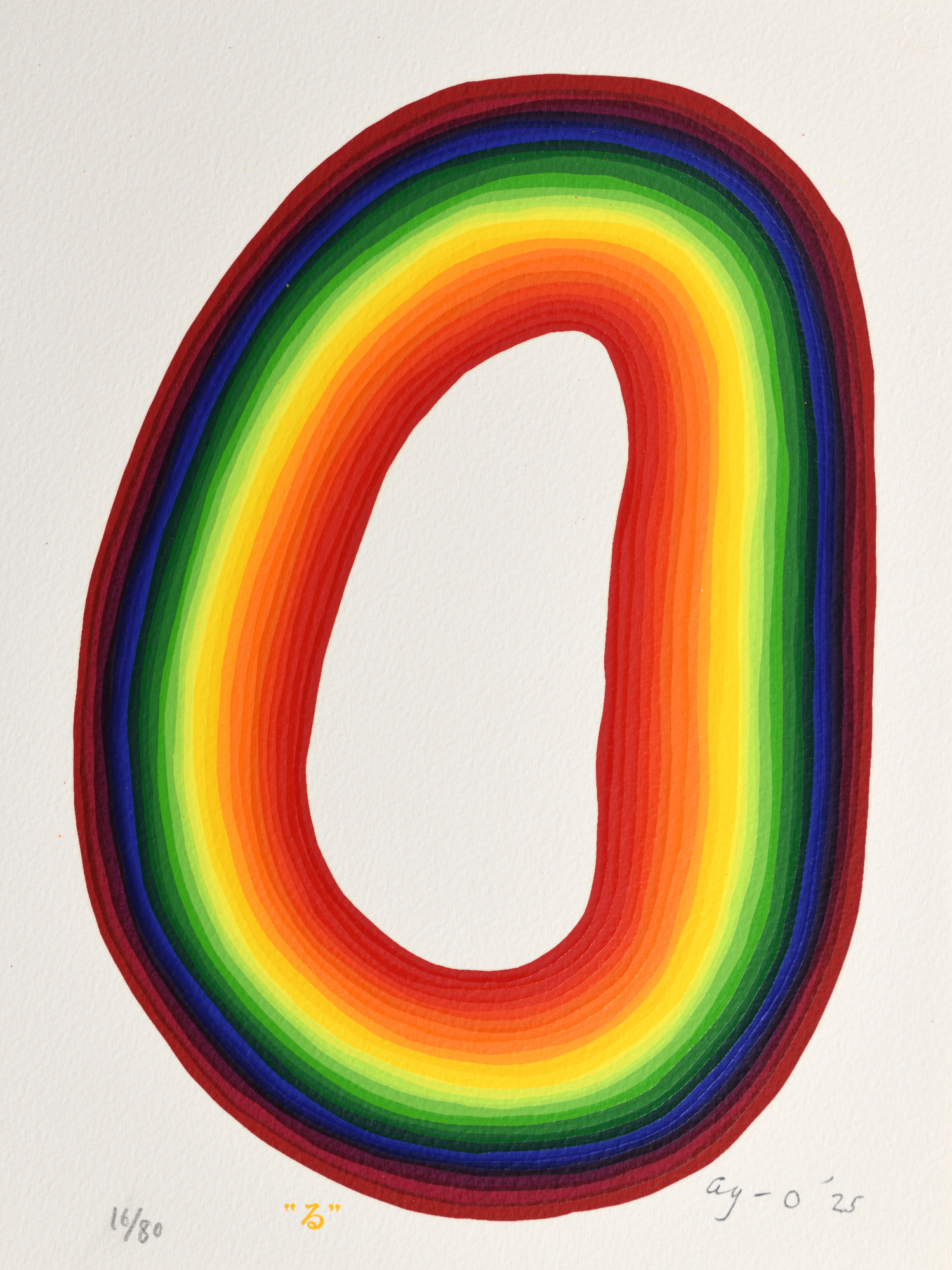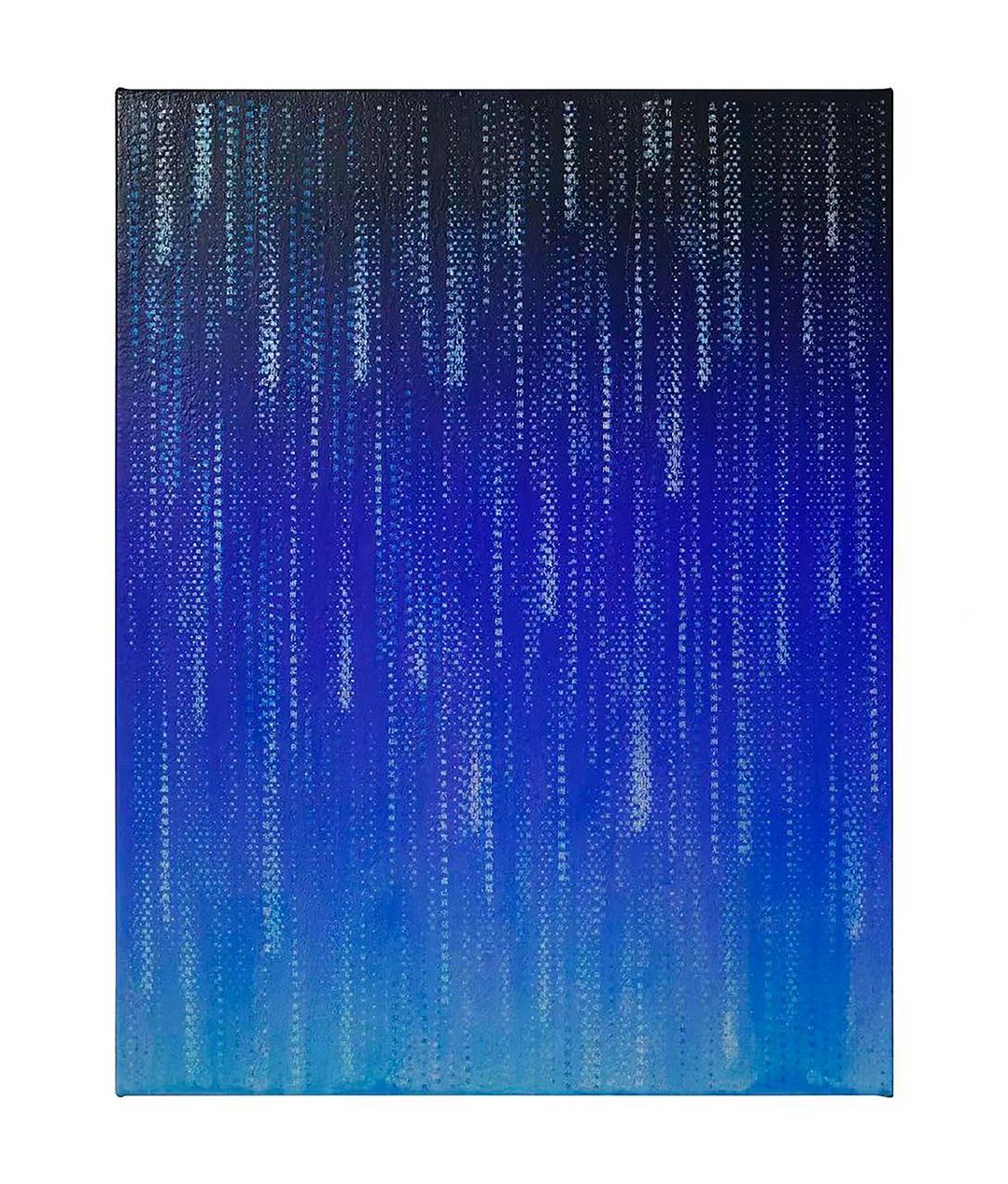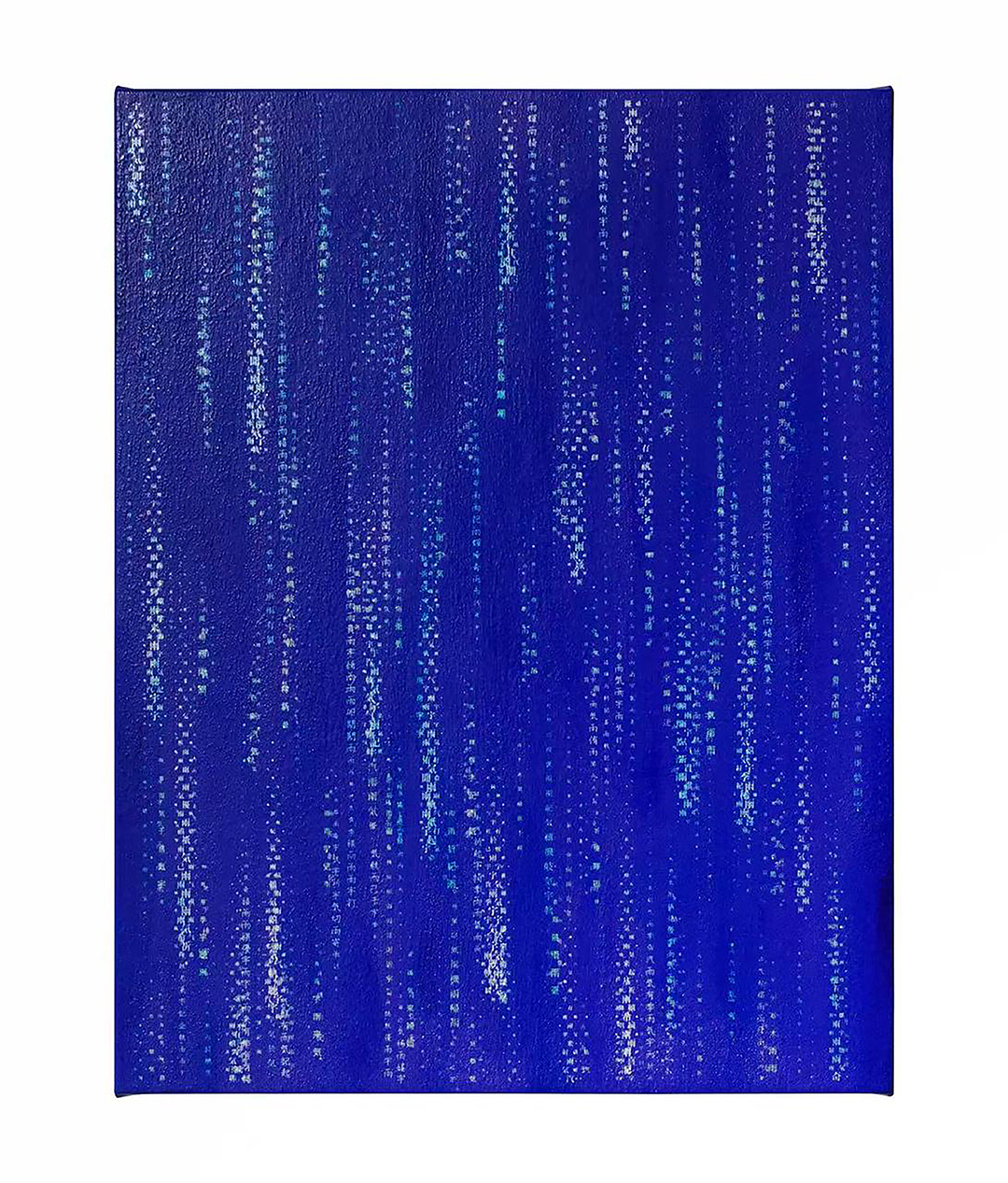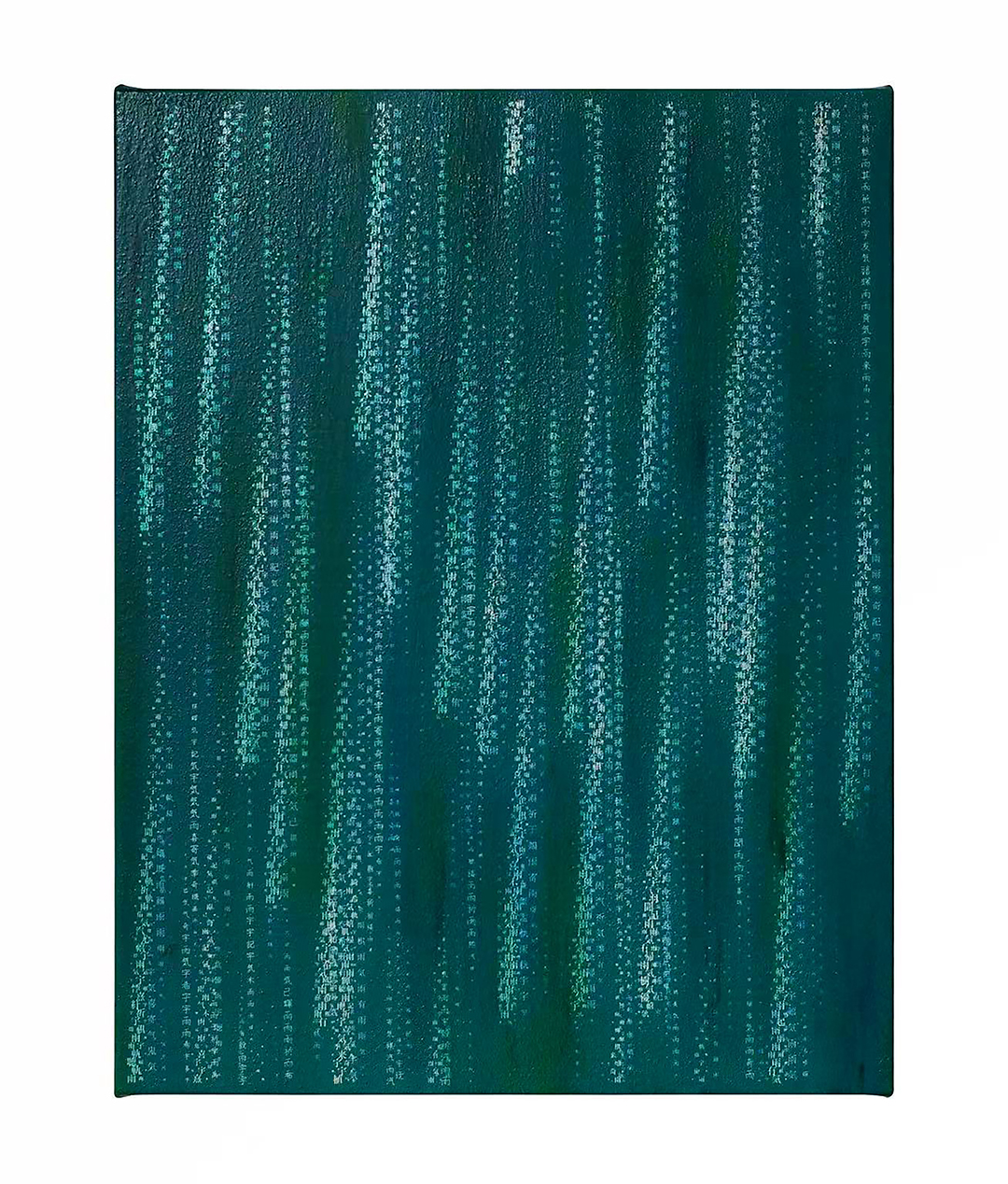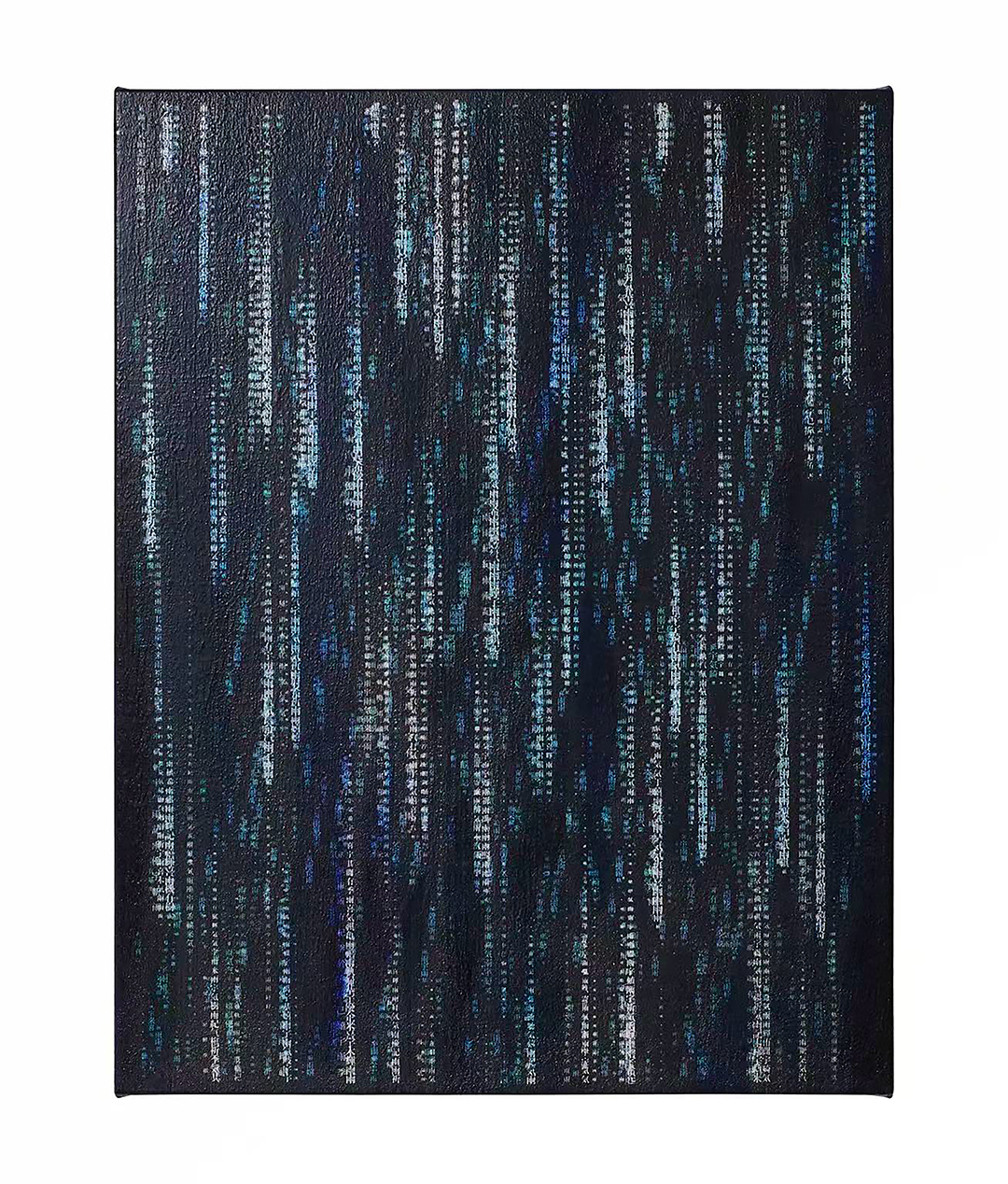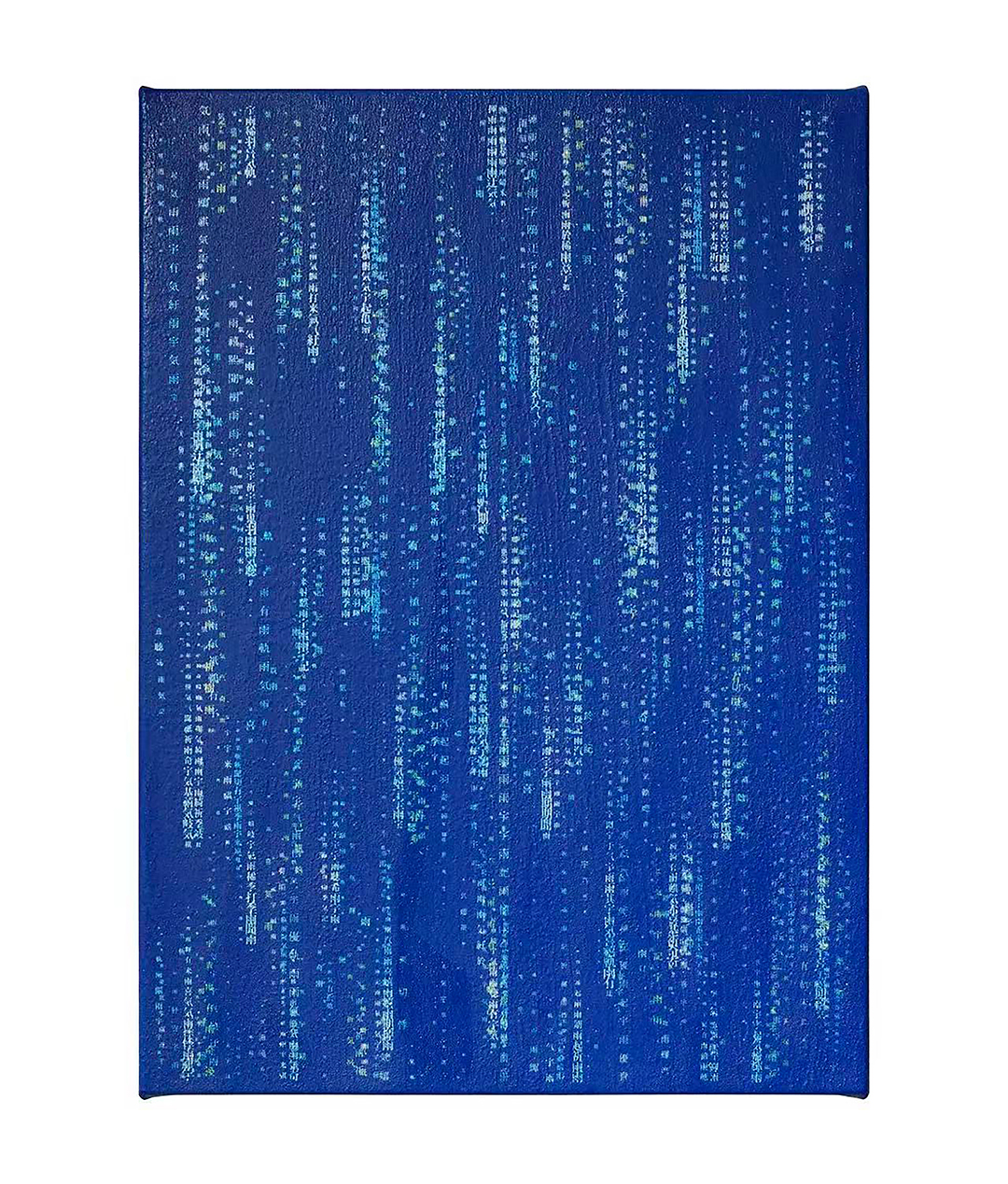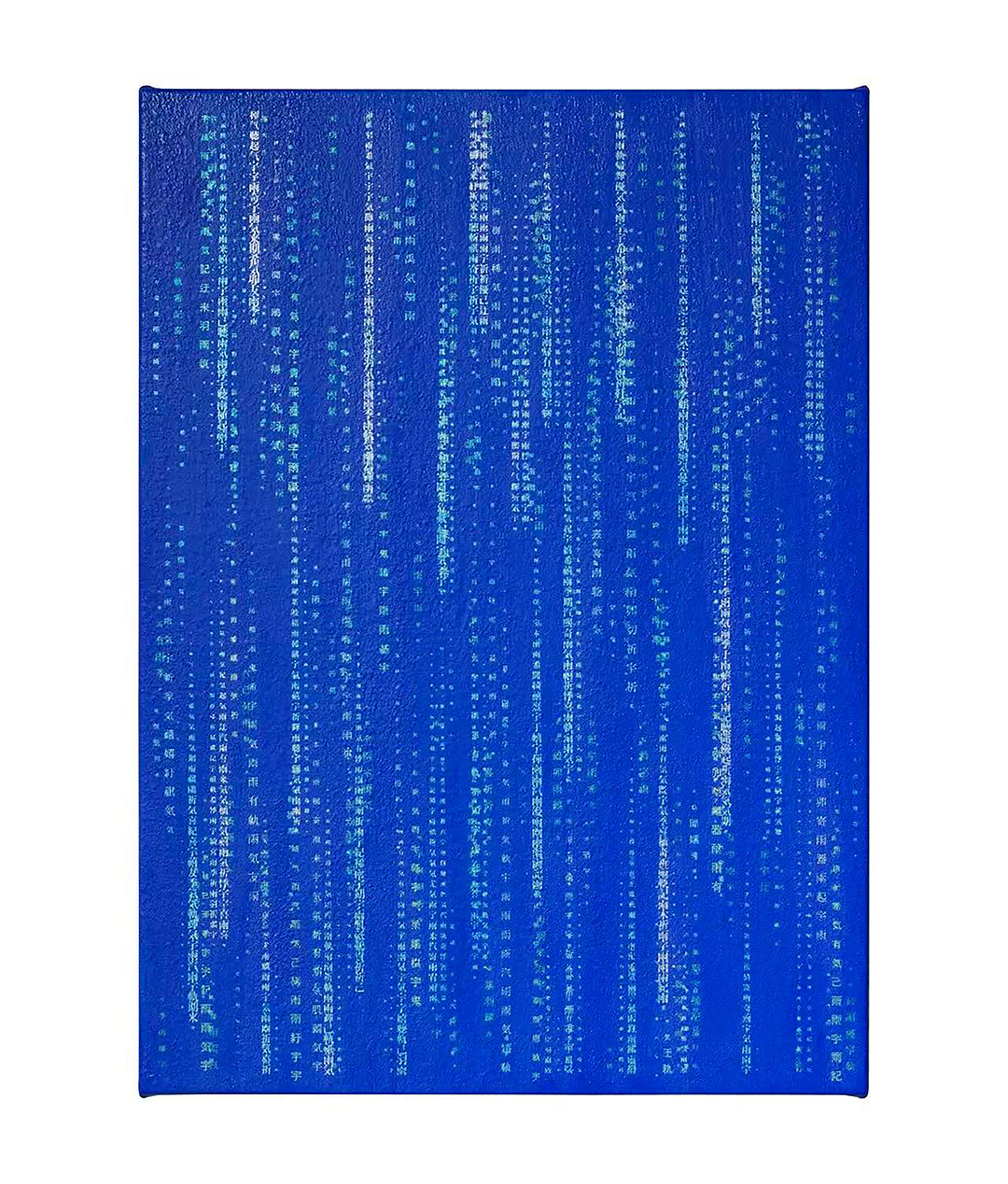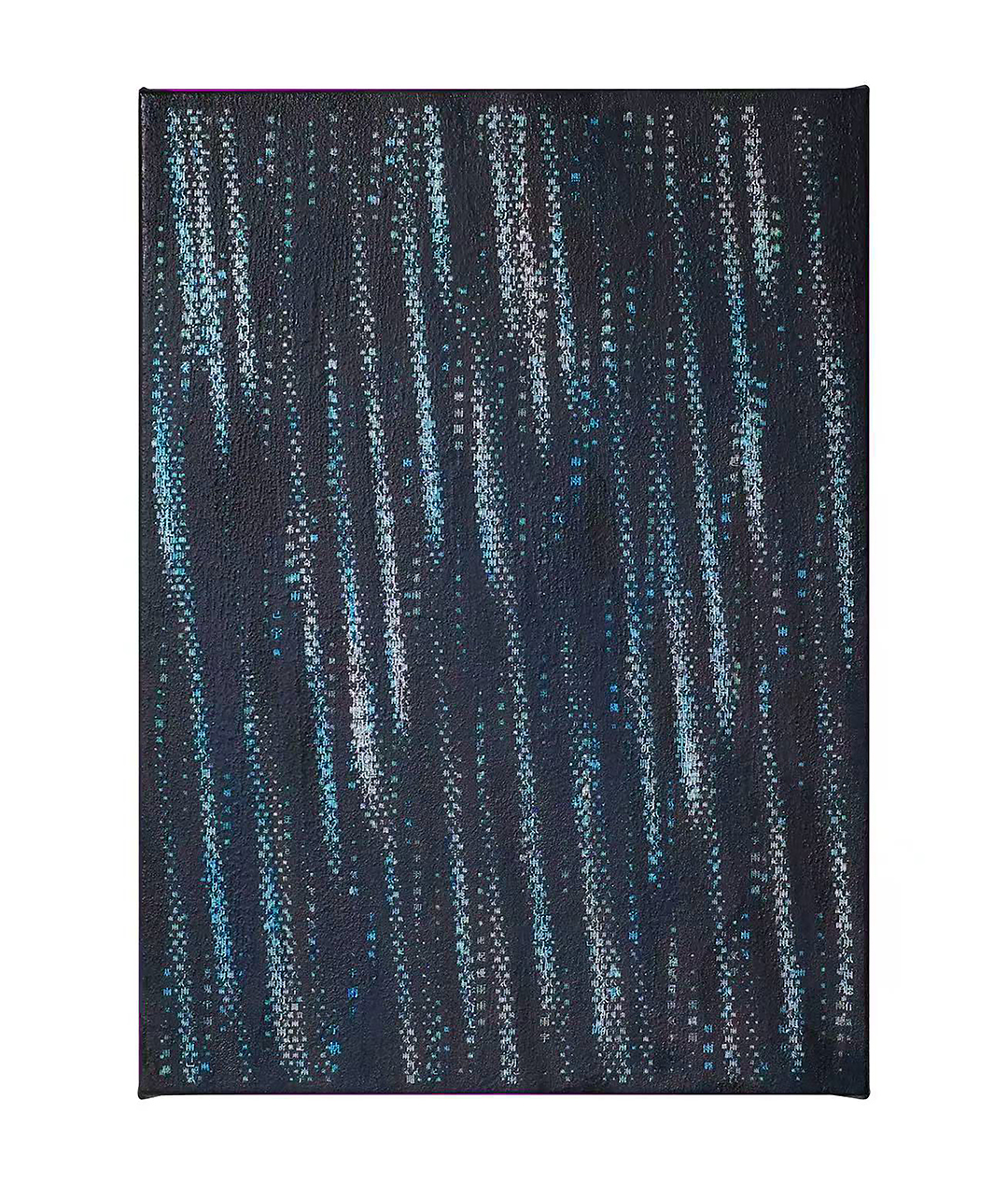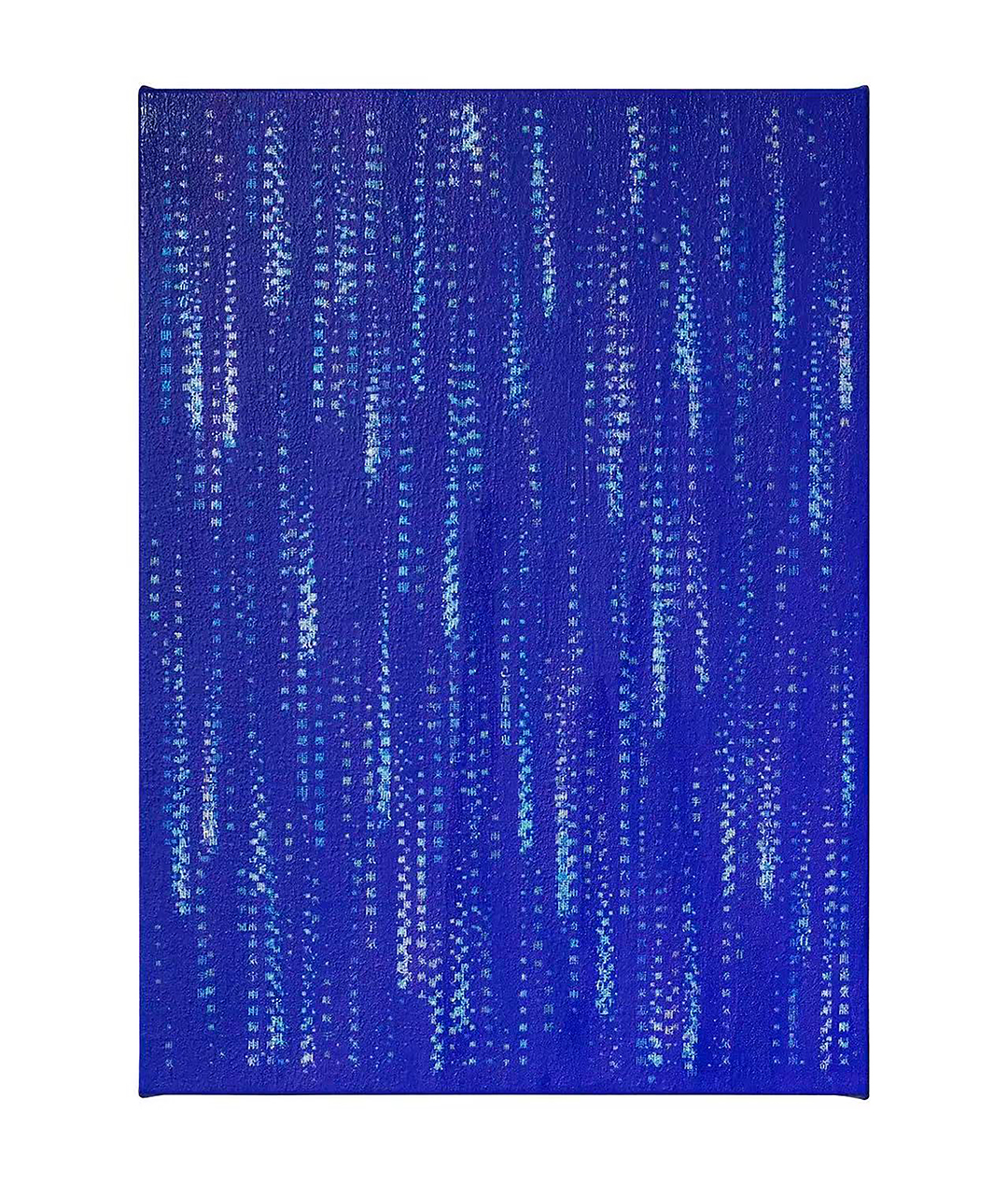CIMB Artober: Art and Soul 2025
Group Exhibition:-
Malaysia:-
Fazrin Abd Rahman
Haafiz Shahimi (APIS)
Husin Othman (Sean)
Mohd Fairuz Paisan (Po Oi)
Nor Tijan Firdaus
Pamela Tan
Shí
Philippines:-
Christina Dy
Lui Gonzales
Maricar Tolentino
Marionne Contreras
Japan:-
Ay-O
Yoichiro Otani
V.I.P. Preview: 25th September 2025
Public Admission: 26th – 28th October 2025
Malaysia International Trade and Exhibition Centre (MITEC), Kuala Lumpur
*Click on images to zoom in
- Fazrin Abd Rahman
Fazrin Abd Rahman is a Malaysian fine artist whose practice bridges traditional Malay craft with contemporary material exploration. Rooted in weaving patterns such as kelarai, his work reinterprets cultural motifs through the use of industrial media like aluminum, spray paint, and geometric construction. By transforming handwoven traditions into sculptural, reflective forms, Fazrin’s practice emphasizes the resilience of cultural identity while reimagining its place within modern contexts. His works embody a dialogue between heritage and innovation, preserving the rhythm of tradition while opening new visual and material possibilities.
In Therapy, Fazrin draws inspiration from the Kelarai Bunga Melor embroidery pattern, whose intertwined jasmine motifs symbolize beauty and nature. Traditionally found in batik, songket, and embroidery, this motif is re-expressed through modern materials while retaining its intricate identity. The work reflects on the act of preservation, showing how cultural essence endures even as techniques and media evolve. Similarly, Water Lilies reinterprets Kelarai Bunga Teratai, a weaving pattern symbolizing purity and balance. Here, Fazrin uses spray-painted aluminum strips woven into trapeziums and squares, their reflective surfaces shifting with light and perspective, evoking water’s transformative qualities and memory’s fluidity.
Together, these works highlight Fazrin’s commitment to honoring Malay cultural heritage while embedding it in a contemporary aesthetic language. The interplay of soft tradition and rigid materiality, permanence and impermanence, creates a layered reading of continuity and renewal. His recent exhibition foregrounds this synthesis, presenting kelarai not as a relic of the past, but as a living, adaptable form—alive in reflection, geometry, and the enduring spirit of craft.
- Haafiz Shahimi (APIS)
Haafiz Shahimi (b. 1986), also known as APIS, is a Malaysian interdisciplinary artist whose practice bridges printmaking and performance art. Since 2014, he has pioneered pyrography print techniques inspired by batik traditions, using heated metal matrices to burn cultural and mythological imagery onto canvas, jute, and other surfaces. His work engages with dualities—science and mythology, East and West, physics and philosophy—while experimenting with inverted burns, chemical treatments, and automotive paint to merge traditional motifs with industrial processes. Through these innovations, APIS has established a distinctive visual language that redefines contemporary Malaysian art, balancing heritage with experimentation.
For APIS, art and life are both adventures shaped by moments of discomfort, uncertainty, nervousness, and excitement. He embraces these states not as obstacles but as catalysts for transformation, believing that hesitation and risk often lead to the most memorable experiences. His philosophy urges us to be brave enough to leap, to end and begin anew, and to carry each encounter as a memento of growth. In this way, his work becomes more than an exploration of materials and imagery—it is an invitation to embrace change, find beauty in challenges, and recognize the courage that makes each journey unique.
- Husin Othman (Sean)
Husin Othman, known professionally as Sean, is a Malaysian contemporary artist whose practice is rooted in memory, identity, and cultural continuity. A graduate with honors in Fine Art from UiTM in 2013, Sean draws upon his upbringing in rural Perak—where he was raised alongside seven siblings—as a wellspring of inspiration. His evocative figurative works capture the spirit of Malaysian life through nostalgic portrayals of everyday scenes, reflecting the values and traditions of Malay culture. In 2014, Sean was recognized as Malaysia’s Most Promising Artist with the UOB Painting of the Year award.
In 2024, he was invited to participate in the inaugural Harmony Unity: China–Malaysia Artwork Exchange Exhibition in Guilin, China—an initiative aimed at fostering cross-cultural understanding through contemporary art. Representing Malaysia among a curated selection of emerging voices, Sean’s inclusion highlighted his growing role in shaping regional artistic discourse. His work was acquired into the permanent collection of the Guilin Art Museum, underscoring his resonance within the broader transnational art landscape and affirming his position as a vital voice in Southeast Asian contemporary art.
This artwork serves as a frame of memory, capturing a place that was once part of the artist’s life. It reflects a past that still breathes in memory—every street corner, every worn-out alley, every space once filled with voices and stories. Though the physical location may have faded with time, the work presents it in two contrasting dimensions: a decaying reality and a digitally enhanced version, shaped by idealized memory. The piece evokes nostalgia, perhaps of childhood moments or unnoticed beauty, now reimagined through the lens of technology. It portrays the irony of modern life, where a small screen can transform perception—hiding flaws and crafting beauty that never truly existed. On one side, the real world appears dark and disordered—crowded markets, silent rusty streets, and abandoned playgrounds rendered in muted tones and harsh lines. Yet within the screen, everything is vibrant, orderly, and idealized, suggesting how digital aesthetics can mask reality and reshape how we remember the past.
- Mohd Fairuz Paisan (PoOi)
Mohd Fairuz Paisan (b. 1981, Malaysia), known as Po Oi, is a contemporary sculptor known for his innovative use of circular forms in wood and fiberglass. A Master’s graduate in Fine Art and Technology from MARA University of Technology (2014), Po Oi blends traditional craftsmanship with Art Deco influences, creating works rich in color, symbolism, and emotional depth. His sculptures—ranging from wall-mounted to free-standing—pair fiberglass, representing external beauty, with wood, symbolizing inner essence, reflecting on the contrast between appearance and reality..
In 2025, Po Oi represented Malaysia at the World Expo in Osaka, exhibiting under the Malaysian Pavilion, with several of his works acquired by the Ministry of Investment, Trade and Industry (MITI). That same year, his solo exhibition “I AM PO OI 3.0” at Art Central Hong Kong marked a major step forward for Malaysian sculpture on the international stage. His work is recognized for its technical precision, cultural references, and quiet emotional resonance.
Po Oi’s recent series, Circle Within a Circle and Seeds, expand his exploration of identity, memory, and transformation. Using fiberglass, automotive paint, and inlaid wood, he creates sculptural forms that speak to both personal and collective experience. While Circle Within a Circle delves into repetition and emotional cycles, Seeds imagines growth and heritage as internal forces. Together, these works reflect Po Oi’s ongoing commitment to crafting thoughtful, visually compelling narratives that bridge tradition and contemporary culture.
- Nor Tijan Firdaus
Born in 1986 in Klang, Malaysia, Tijan earned her BA (Hons) in Fine Art from UiTM in 2009, majoring in Sculpture with a minor in Painting. Her signature style—relief-like surfaces that merge painting and sculptural form—reflects this dual foundation. Tijan’s MA studies at UiTM Jalan Othman, particularly a seminar on sustainability in Art and Design, deepened her focus on environmental issues and shaped her artistic direction.
Balancing motherhood and domestic life, she became increasingly aware of post-consumer waste—electronics, toys, furniture, and textiles—which she began integrating into her work. Sourcing discarded materials from home, friends, and recycling plants, Tijan critiques consumer culture, materialism, and the environmental toll of modern life. Electronic waste, in particular, inspires her with its vivid color and intricate detail, forming the basis of her “New Formal” aesthetic—a Malaysian response to post-formalism through assemblage and sculpture.
In her second solo exhibition “SEEK”, Tijan introduces cutout forms of Pac-Man ghosts, embedding natural imagery like forests and flowers within them. These works serve as metaphors for the maze-like pursuit of human desires and consumption, echoing the game’s endless chase. Through this visual language, Tijan reflects on the ecological consequences of modern living, transforming playful nostalgia into poignant commentary on sustainability and collective responsibility.
- Pamela Tan
Pamela Poh Sin Tan (b. 1991) is a Malaysian interdisciplinary artist and architectural designer whose practice bridges art, architecture, and design. Known for creating emotionally resonant sculptural forms, she blurs disciplinary boundaries to explore the unseen and the experiential. Her work seeks to evoke spatial narratives that are felt rather than merely observed, reflecting a deep commitment to both the poetic and the material.
Pamela holds a Master of Architecture (MArch) from the University of Greenwich, London (RIBA Part II), and a Bachelor of Science (Hons) in Architecture from Taylor’s University, Malaysia. Her project Mappa Mundi: A Map Maker’s Dream was featured at the Royal Academy of Arts Summer Exhibition in London (2015). She was also the final recipient of the Tan Sri Chan Sau Lai Architecture Award (2016). Her acclaimed works Eden and Projection Kite have since garnered international recognition, including the Iconic Award – Best of the Best from the German Design Council and Bronze/Merit awards at the Design for Asia Awards (2020).
Her thematic concerns include memory, ecology, cultural heritage, and the unseen emotional landscapes of space. Tan repeatedly returns to motifs drawn from nature—such as coral ecosystems, plant forms, and DNA-like structures—while grounding her work in her Malaysian context. Traditional crafts, heritage motifs, and ambient color palettes drawn from local culture often inform her sculptures and installations. For her, architecture and art are mutually informing: structure offers discipline and form, while art provides ambiguity, emotion, and invitation.
Pamela’s most recent solo exhibition, Specimen Garden, marks a significant maturation of her sculptural language. In this body of work, she presents coral-inspired forms that combine laser-cut steel structures, sand coatings, and luminous bead-like elements—a synthesis of precision and texture, of architecture evolving into organic form. Specimen Garden continues her exploration of ecological memory: how natural systems carry ancestral echoes, how the artificial and the living converge emotionally in space, and how art can build immersive environments that are deeply felt rather than merely observed.
- Shí
Shí (also known as Xin Lin) is the artist and founder of Shí Terrazzo Atelier, a creative studio based in GMBB dedicated to the revival and reinvention of terrazzo craftsmanship. Blending traditional techniques with contemporary aesthetics, she produces bespoke home décor pieces while also sharing her knowledge through workshops and collaborations. Her practice is rooted in both artistry and entrepreneurship, driven by a desire to expand the possibilities of terrazzo as a medium that bridges functionality and design.
As an artist, Shí approaches terrazzo not only as a craft but also as a language of form and material exploration. Her work reflects a balance of play and precision, where handmade processes transform into objects that carry both utility and aesthetic depth. The atelier embodies this philosophy, serving as both a creative hub and a space for discovery, where participants and collectors alike are encouraged to see terrazzo beyond its conventional architectural uses.
Her recent exhibition highlights this vision through Do-nut Float, a sculptural series that reimagines the life buoy as an object of rest and delight. Cast in terrazzo, these donut-like forms reject their original function of floating, instead inviting the body to sink into their solid embrace. With playful hues of flamingo pink and sunshine yellow, they evoke summer skies while humorously questioning the expectations of form and function. At once whimsical and contemplative, Do-nut Float transforms an object of safety into a symbol of joy, underscoring Shí’s commitment to merging craft, design, and poetic imagination.
- Philippines
- Christina Dy
Christina Dy is a multifaceted Filipino artist celebrated for her large-scale charcoal drawings and her pioneering ventures into performance art. Awarded the Cultural Center of the Philippines’ Thirteen Artists Award in 2009, she has established herself as a vital figure in contemporary art. Her works are often monumental in scale, with some drawings extending up to 12 feet high and 60 feet wide, capturing intimacy and sensuality through magnified depictions of hair, fabric, and water. This attention to detail and atmosphere reflects her interest in transforming everyday subjects into immersive, almost bodily experiences.
Her 2009 solo exhibition, “Between the Sea and the Sky”, signaled a shift in her practice toward vast open spaces, inspired by her time in Sydney. This expansion into themes of horizon and immensity carried into later explorations that blend drawing with performance and collaborative practices, such as culinary art and multisensory installations. Always restless in her approach, Dy pushes drawing beyond its traditional boundaries, making it both a physical and conceptual act.
Her recent seascape series continues this trajectory by reimagining a traditional genre through experimental formats. Each drawing may stand independently but is conceived as part of a fixed arrangement that forms a continuous horizon. Unlike her earlier modular landscapes, which allowed multiple reconfigurations, this series emphasizes rhythm and inevitability—its curved, undulating canvases echoing the tidal motion of the sea. Here, Dy marries gesture and form, grounding her work in the physicality of drawing while evoking the fluid, shifting expanses of nature, further cementing her role as an artist who expands the possibilities of how we see and experience drawing.
- Lui Gonzales
Lui Gonzales is a Filipino artist and musician whose practice reflects a deep engagement with memory, contemplation, and layered visual expression. A graduate of the Philippine High School for the Arts as an Art Scholar and later of the University of the Philippines, Diliman with a degree in Fine Arts, she has been active in both local and international exhibitions since 2006. In 2010, she represented the Philippines at the ASEAN Youth Camp for Visual Arts in Hanoi, Vietnam, and in 2020 was a finalist for the Ateneo Art Gallery’s Marciano Galang Acquisition Prize. Now based in Quezon City, she continues to produce works that range from portraits to still lifes and intimate scenes, rooted in her commitment as a full-time artist.
Her drawings and layered compositions are often meditative, translating fragments of observation and recollection into imagery that feels both personal and universal. Lui regards her practice as a way of making memory tangible—each mark, shadow, and layer becoming a vessel for lived experience and quiet reflection. This sensibility has made her works resonate as delicate yet profound explorations of how the visual can hold and preserve the intangible.
Her recent piece, inspired by Fish in Aquariums, exemplifies this approach by transforming a simple act of observation into metaphor. Watching the synchronized movements of fish within a glass enclosure, Lui reflects on beauty, confinement, and grace. The fish, gliding in their perpetual cycle, embody both limitation and surrender—finding peace within constraint. Through this work, she captures a poignant realization: that serenity is not the absence of boundaries but the acceptance of them, a truth that echoes across her contemplative practice.
- Maricar Tolentino
Maricar Tolentino (b. 1994) is a Filipino visual artist based in Antipolo whose practice centers on embroidery and fabric—materials often tied to femininity and domestic labor. A graduate of the certificate program in Painting at the University of the Philippines Diliman, she has been active in the Philippine contemporary art scene since 2015. Tolentino reclaims traditionally “soft” crafts and transforms them into sharp social commentary, exploring themes of vulnerability, gender expectations, and everyday resistance.
Her hand-stitched works frequently depict scenes drawn from urban Filipino life, the female form, and household iconography. Layering sheer and opaque fabrics with expressive threadwork, she disrupts the decorative associations of embroidery by embedding humor, critique, and personal memory. In past exhibitions like Sipat (2023) and Pasilip (2024), she employed motifs such as mosquito nets, hangers, and linens to confront the male gaze, consumerism, and patriarchal roles within the domestic sphere.
The work Inako (2018) is an embroidered portrait of her mother, created from memory and everyday observation. “Inako” holds dual meaning—both “my mother” and “I took responsibility”—speaking to her mother’s silent labor and resilience within the family. Through a patchwork of intimate vignettes, stitched with bold texture and color, Tolentino honors maternal care while acknowledging the emotional and physical weight it carries. The piece reflects her broader practice: a feminist reclamation of thread as both material and metaphor for strength, love, and lived experience.
- Marionne Contreras
Marionne Contreras (b.1992, Manila) is a multidisciplinary artist whose practice explores memory, identity, and the intersections of nature with human imposition. Working across textile and fiber-based techniques — embroidery, quilting, tufting, weaving, and natural dyeing — she often incorporates foraged plants and found fabrics as both material and metaphor. Her process foregrounds traces of making, embracing imperfection as a means to reveal stories of lineage, gender, place, and belonging.
Her recent projects delve into the presence of invasive species, such as mahogany in the Philippines, as allegories of displacement and adaptation. Exhibitions like Earthbound (MO_Space, 2025 with Geraldine Javier and Steffi Cua) and Sympathy for the Mahogany (Mono8, 2024–2025) present eco-printed textiles and sculptural installations that engage themes of foreignness, migration, and ecological disruption. By intertwining beauty with critique, Marionne invites audiences to reflect on the fragility of belonging and the enduring marks of colonial and environmental histories.
Hide and Burrow are textile meditations on vigilance and survival, created through eco-printing and fabric manipulation. They reflect on the quiet violence of being prey—the instinct to disappear, the labor of camouflage, and the longing for refuge that is never fully secure. Hide takes the form of a quilted tapestry resembling flayed skin, soft yet unsettling, embodying both exposure and fragile protection. Burrow suggests shelter through tender construction, evoking safety without certainty. Together, the works speak to how vulnerable beings adapt, mimic, and remain alert in order to endure.
- Japan
- Ay-O
Ay-O (b. 1931, Ibaraki), widely celebrated as the “Rainbow Artist,” is one of Japan’s most influential avant-garde figures. After moving to New York in 1958, he became a central member of the international Fluxus movement, working alongside Yoko Ono and Nam June Paik. His art—vivid, humorous, and experimental—centers on the rainbow as a symbol of infinite color and possibility, creating works that directly engage the viewer’s senses and emotions.
Within Fluxus, Ay-O played a key role in redefining art as part of everyday life, breaking away from the traditional confines of the museum. His installations and participatory “events” liberated not only sight but also touch and other senses, embodying an anti-commercial, anti-elitist philosophy of art as something accessible to all. Through these experiments, he shaped a practice rooted in equality, playfulness, and sensory freedom.
The rainbow became Ay-O’s lifelong symbol and philosophy: for him, lines represented human-made limitations, while color embodied the boundless essence of nature and the universe. By rendering rainbows in paintings, prints, and objects, he explored harmony, diversity, and coexistence, merging natural beauty with human creativity. His international acclaim peaked with the 1966 Venice Biennale, securing his reputation as the Rainbow Artist. Recent retrospectives, such as the 2012 exhibition at the Museum of Contemporary Art Tokyo and the 2023 Ay-O: Hong Hong Hong at M+ Hong Kong, reaffirm his enduring influence on both Japanese contemporary art and global avant-garde movements.
- Yoichiro Otani
Yoichiro Otani (b. 1990, Osaka) is a Japanese contemporary artist whose practice redefines the intersection of language, technology, and nature. Working with kanji as his central medium, Otani departs from traditional calligraphy by using algorithms to scatter characters into intricate formations. These chance-driven compositions unfold into landscapes reminiscent of rain, forests, or mountains, transforming text into image and language into visual poetry.
His fascination with kanji lies in its complexity and multiplicity: a writing system that preserves thousands of characters, each carrying distinct meaning and nuance. Unlike languages that gravitate toward simplification, kanji offers a vast visual and symbolic vocabulary. By combining this cultural depth with digital processes, Otani bridges heritage and innovation, producing works that collapse the boundaries between the written word and natural form.
Otani’s algorithmic fields of characters invite both meditation and reflection. On the surface, they evoke organic phenomena, while beneath lies the logic of computational chance. This duality speaks to the resilience of tradition in dialogue with technology, offering viewers an experience that is both contemporary and timeless. Through his work, Otani demonstrates how language can transcend its function, becoming a landscape of memory, rhythm, and infinite possibility.
